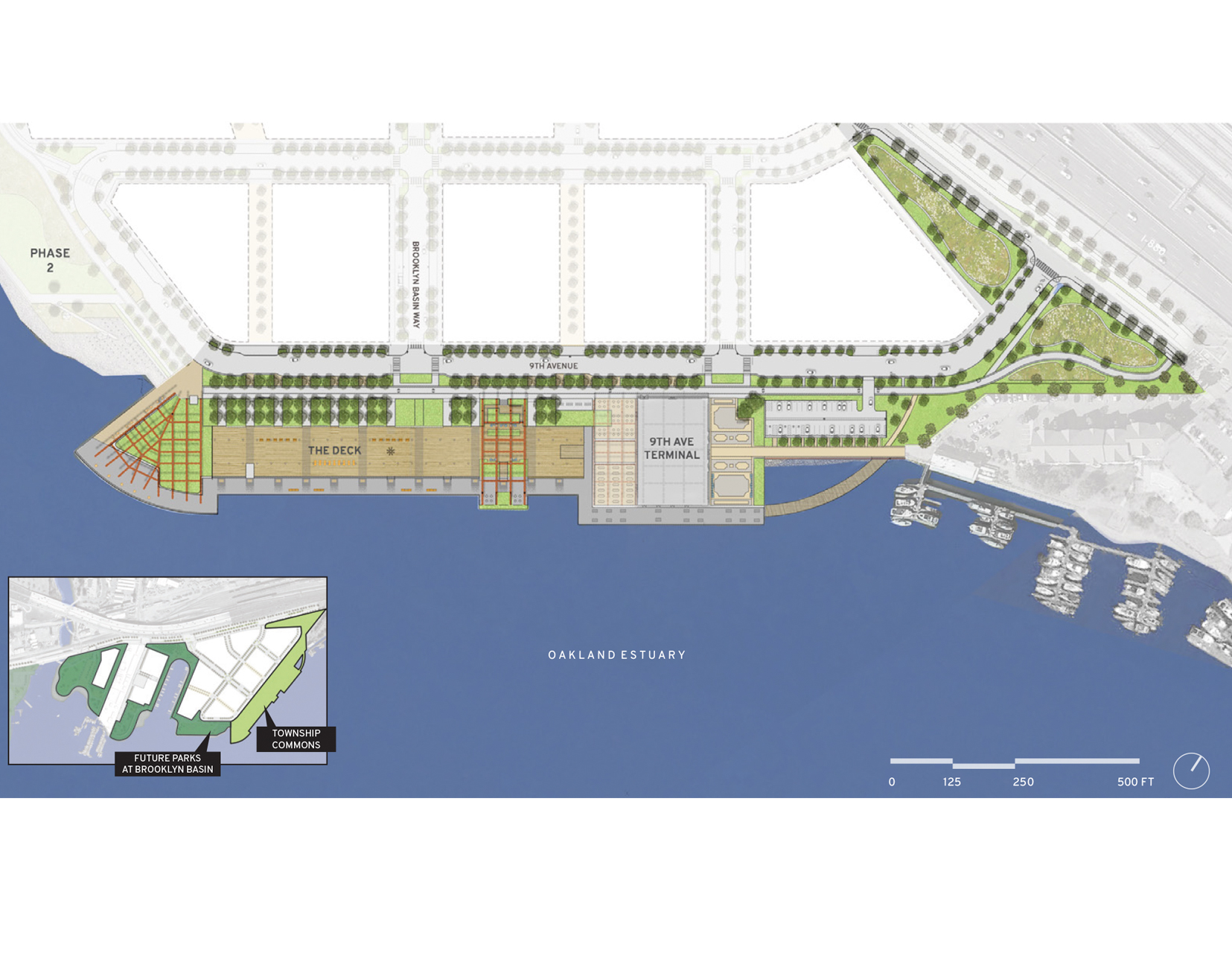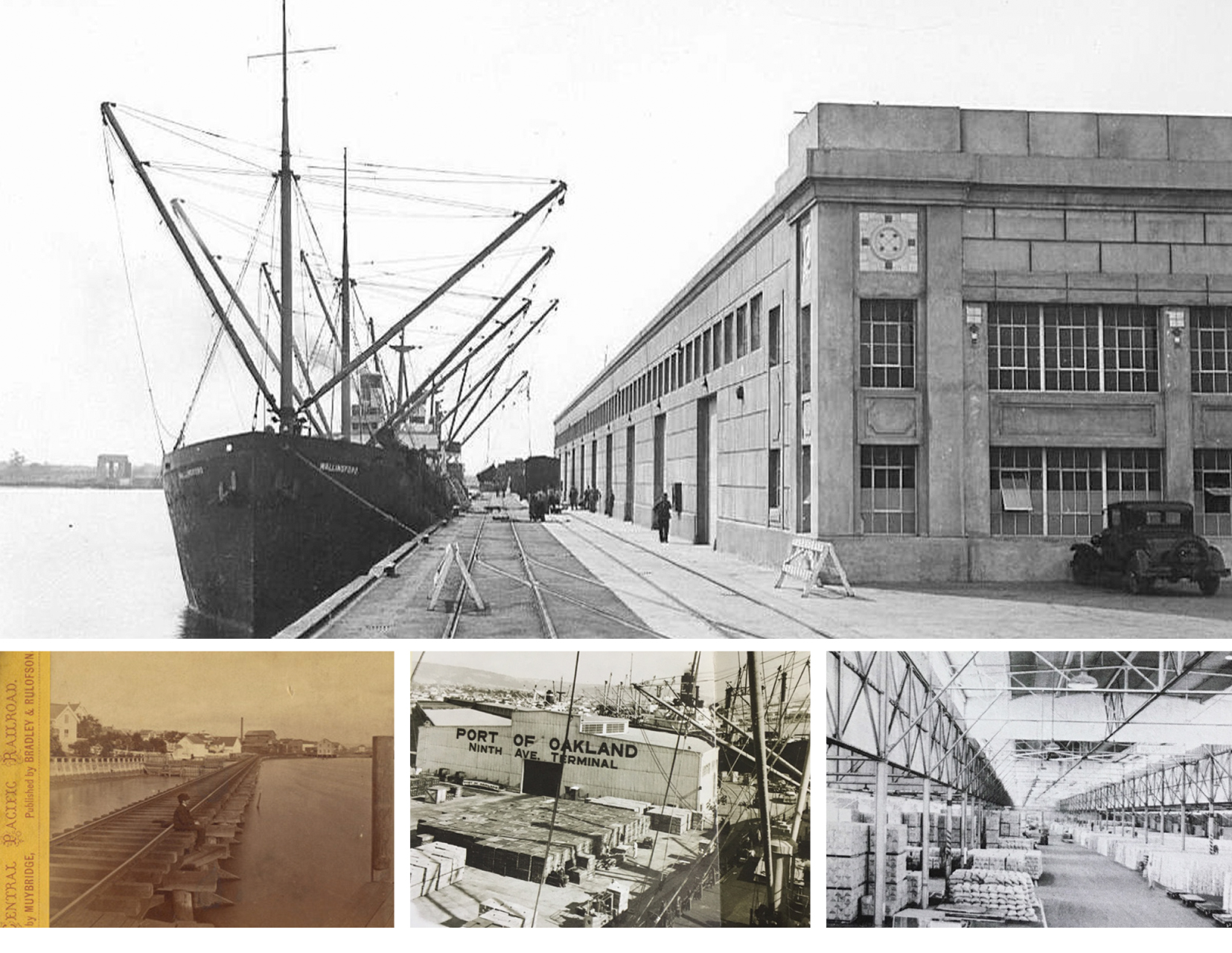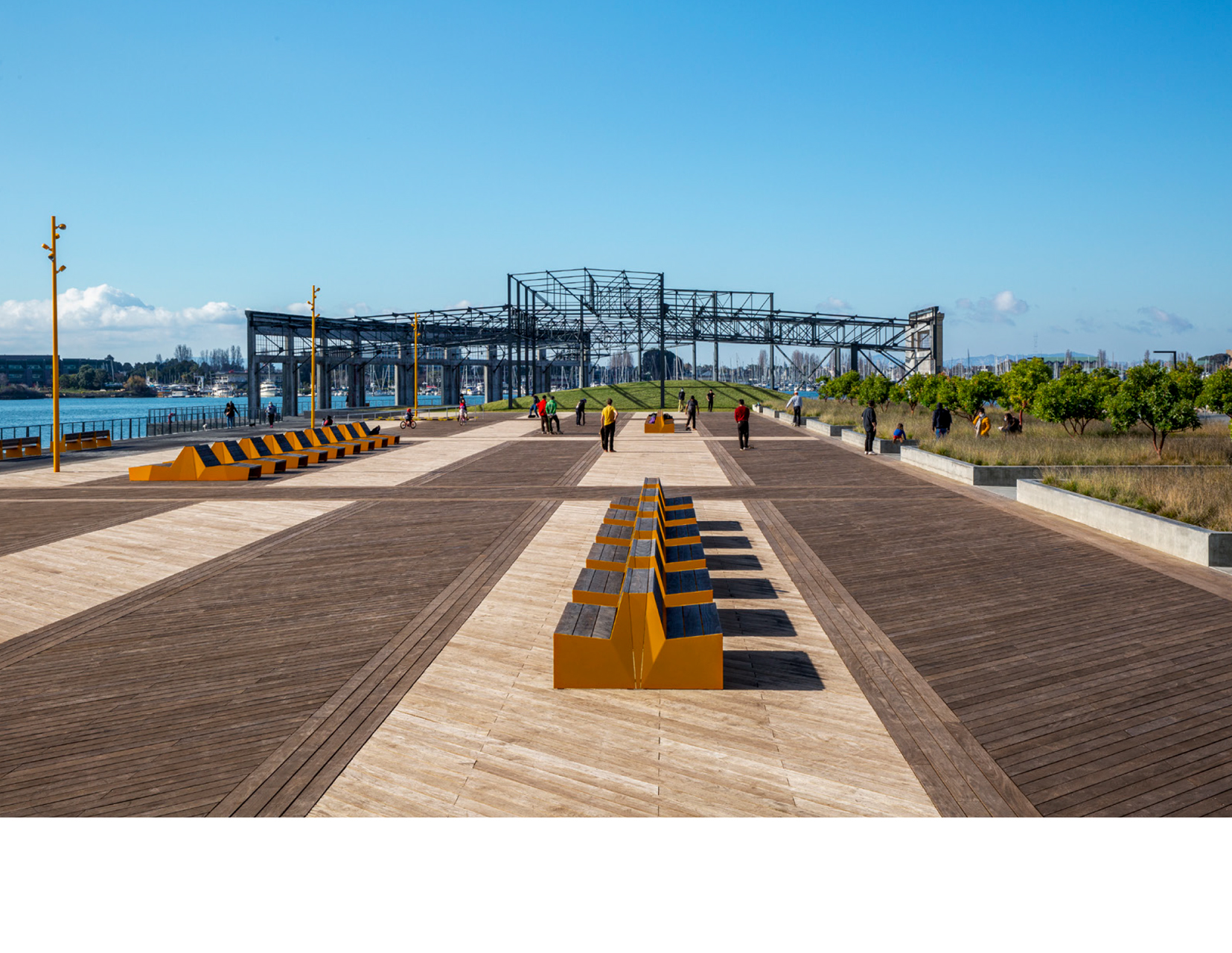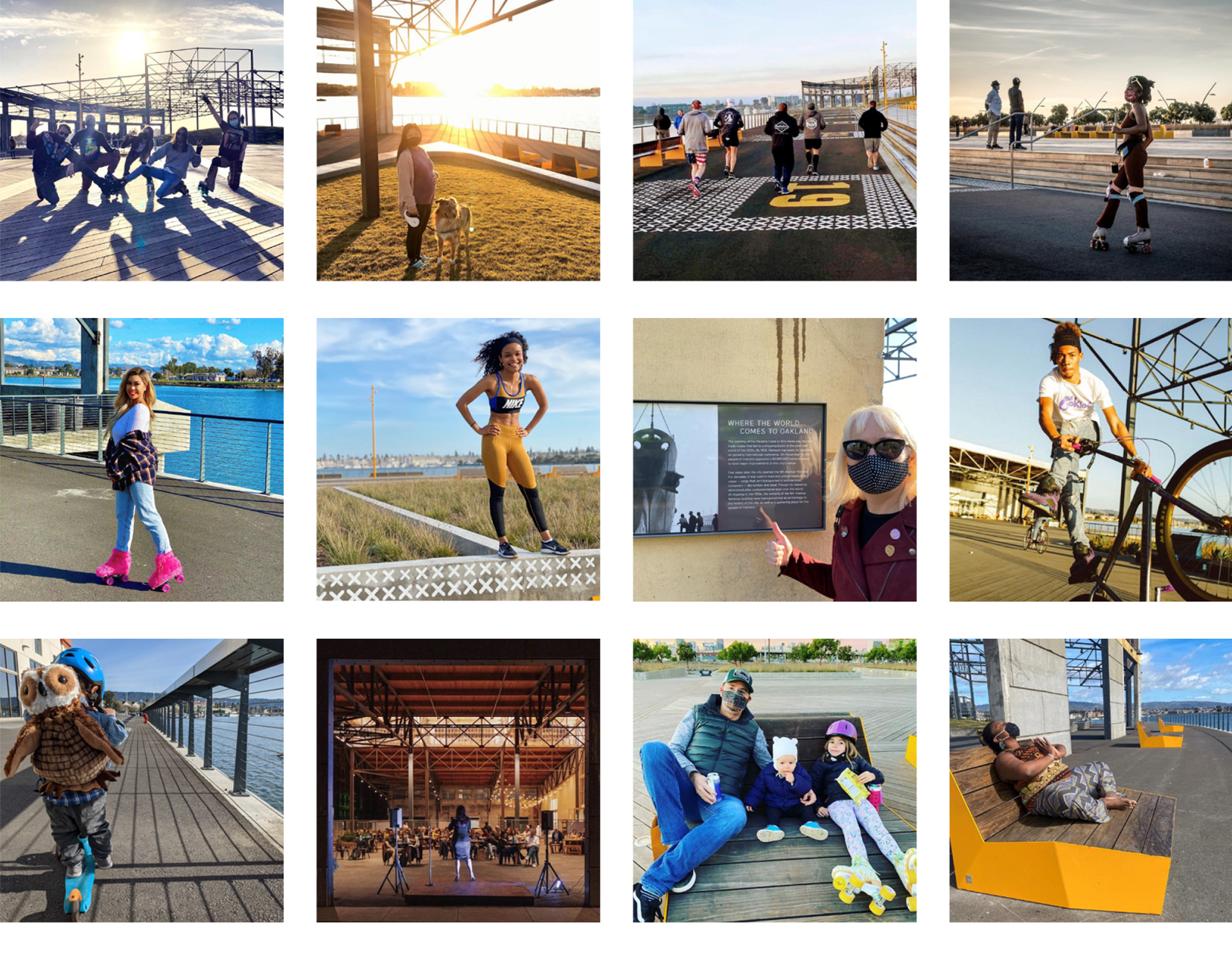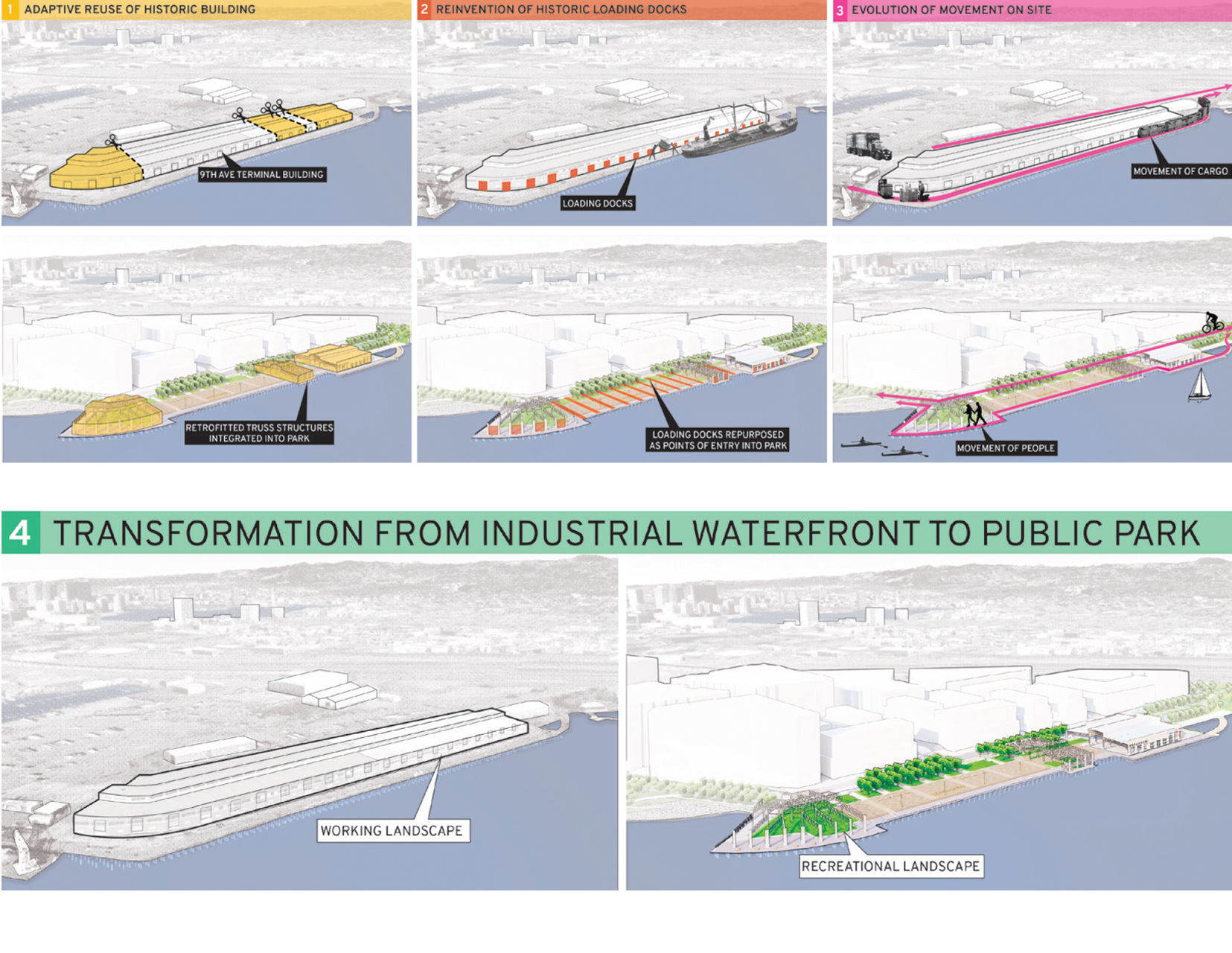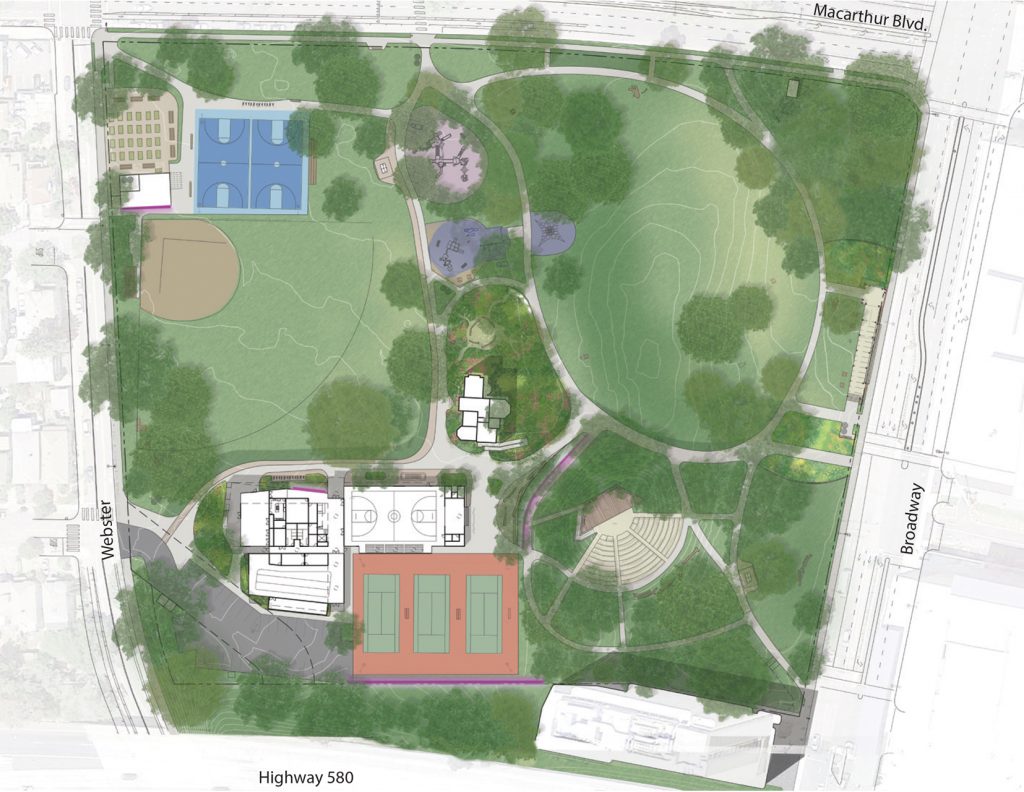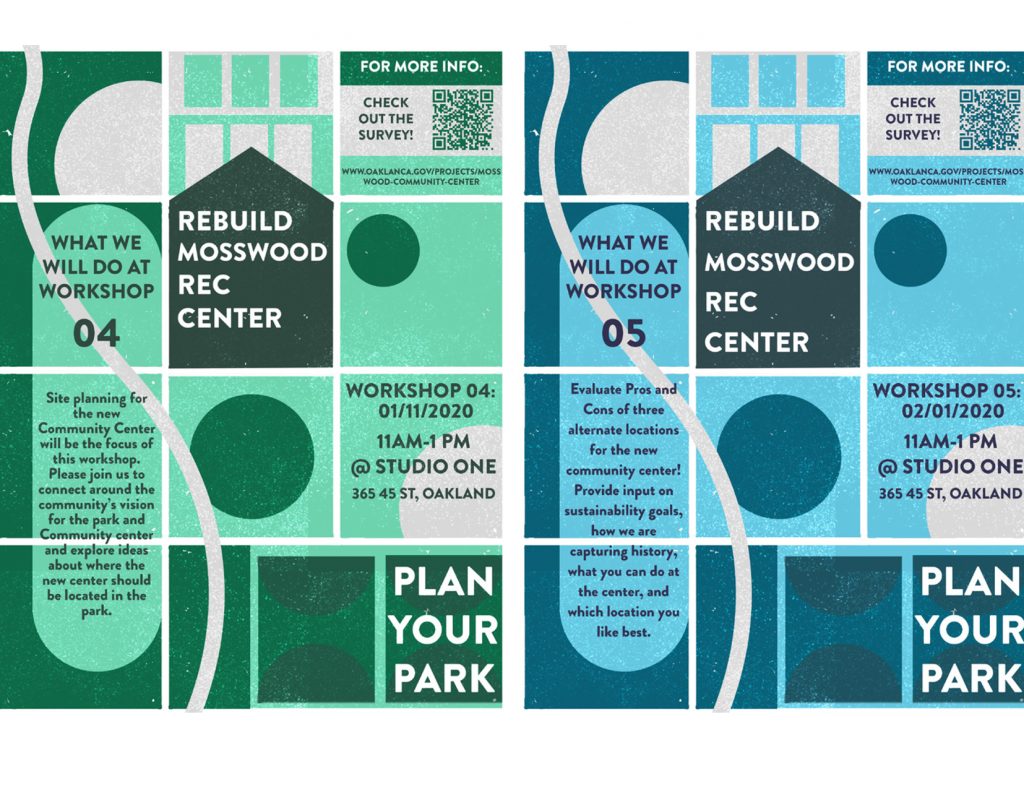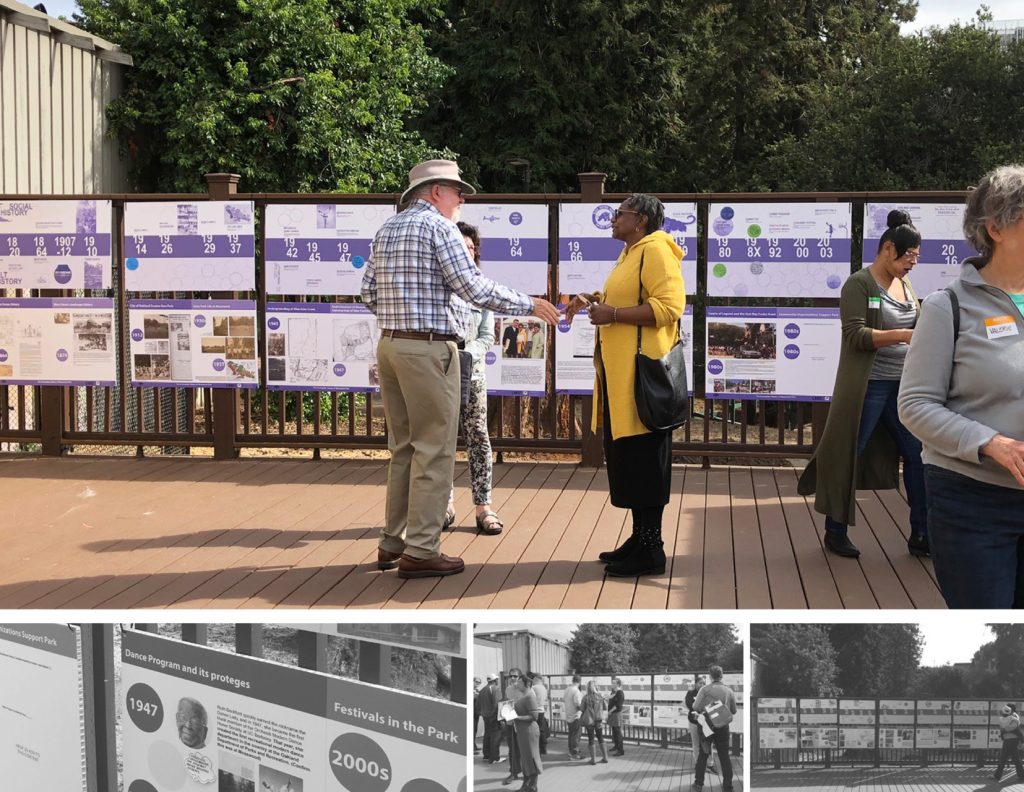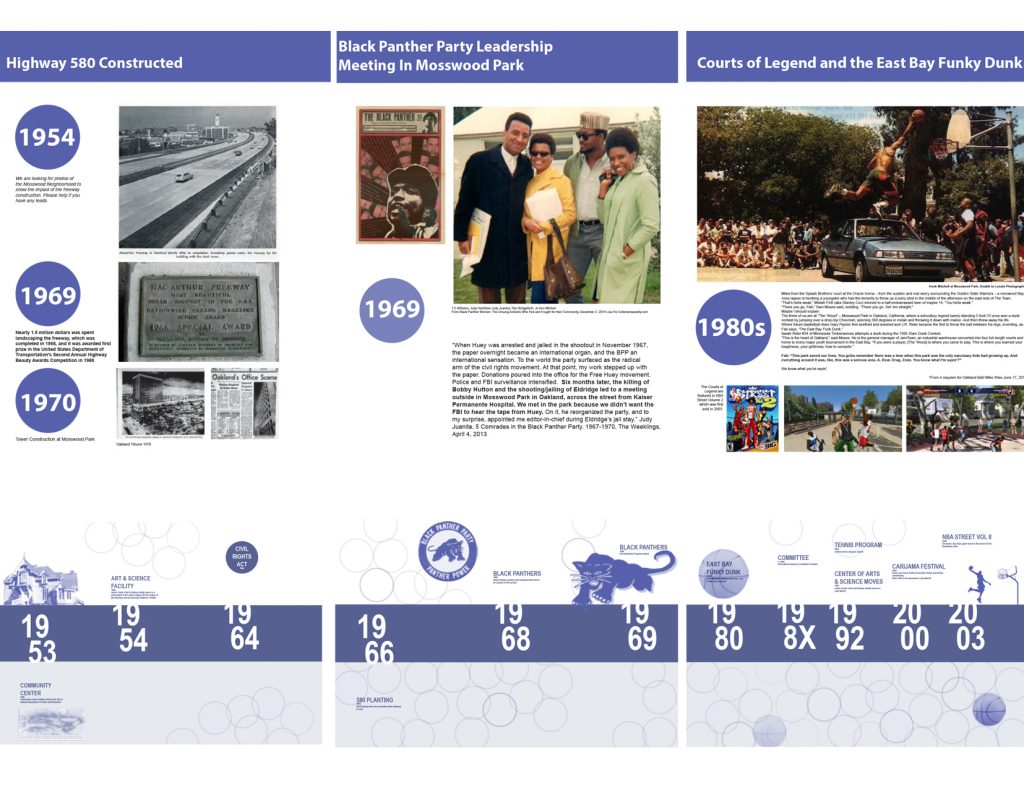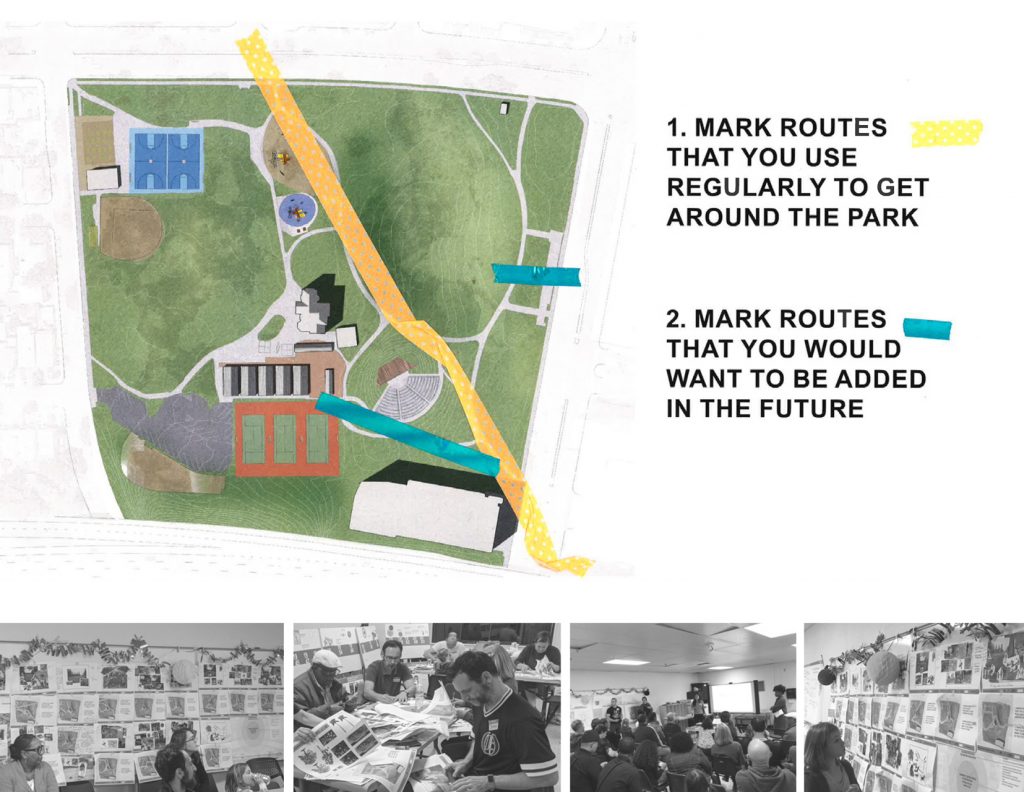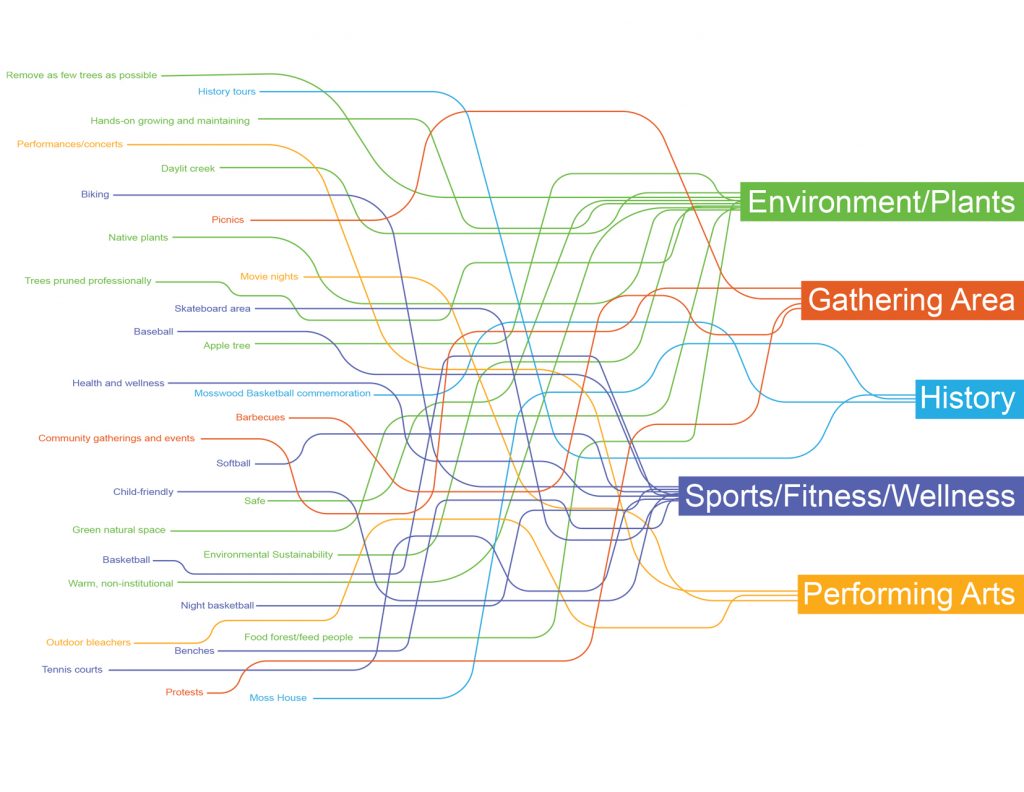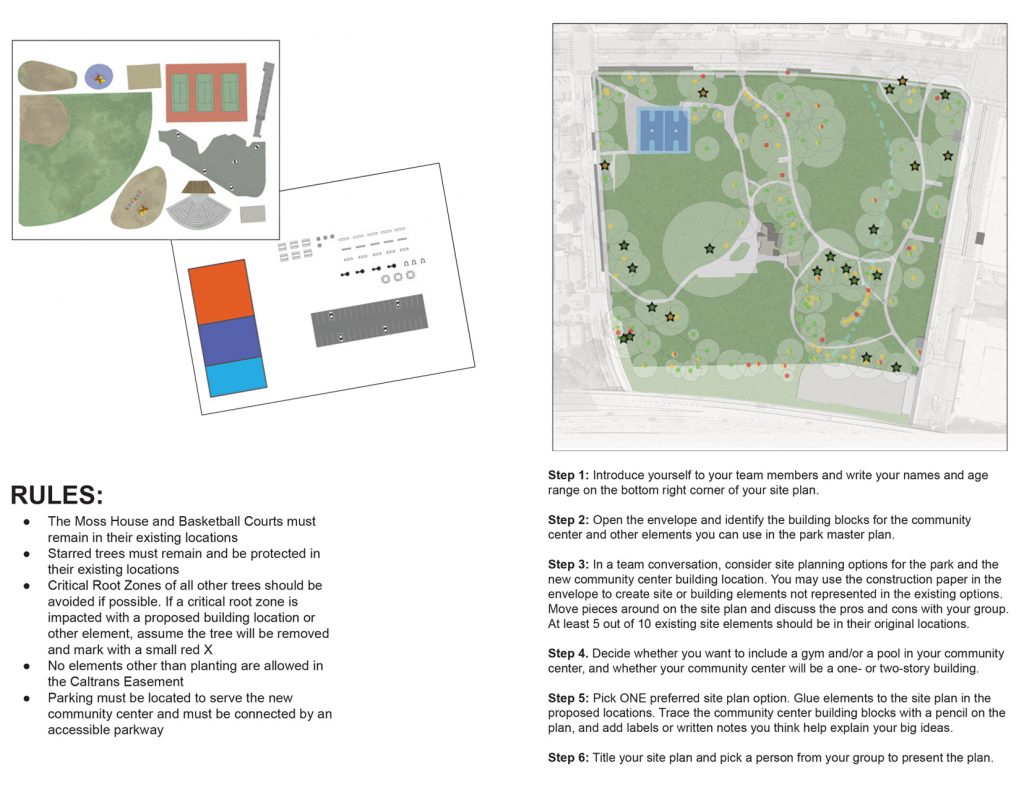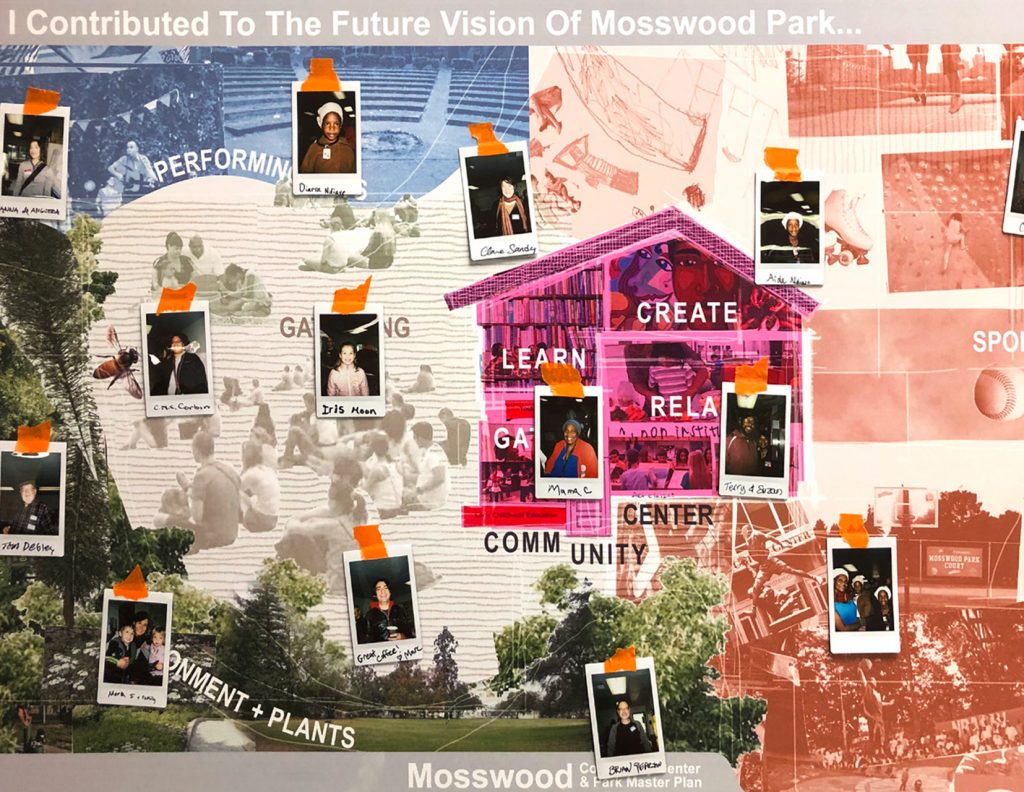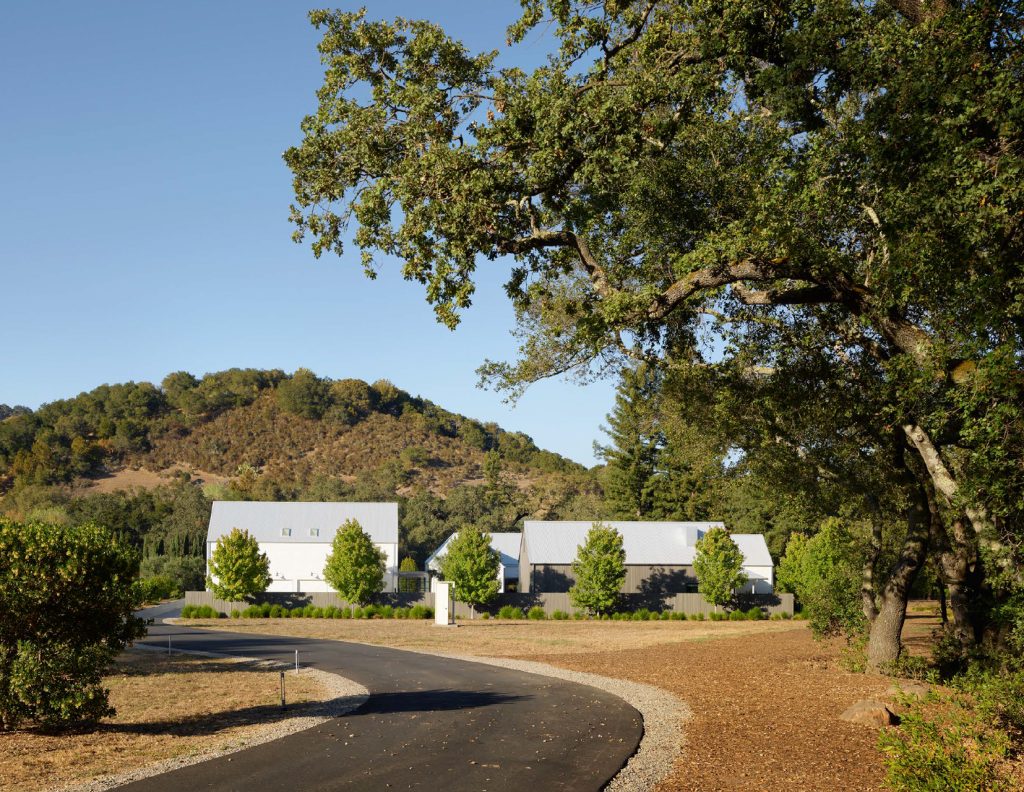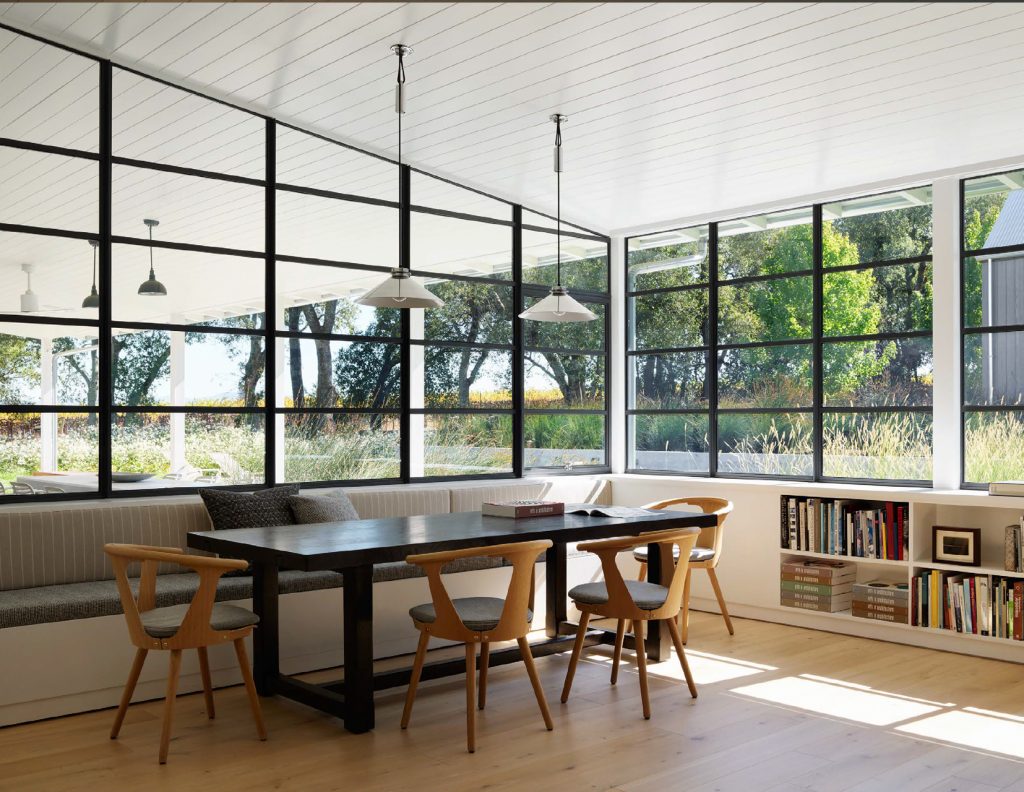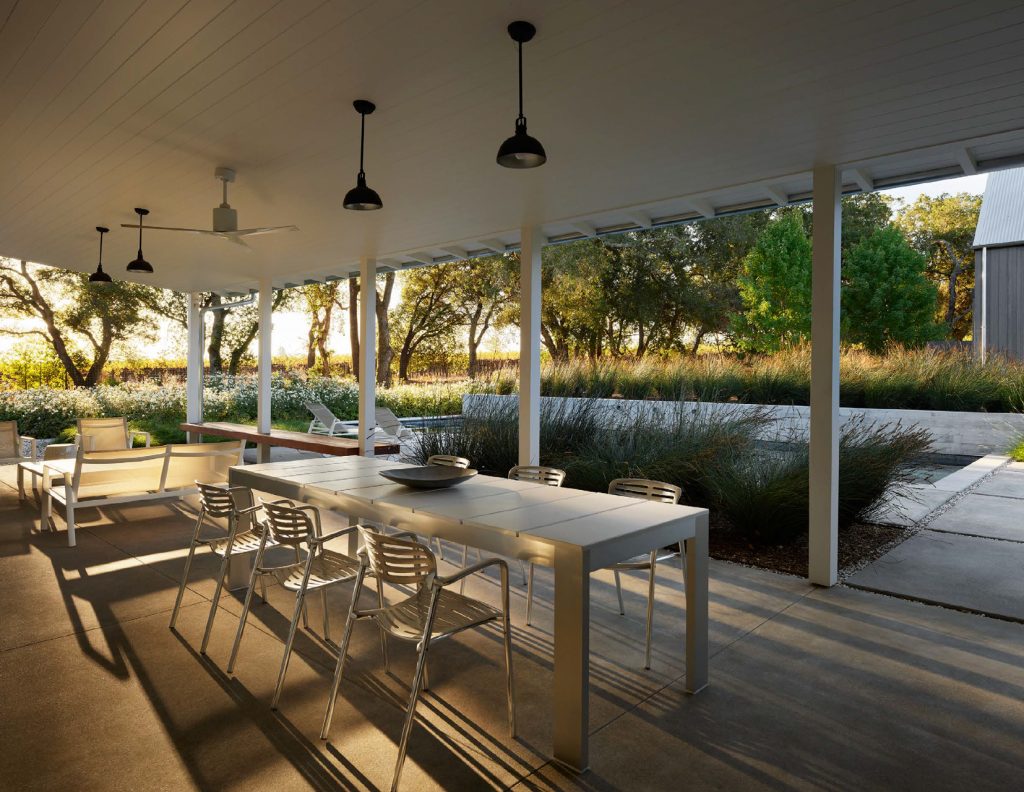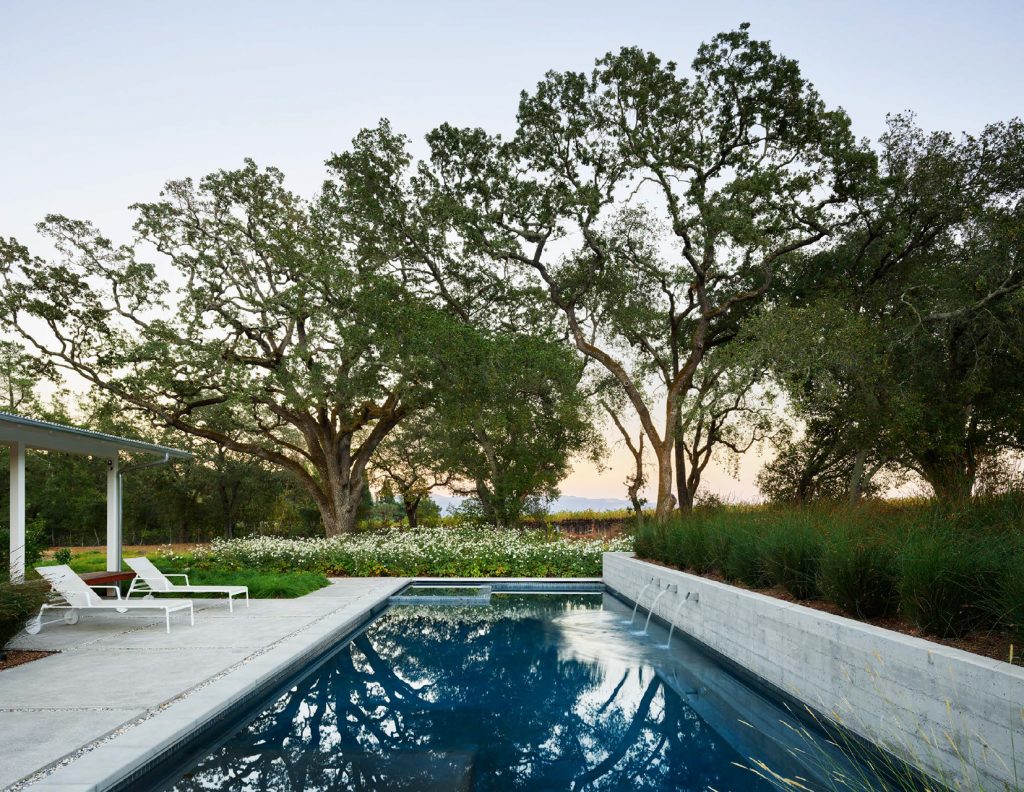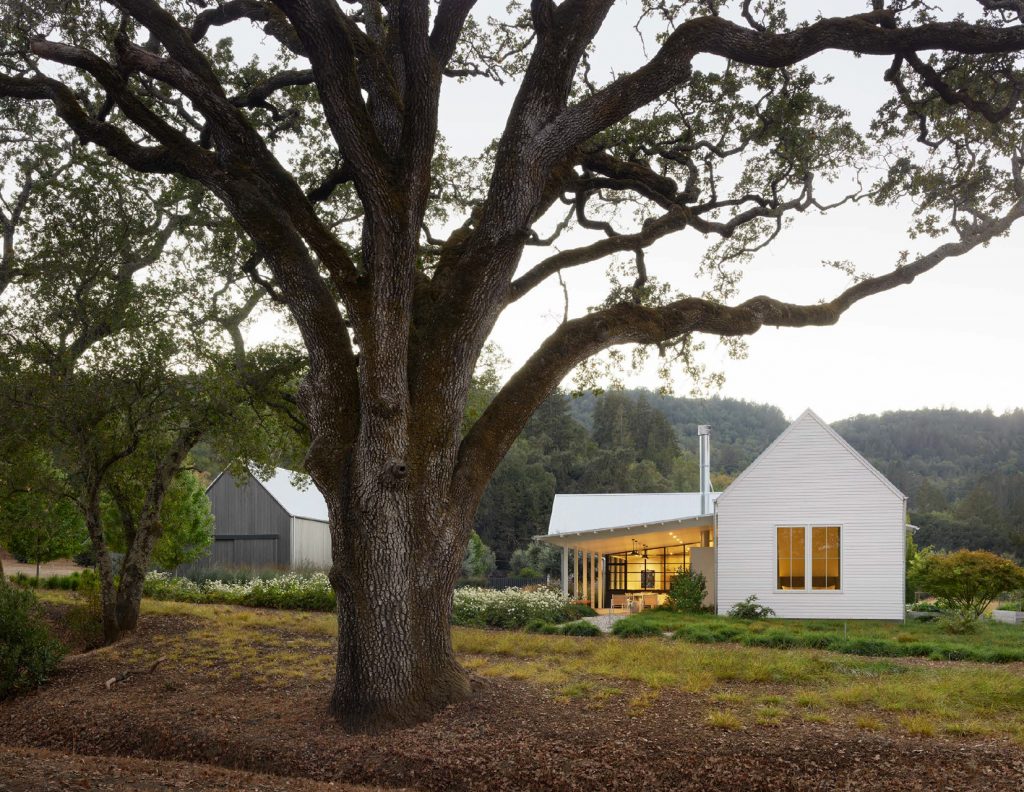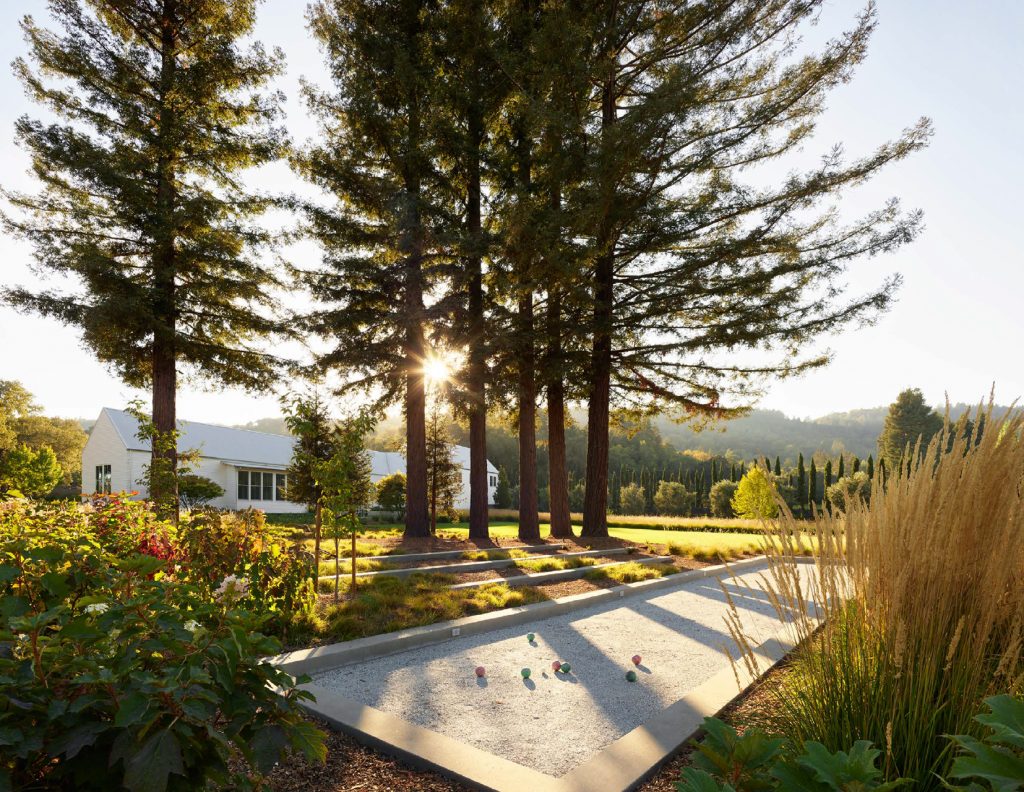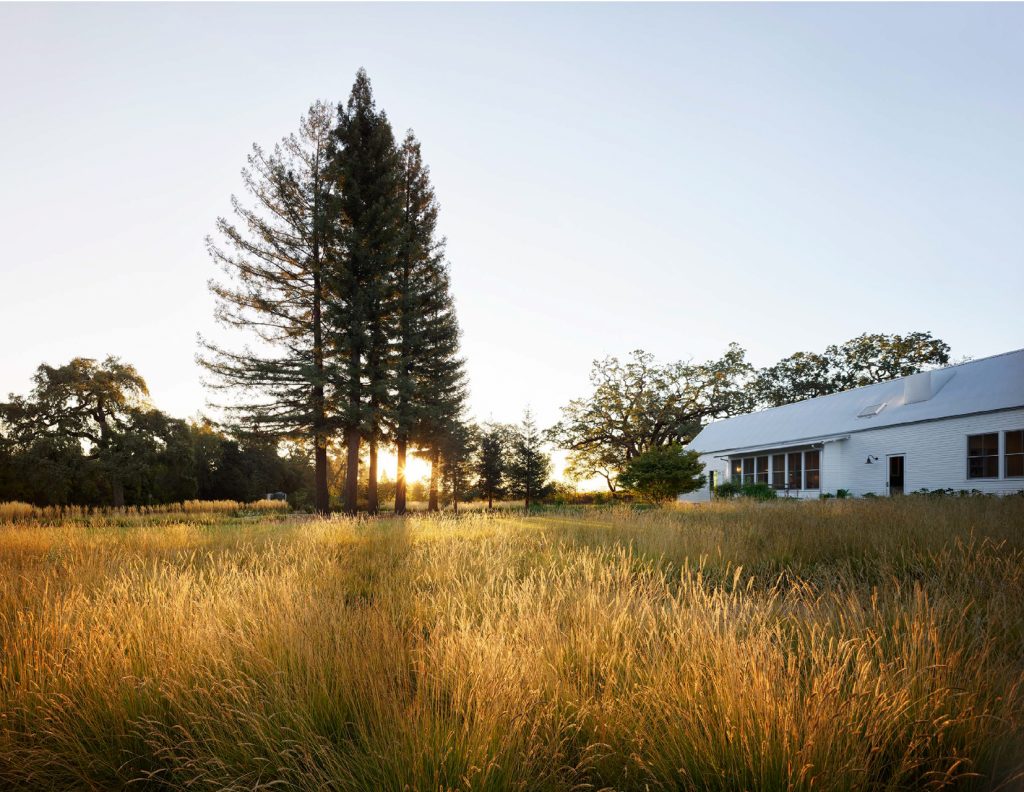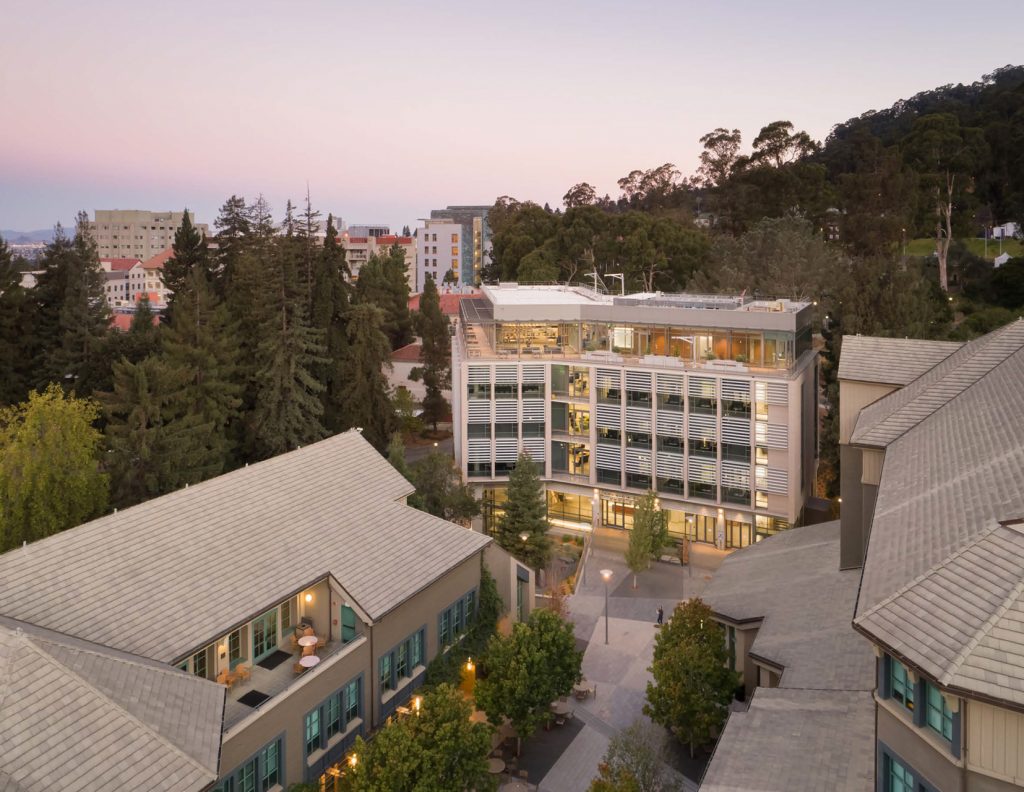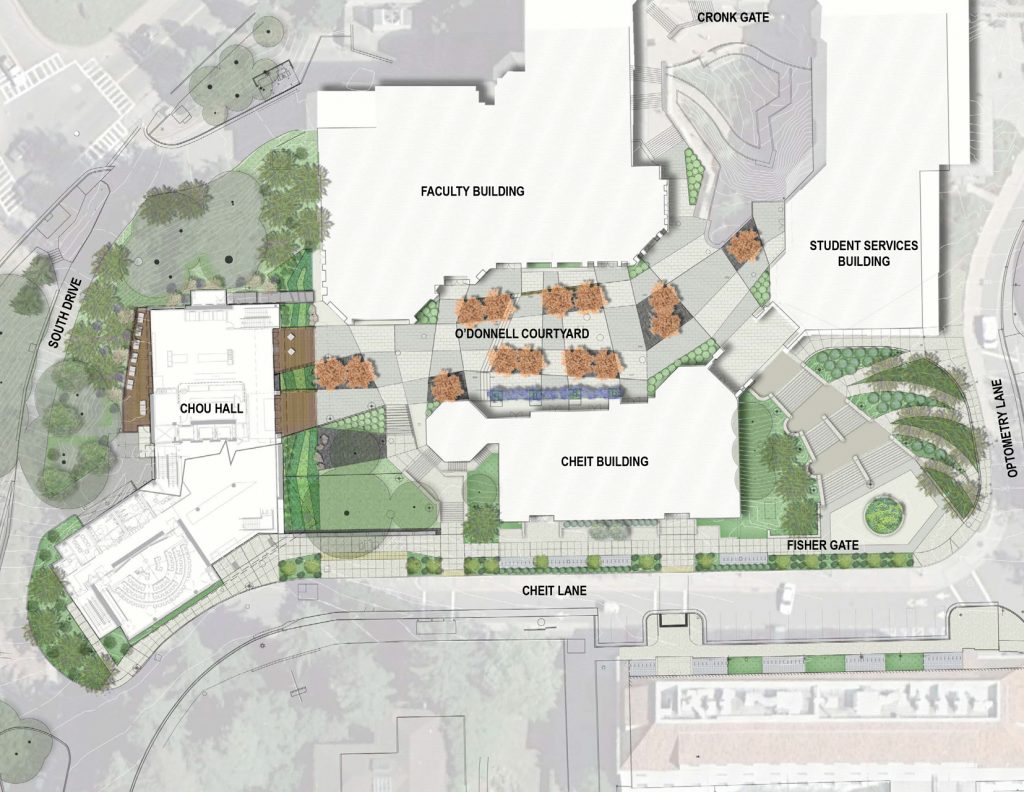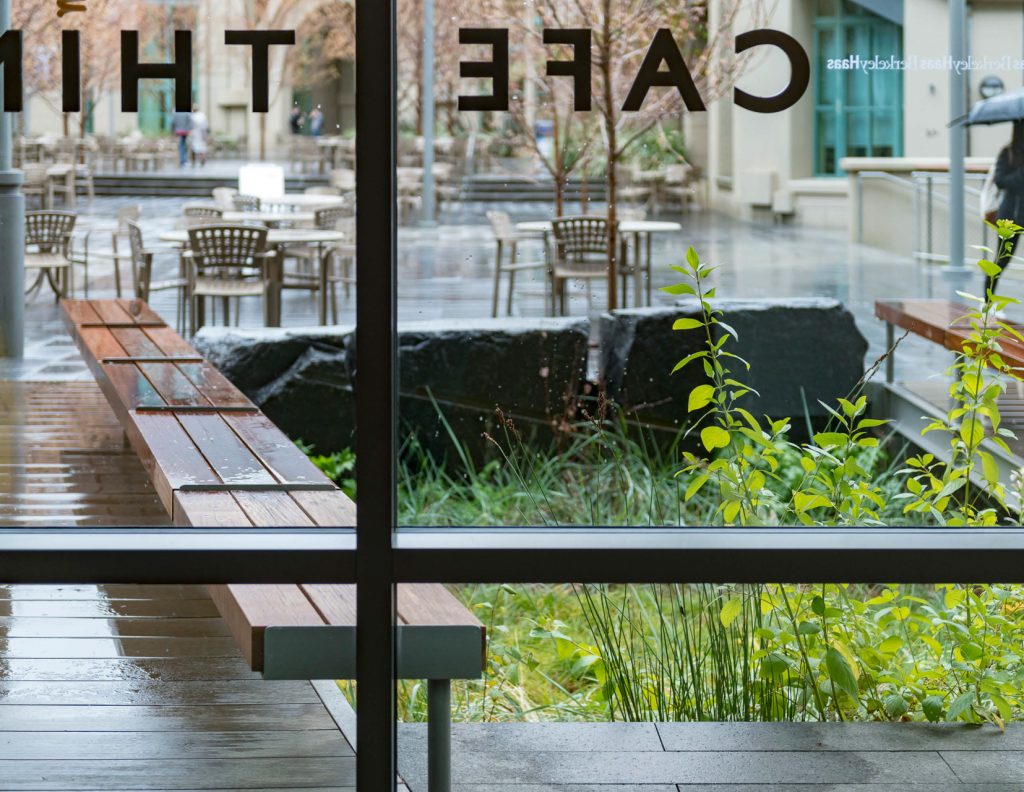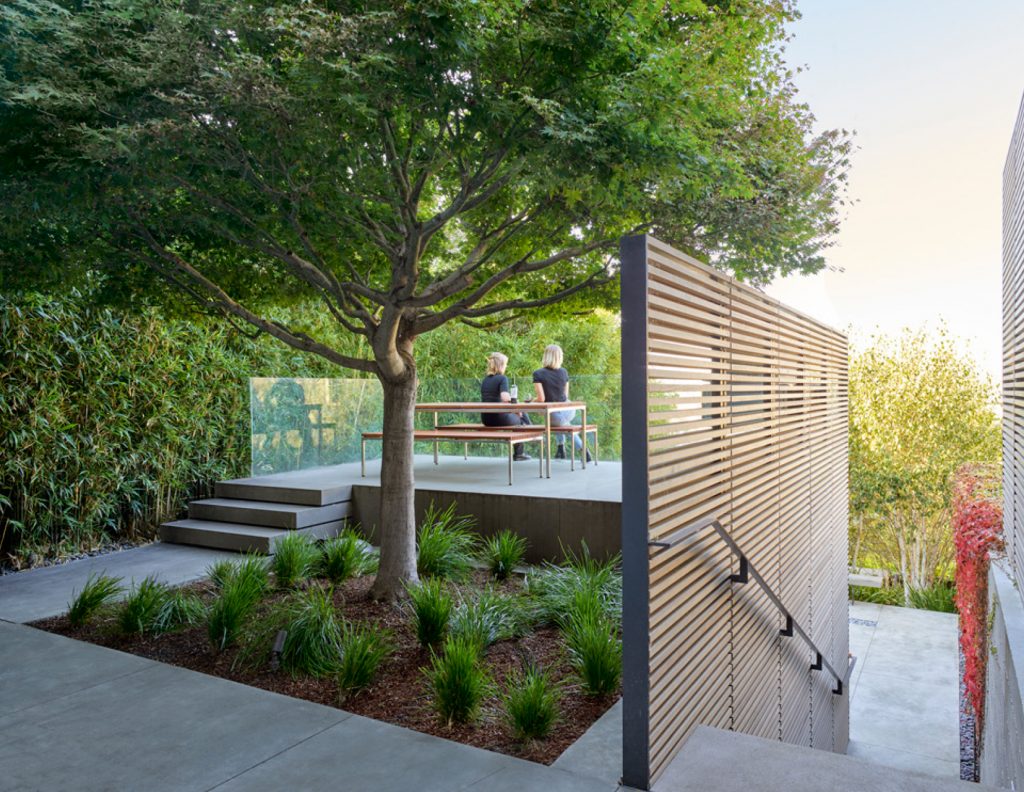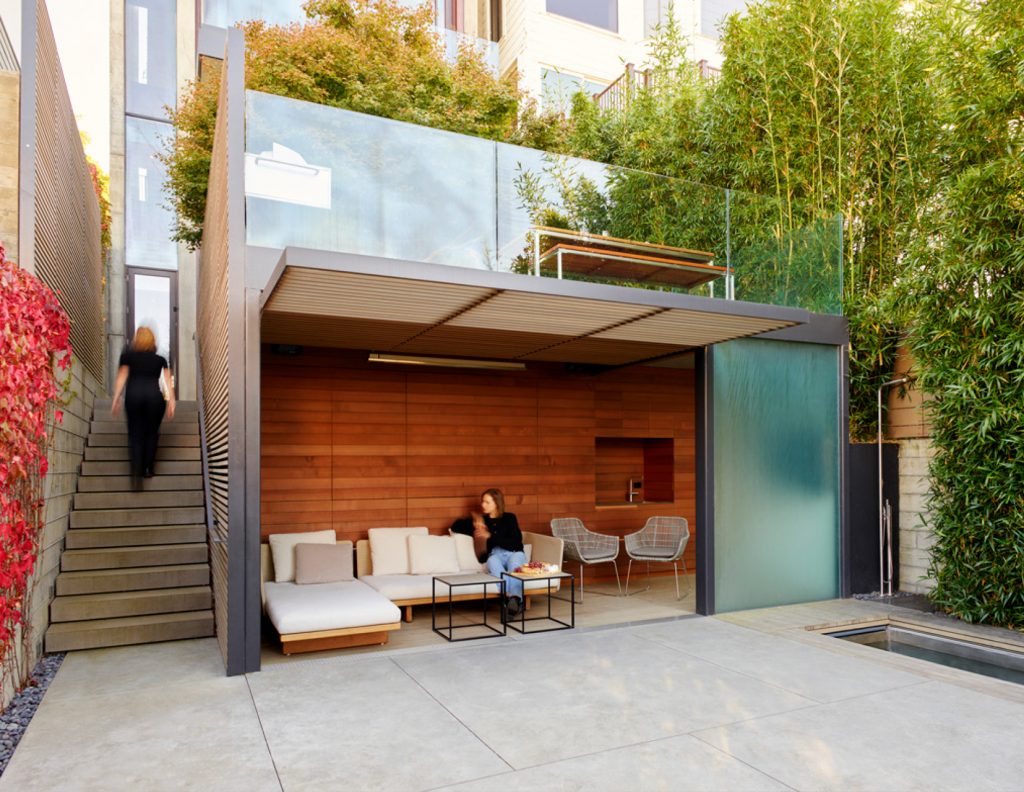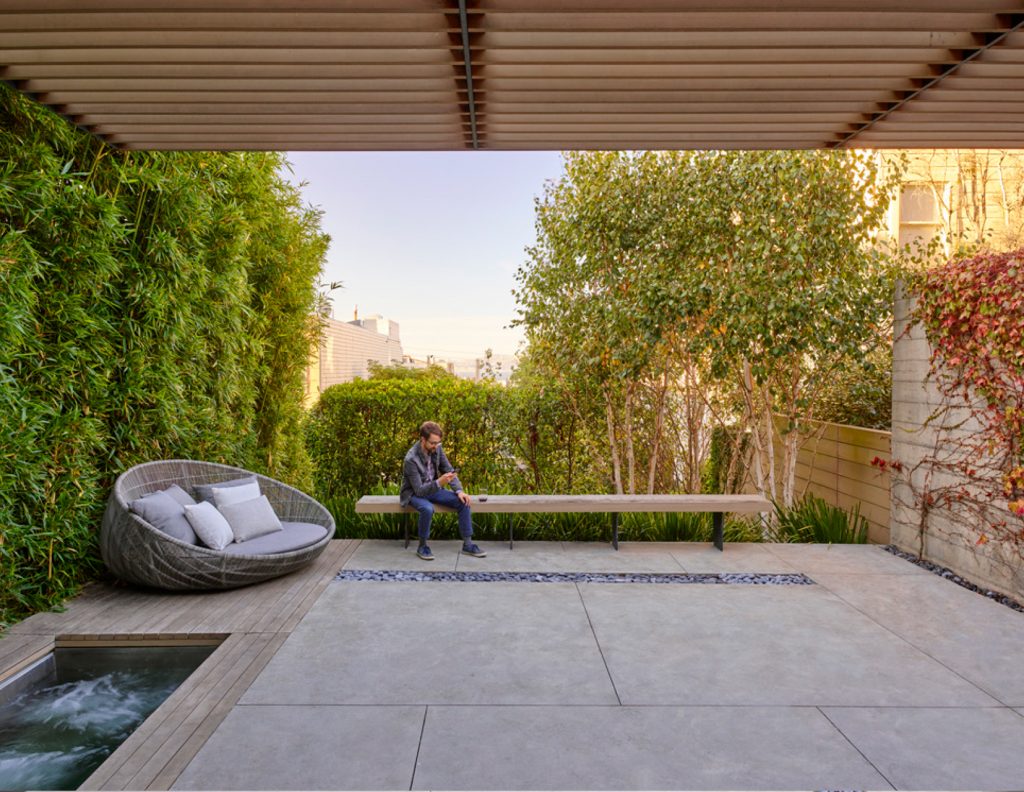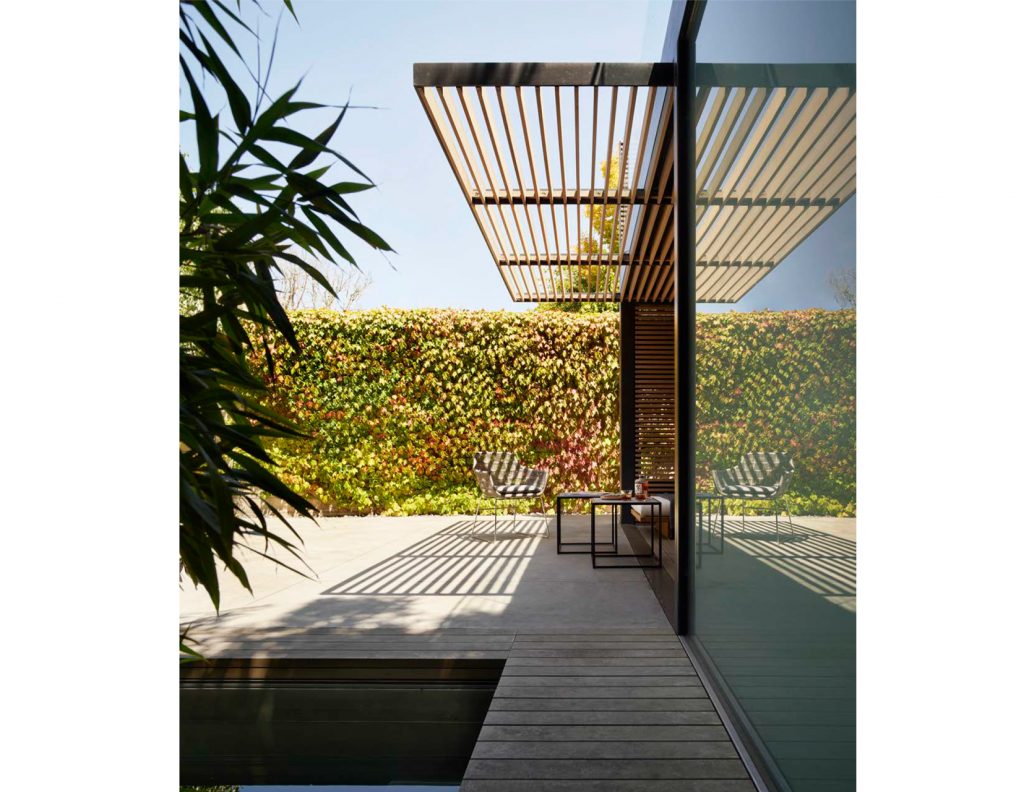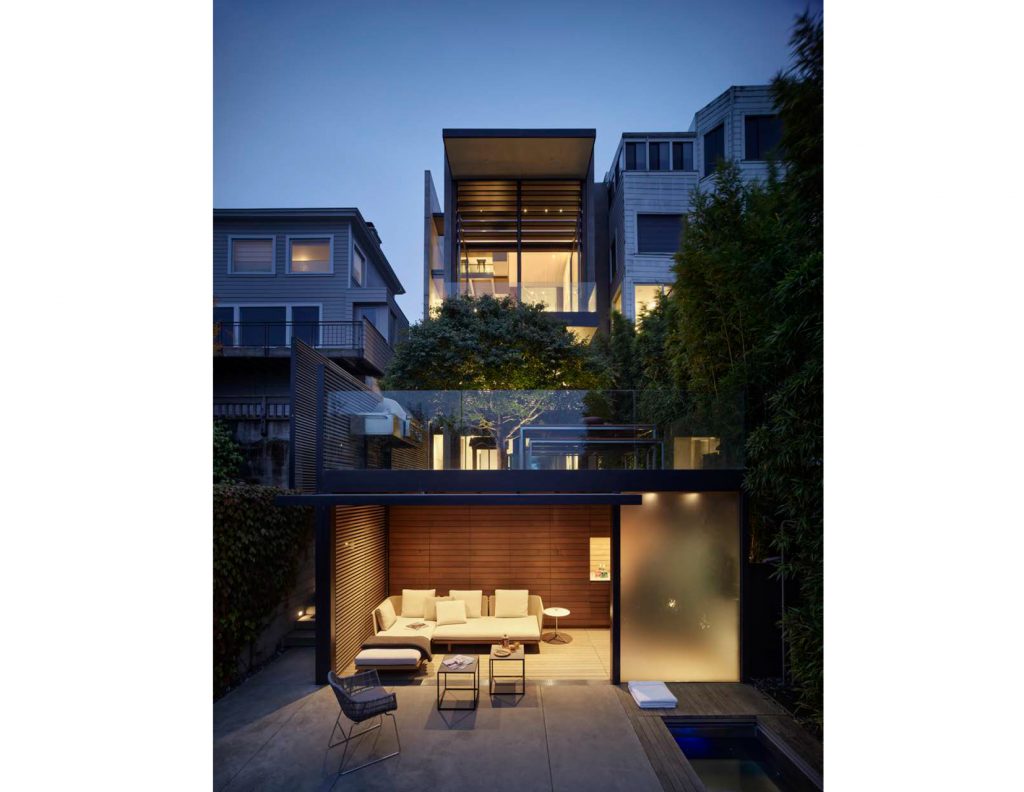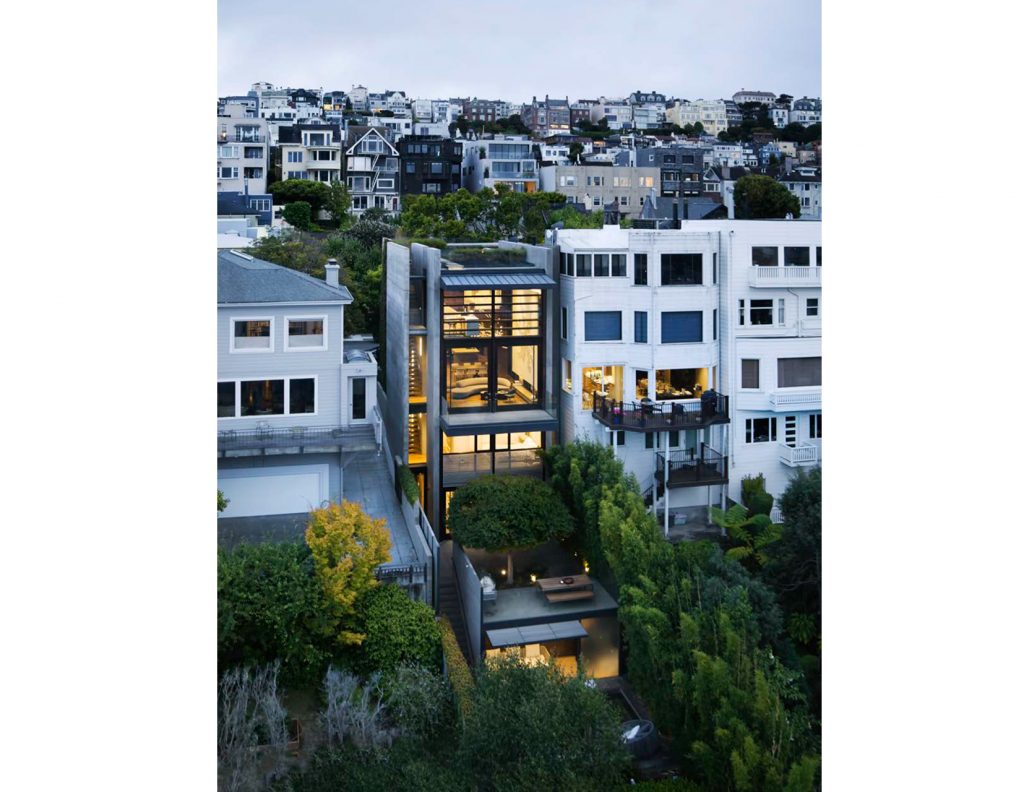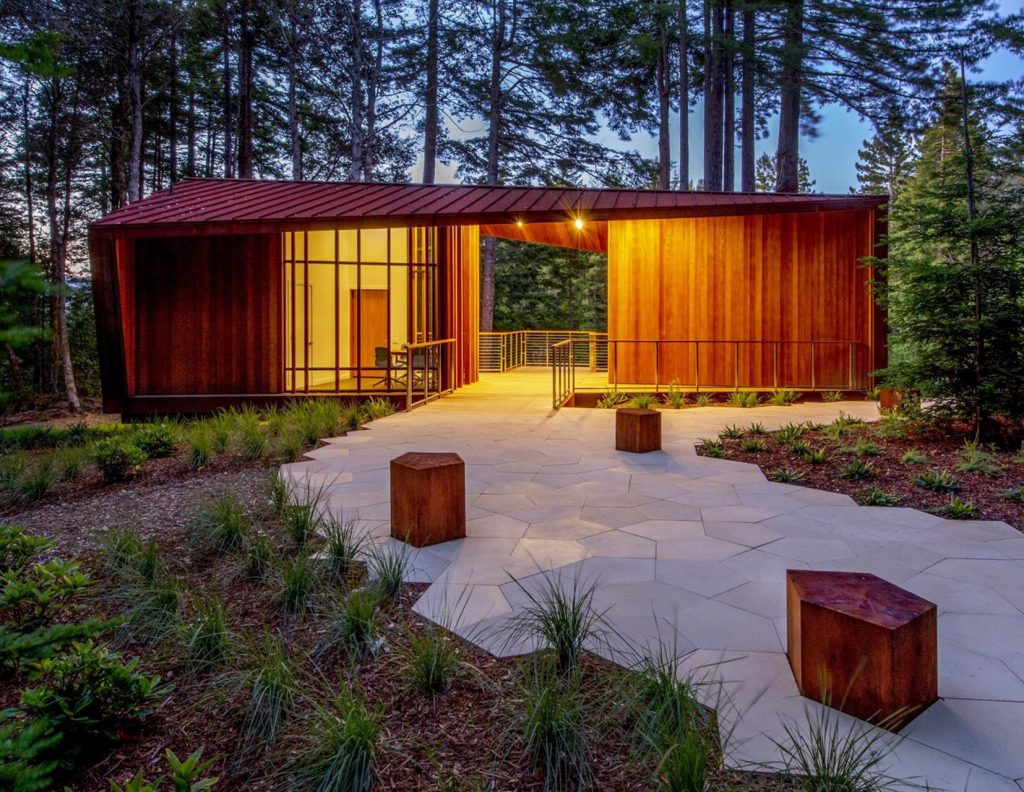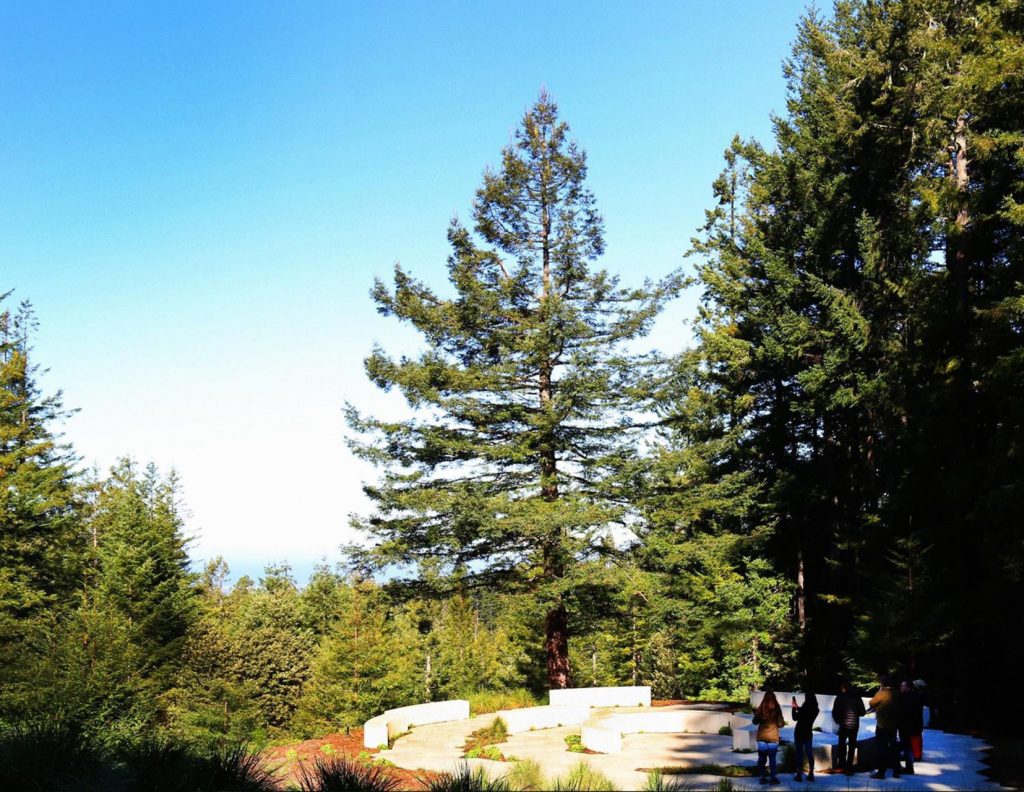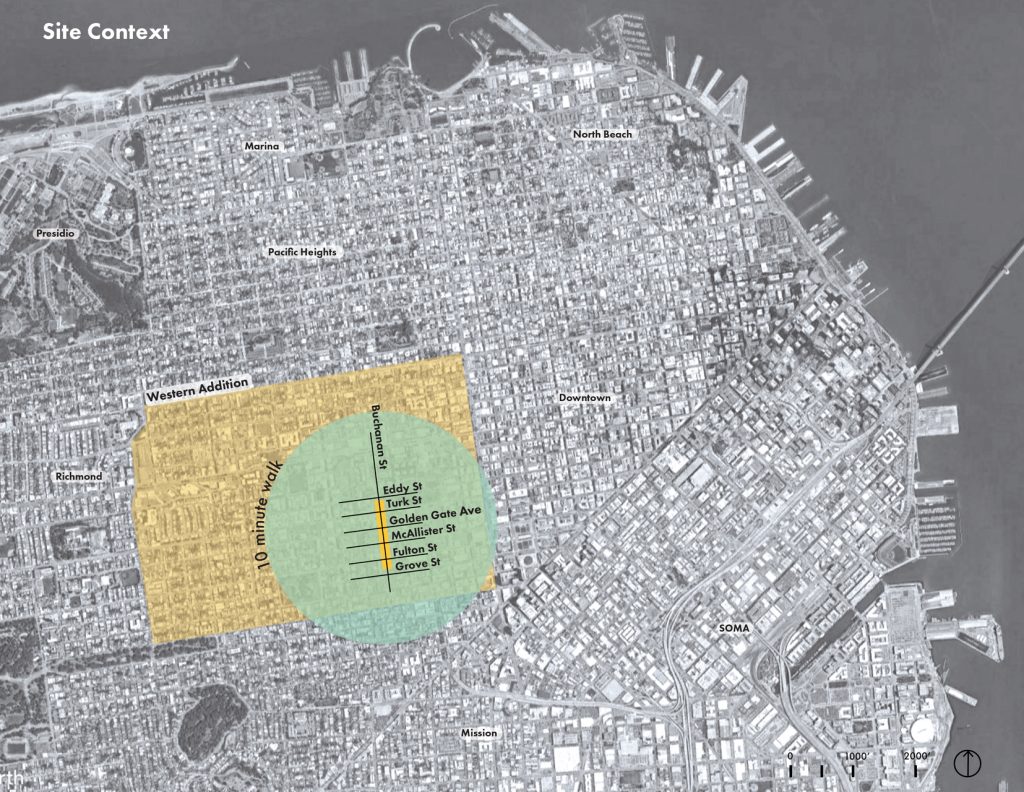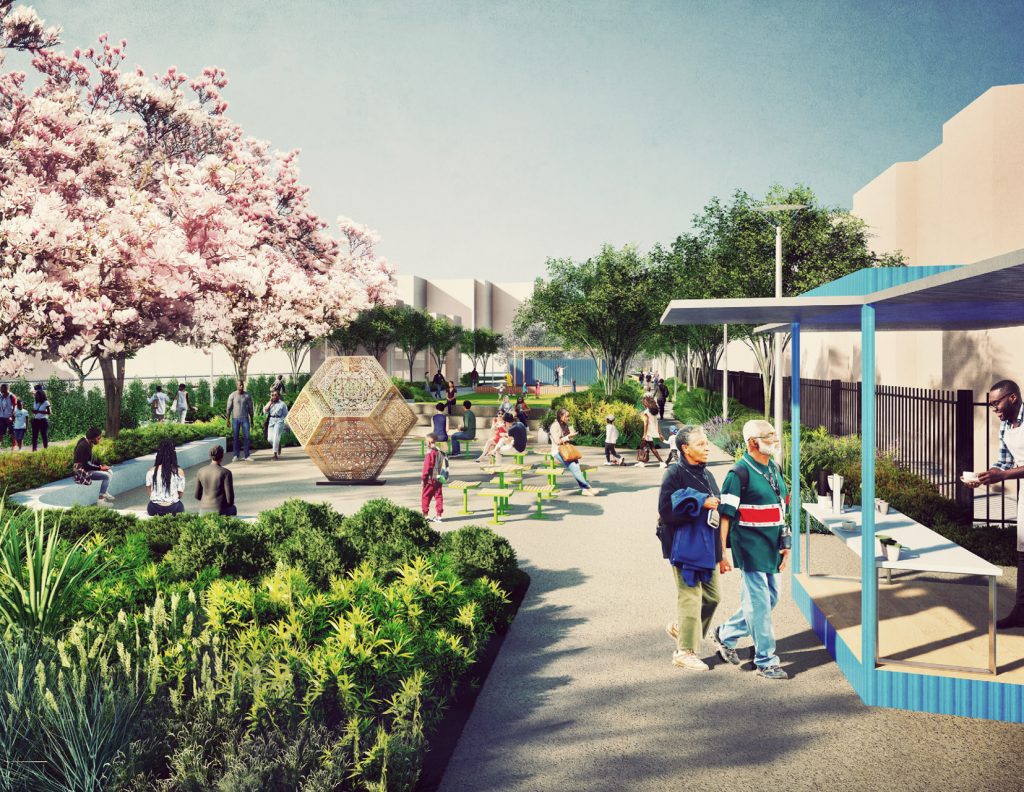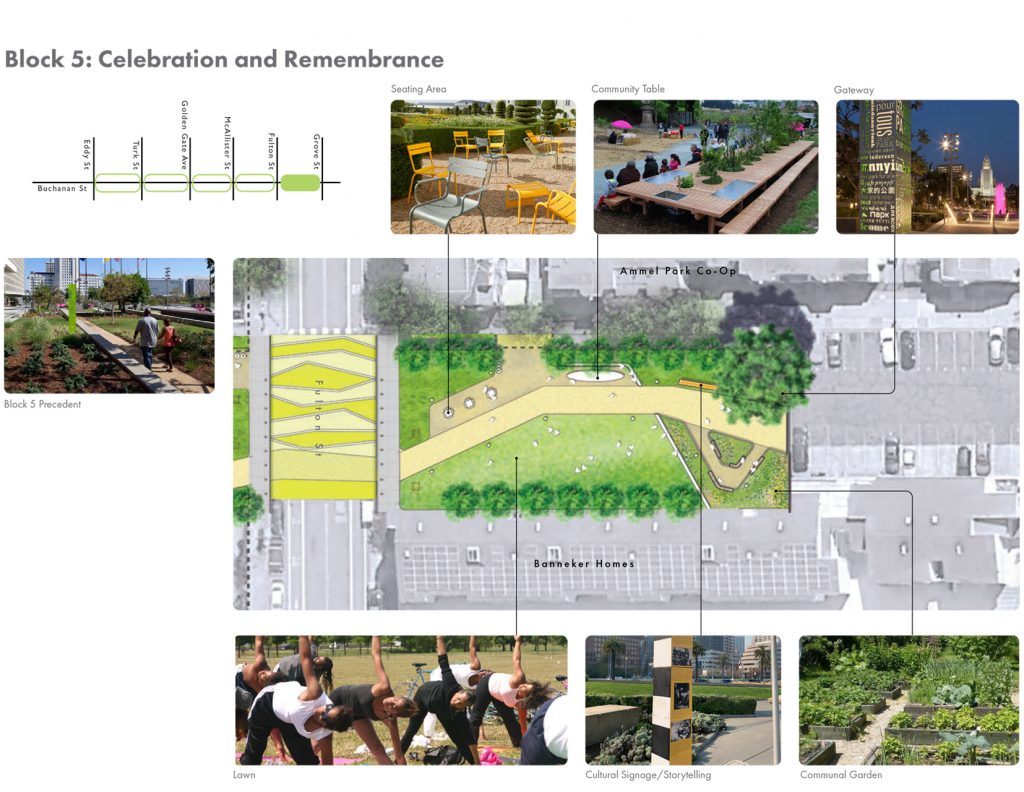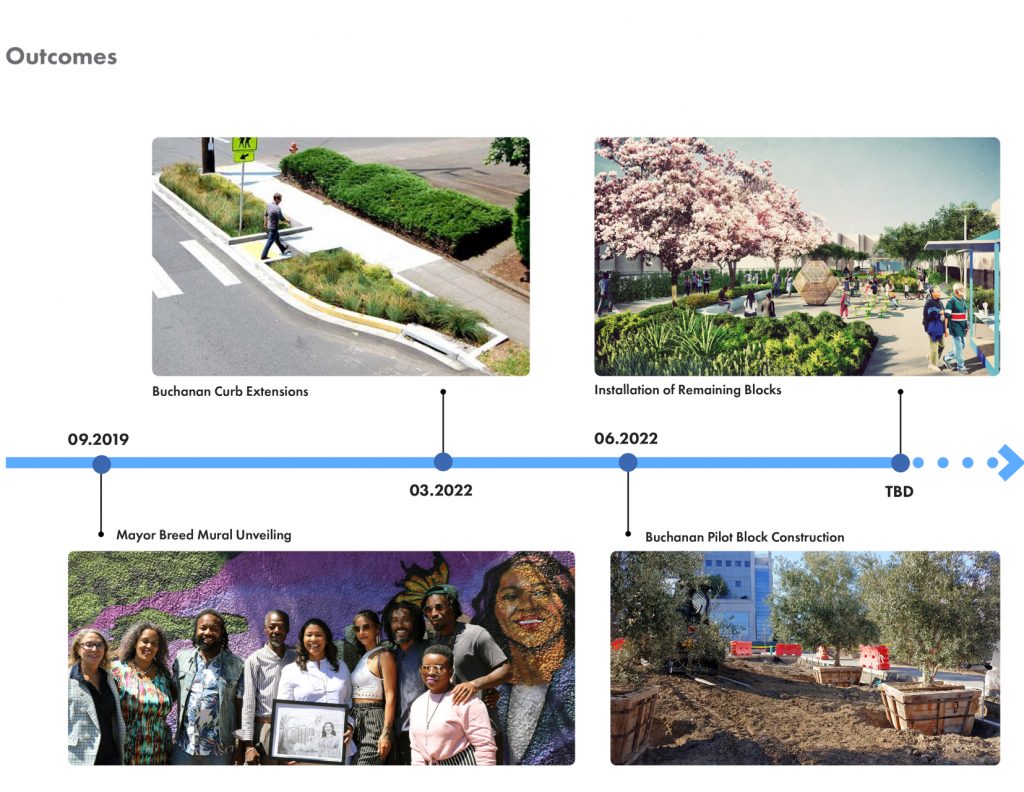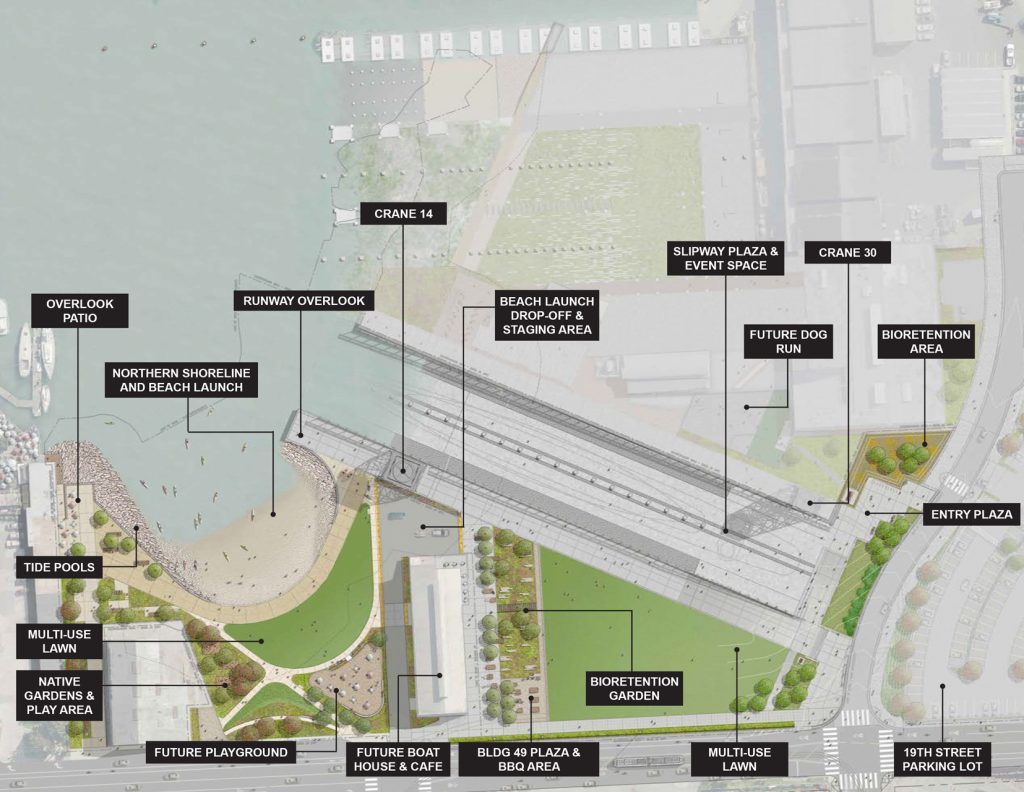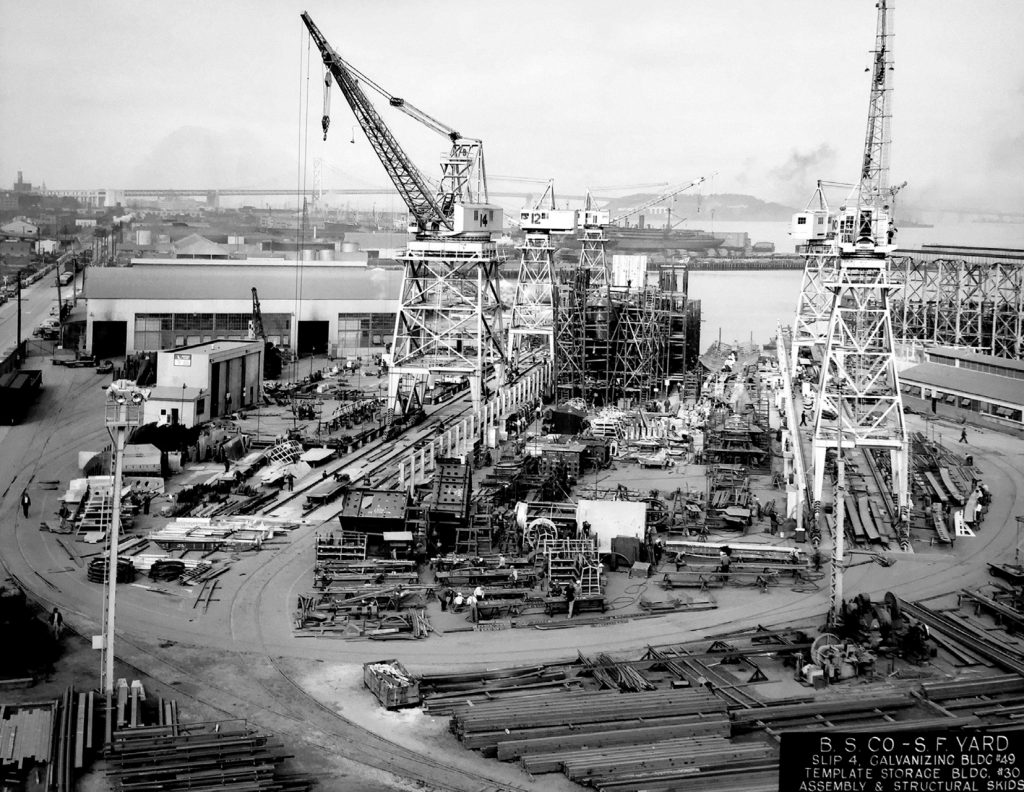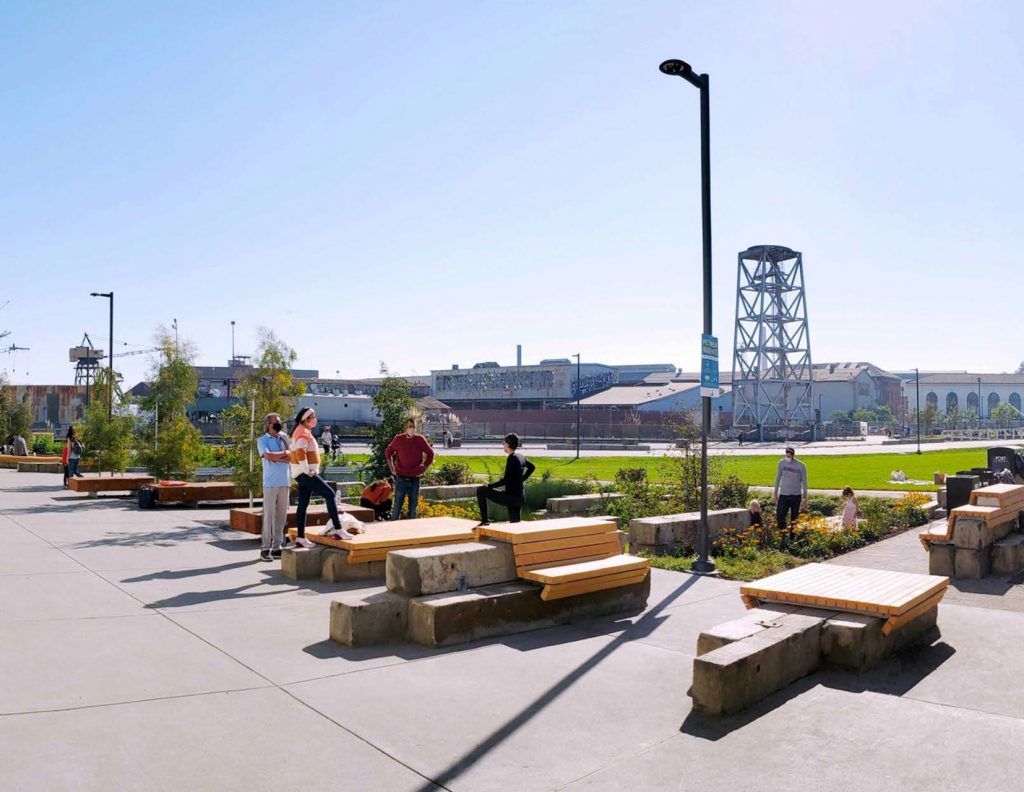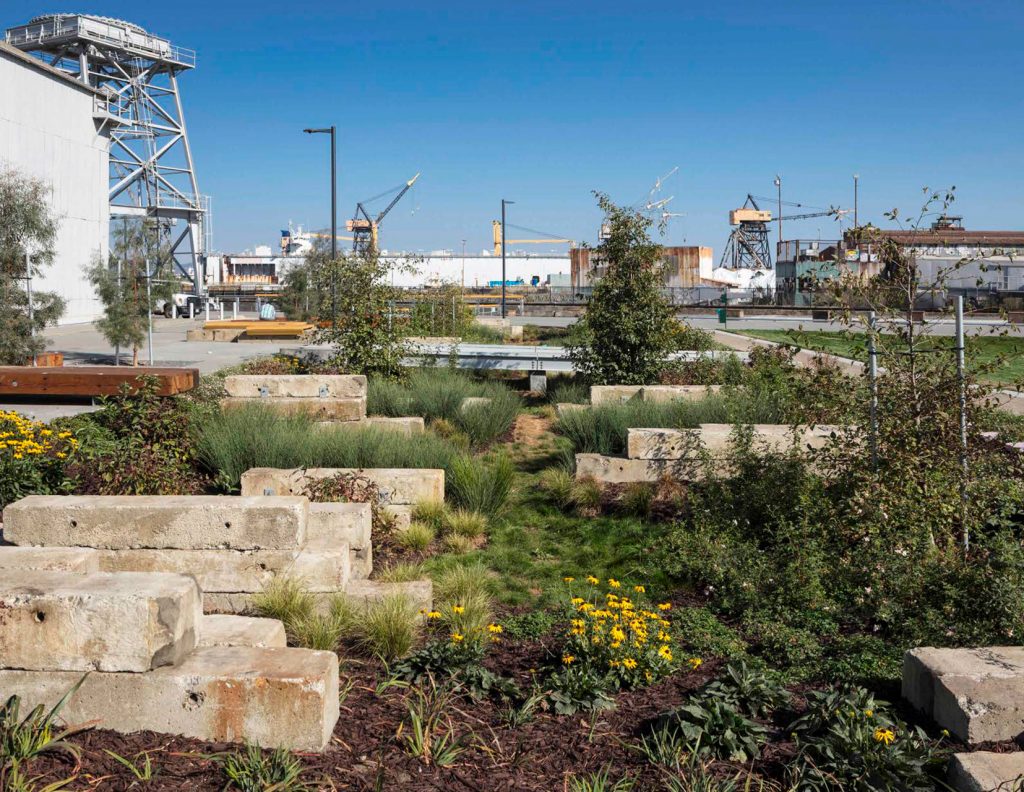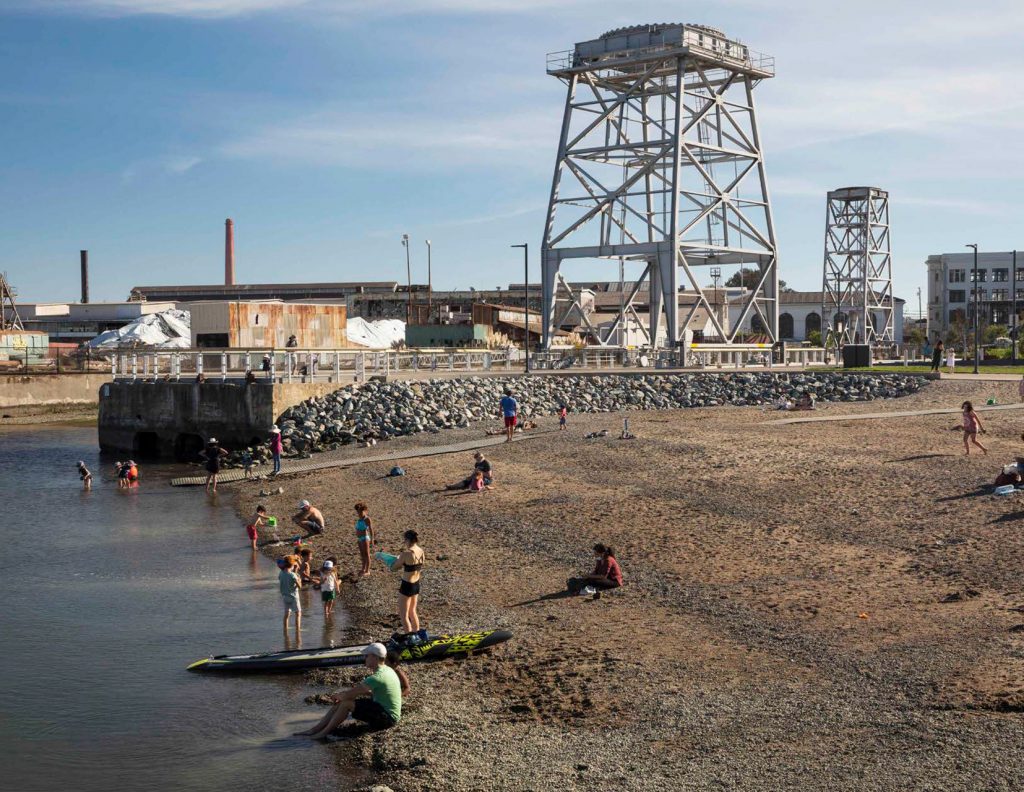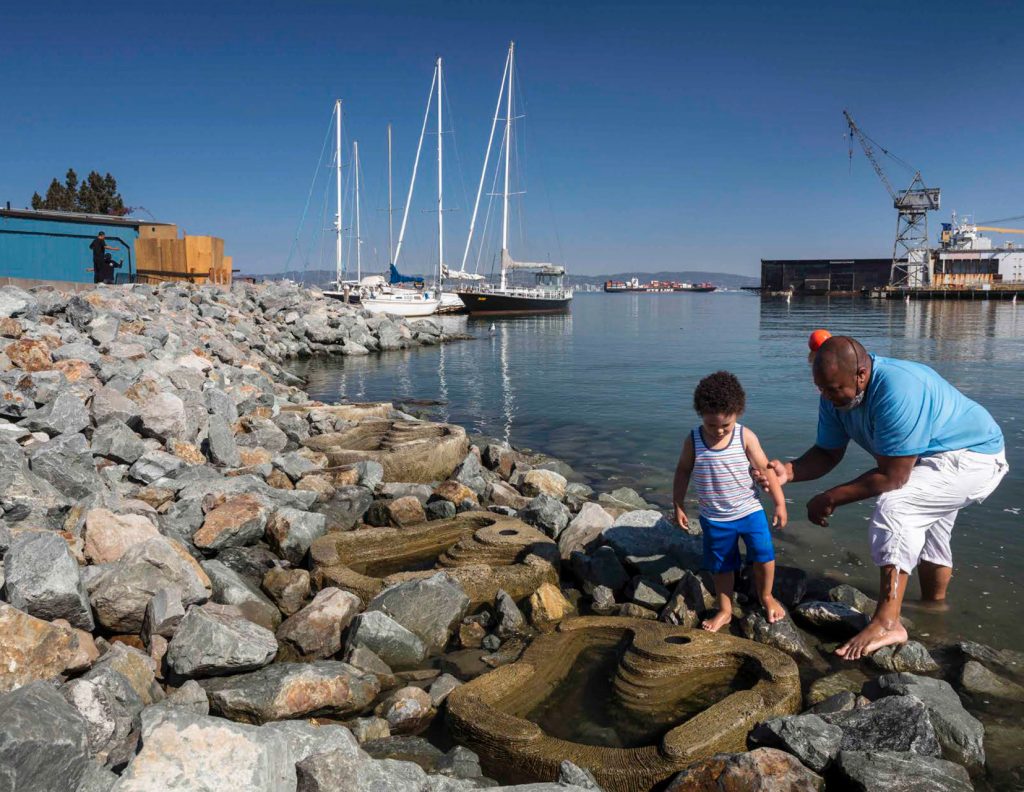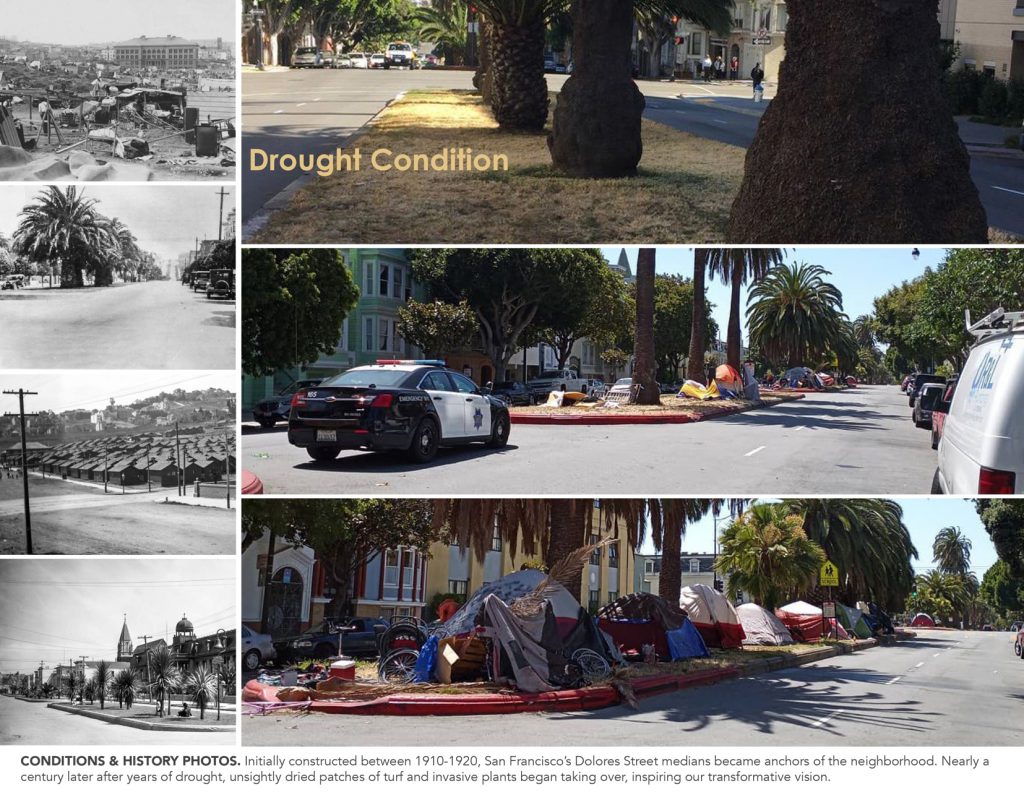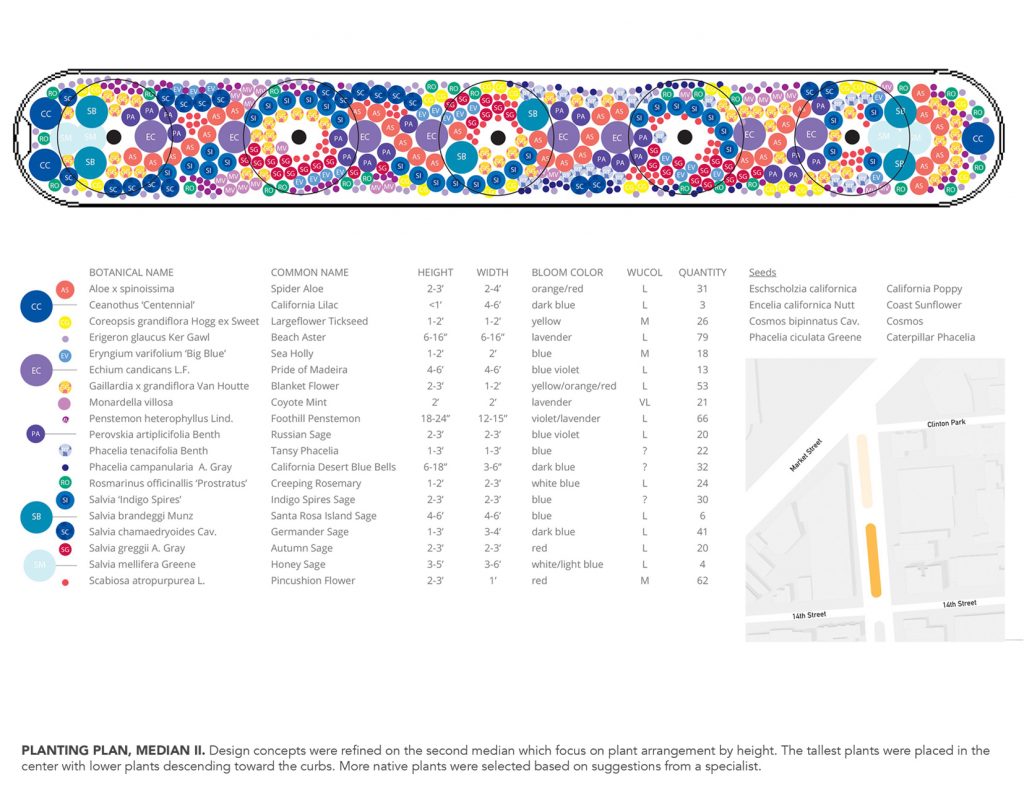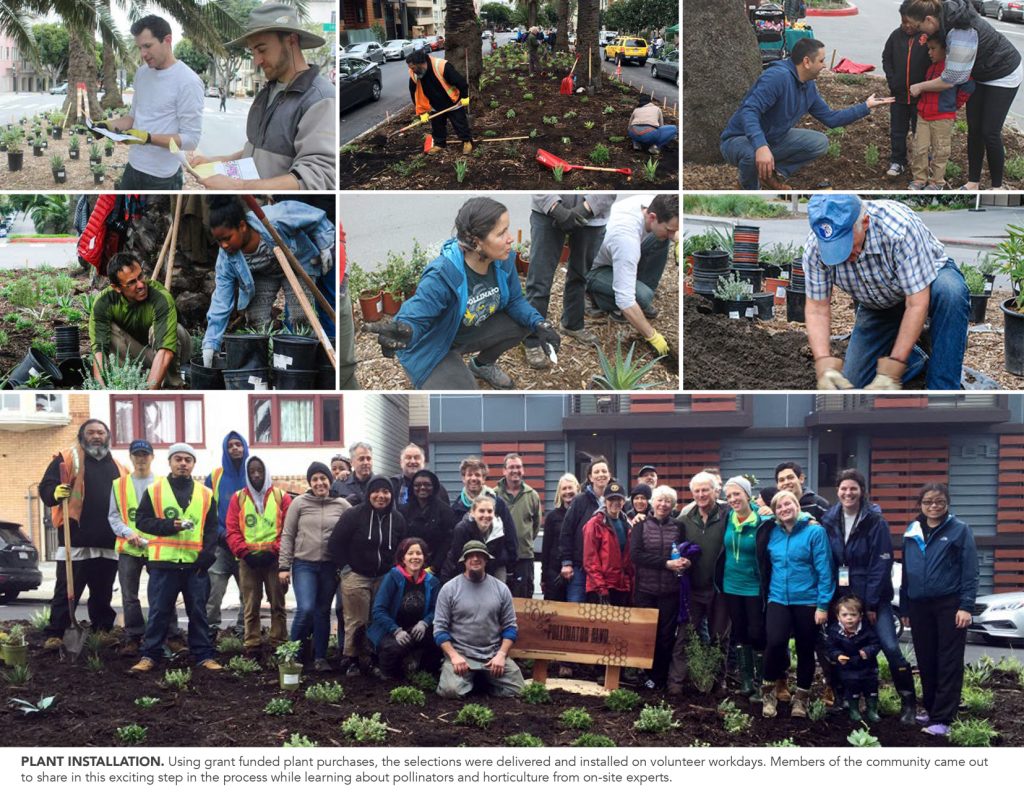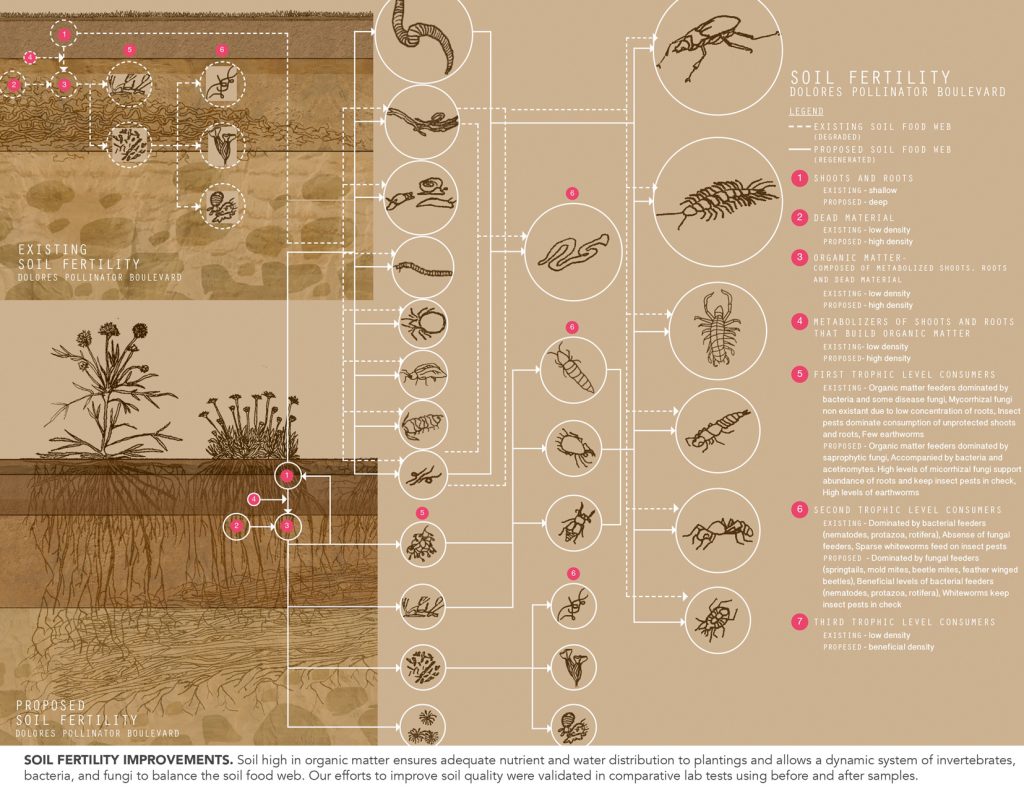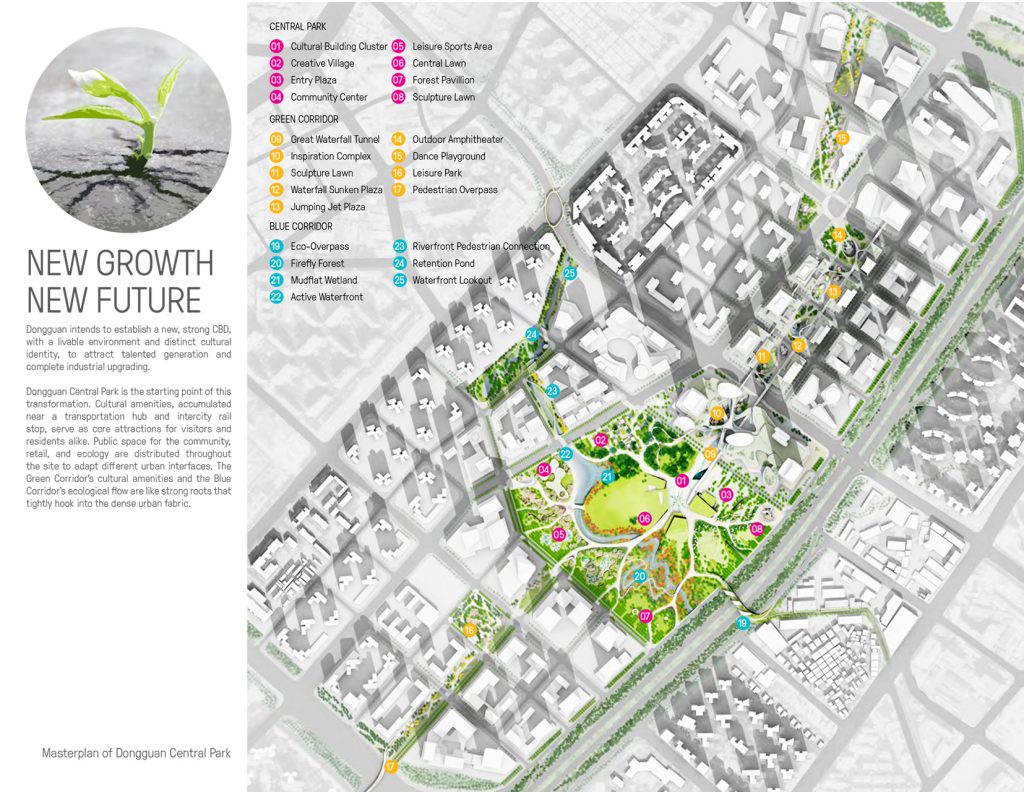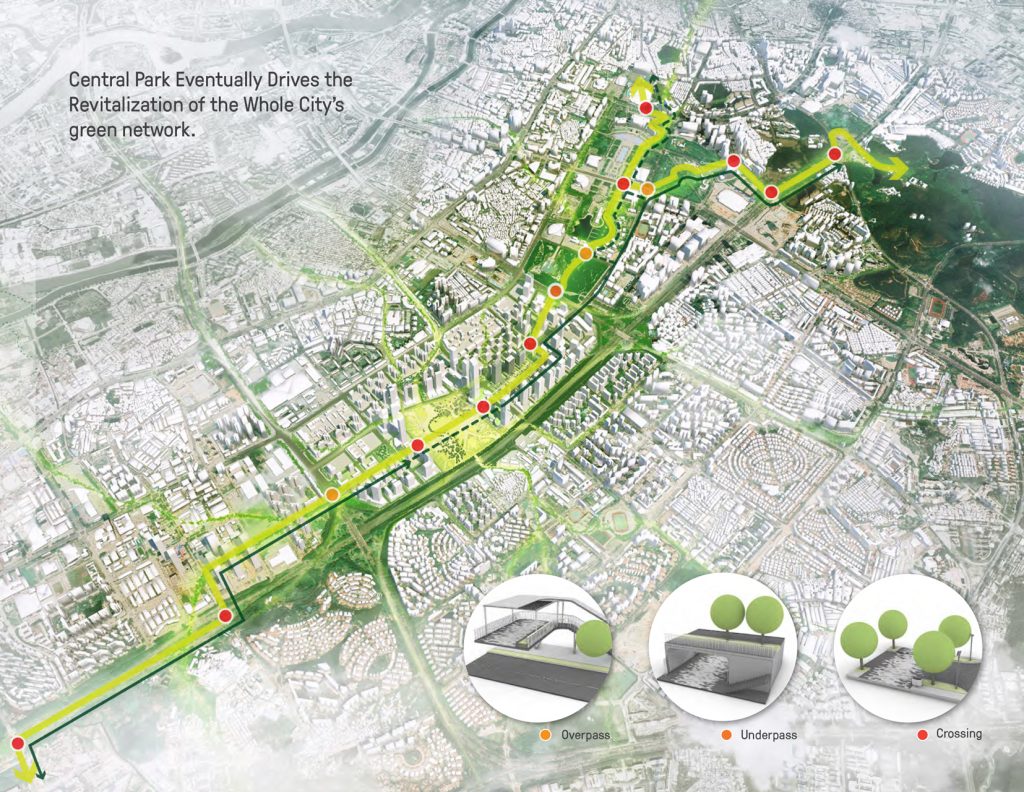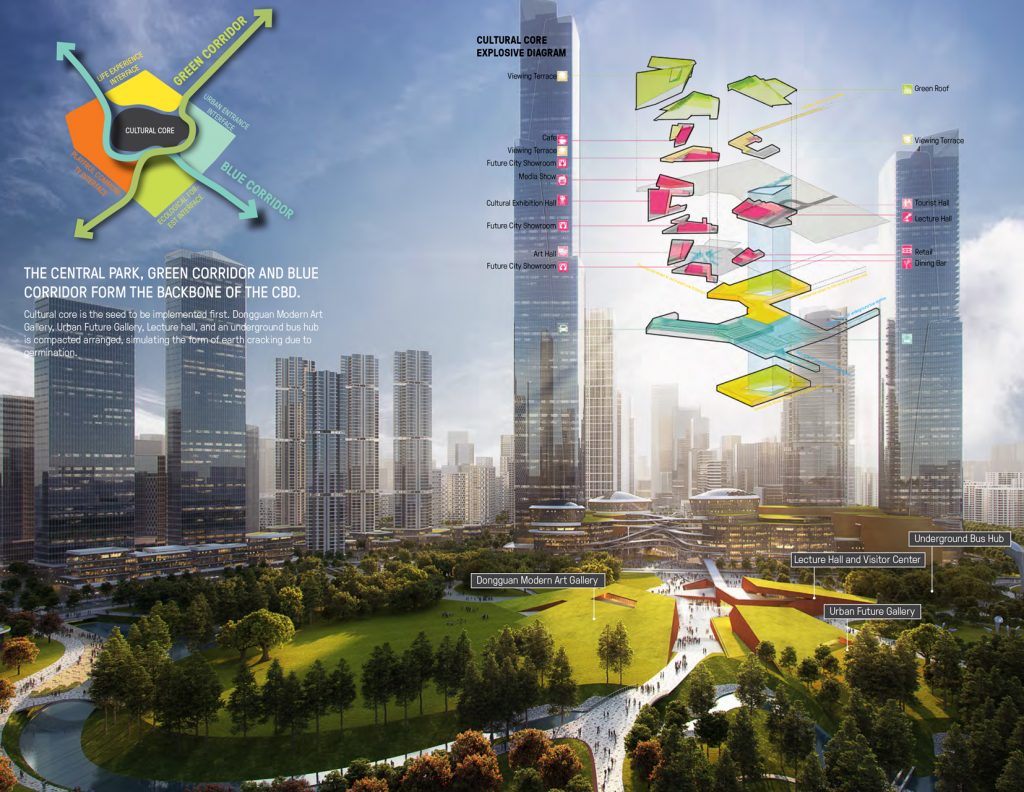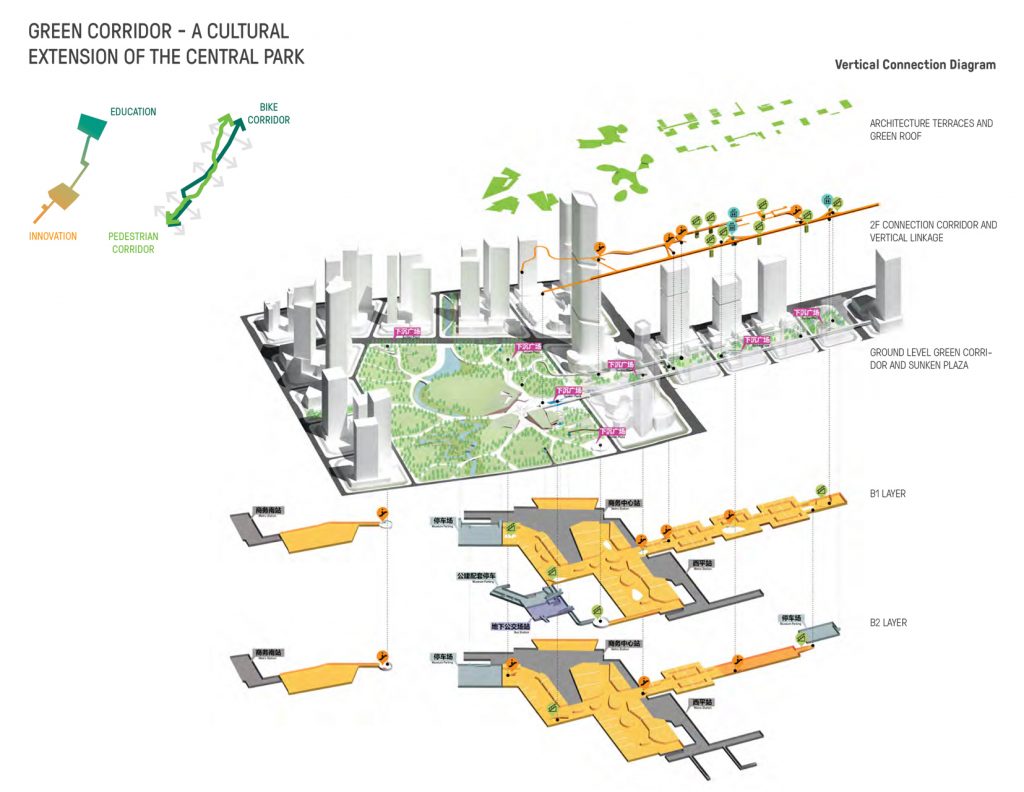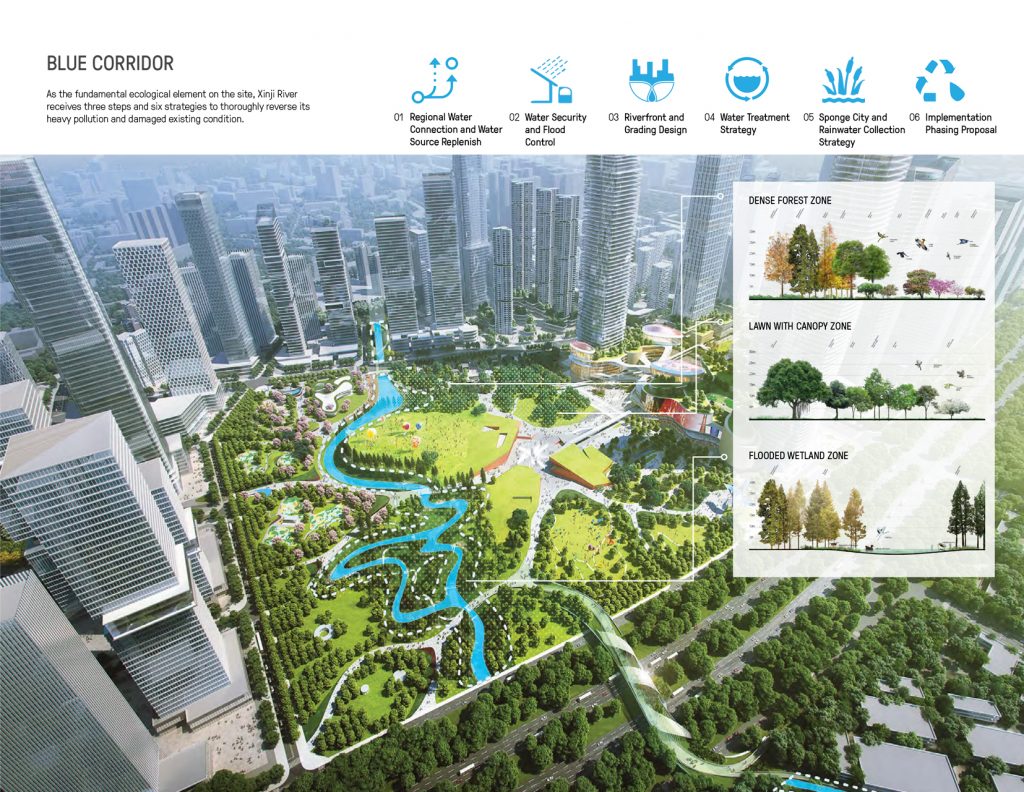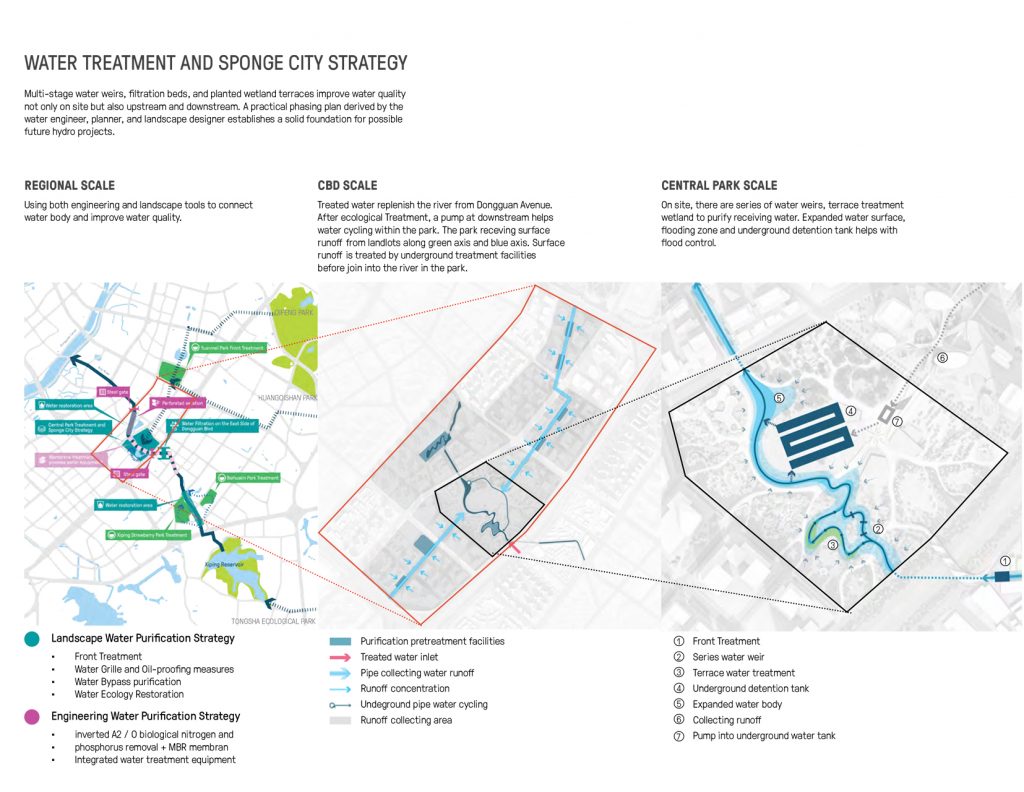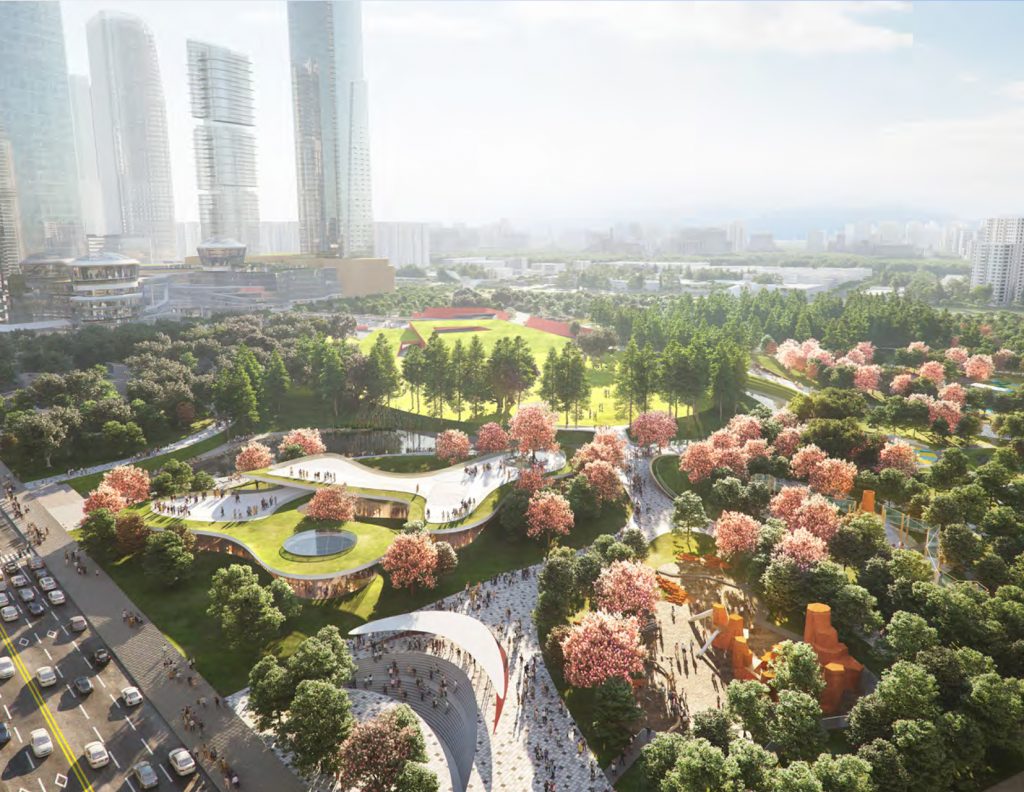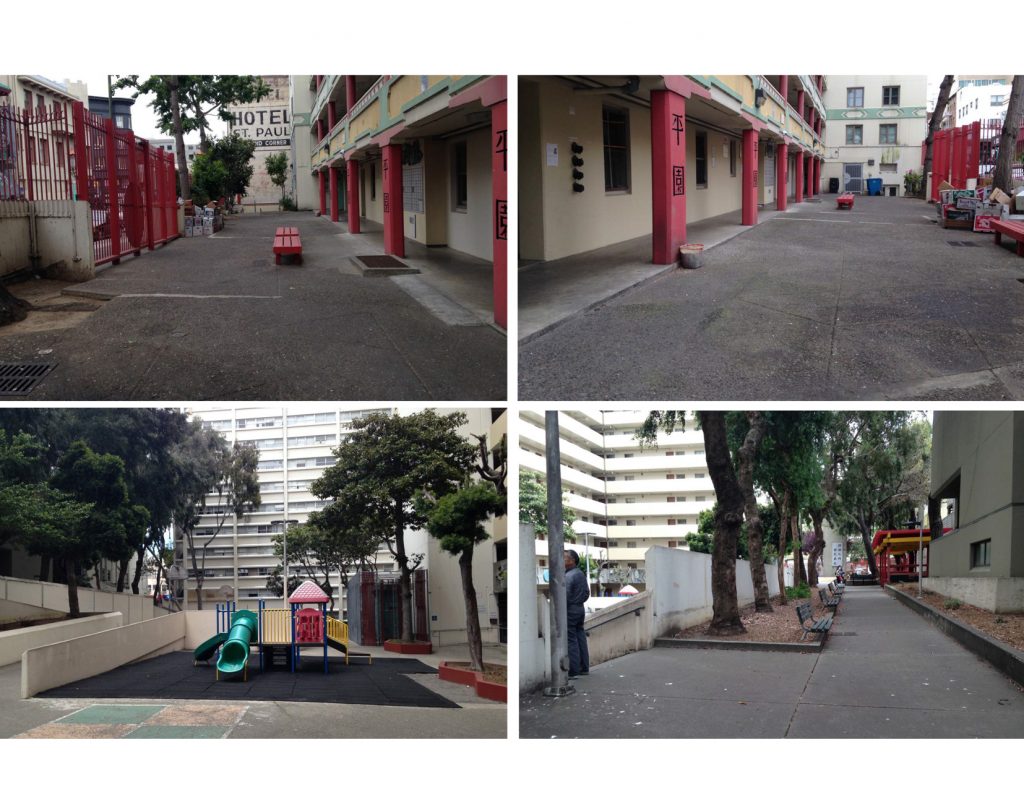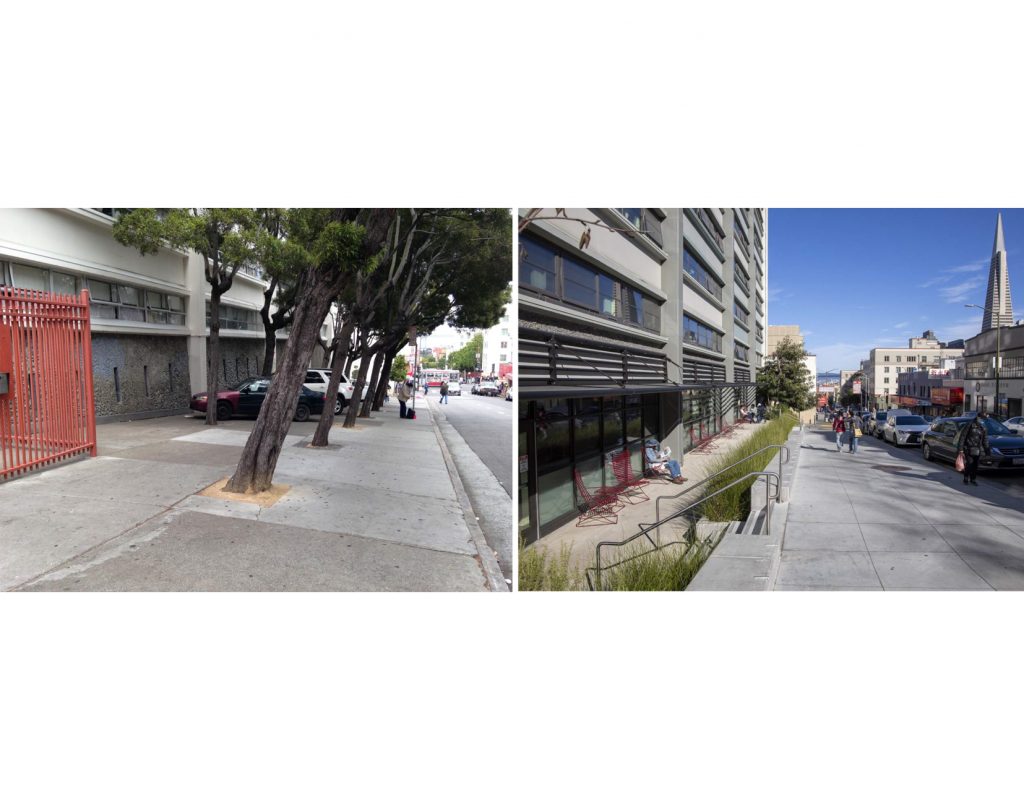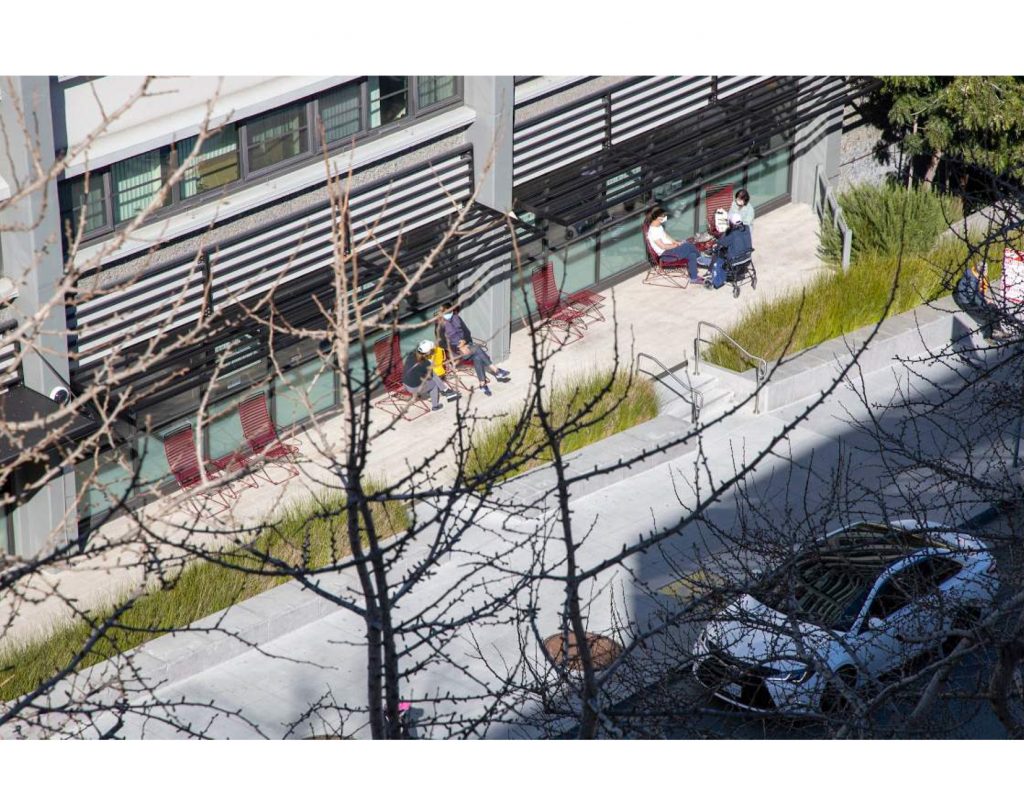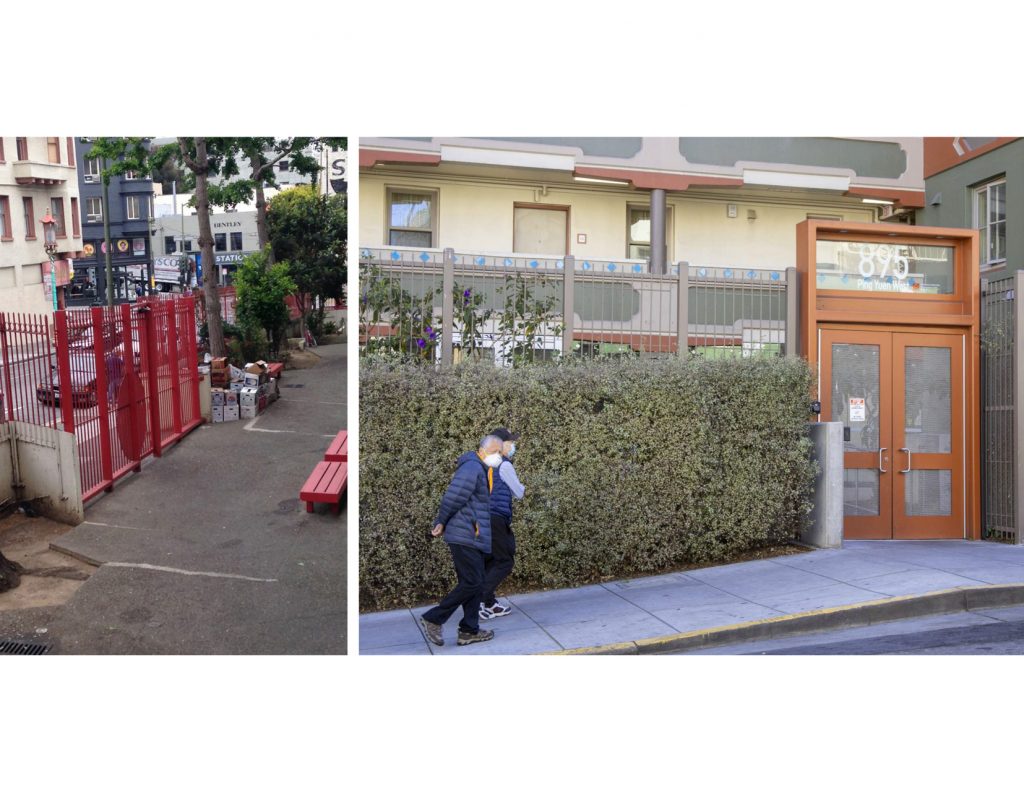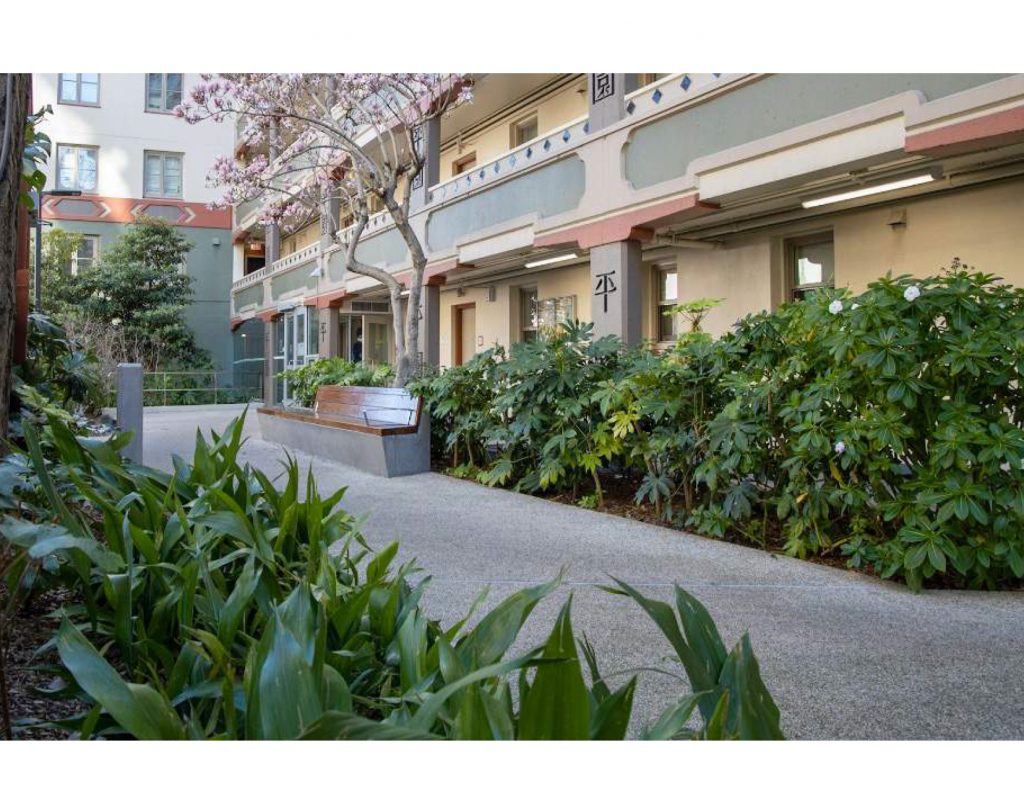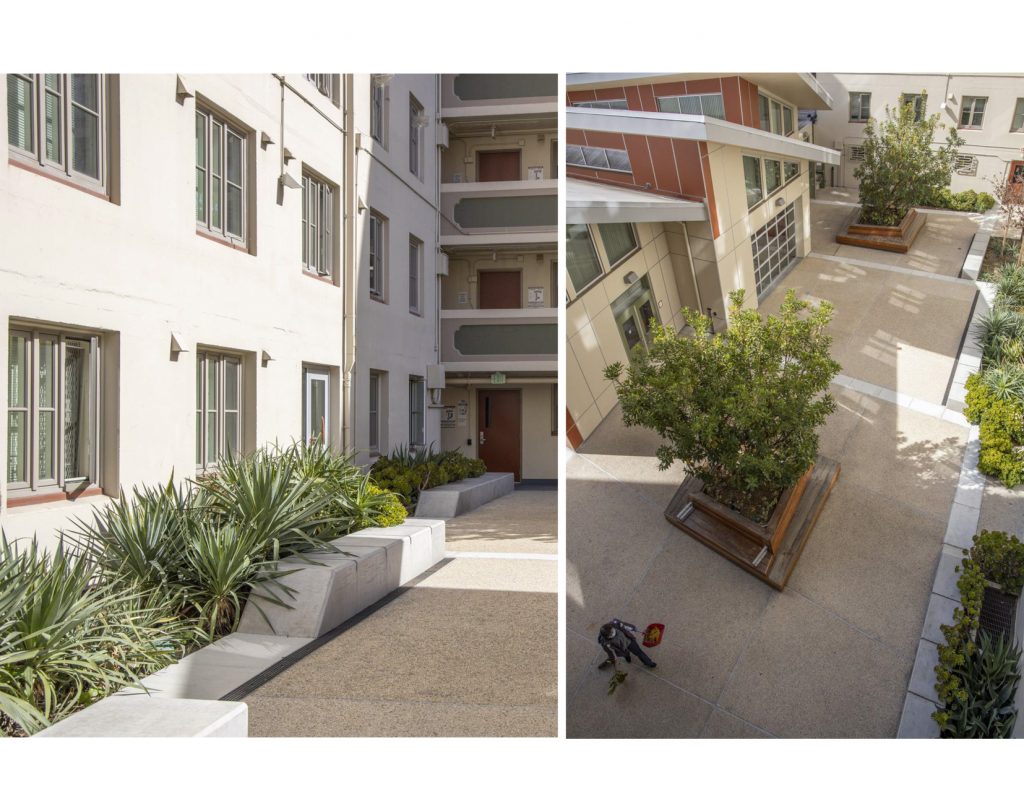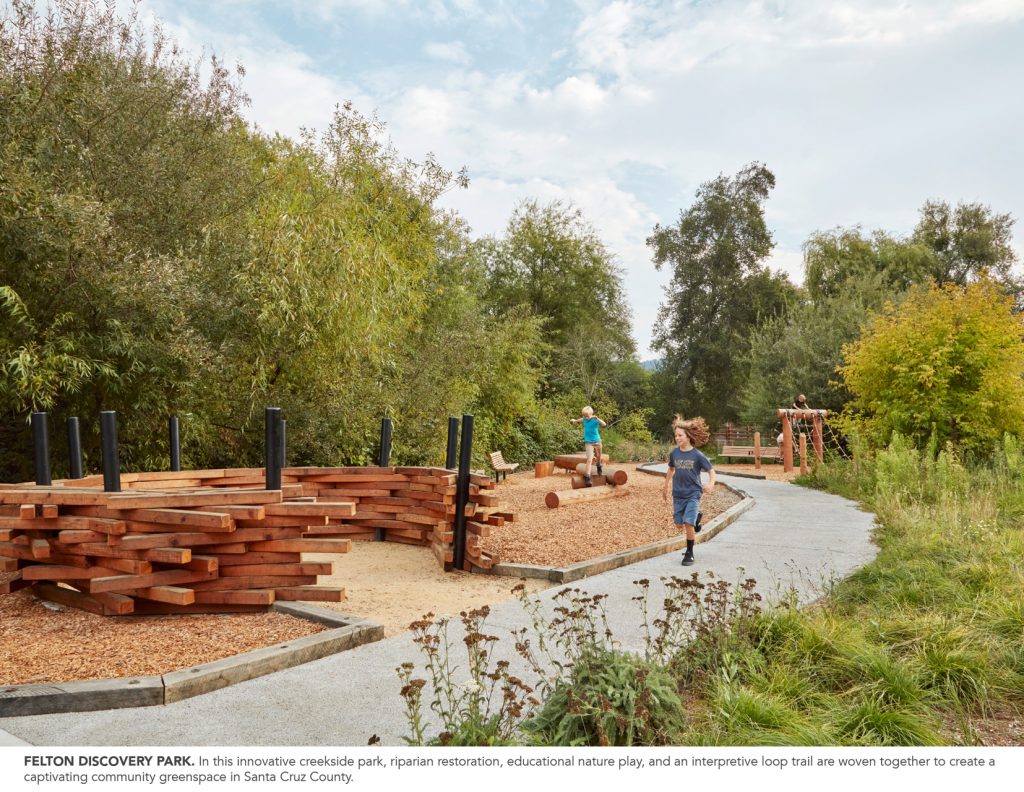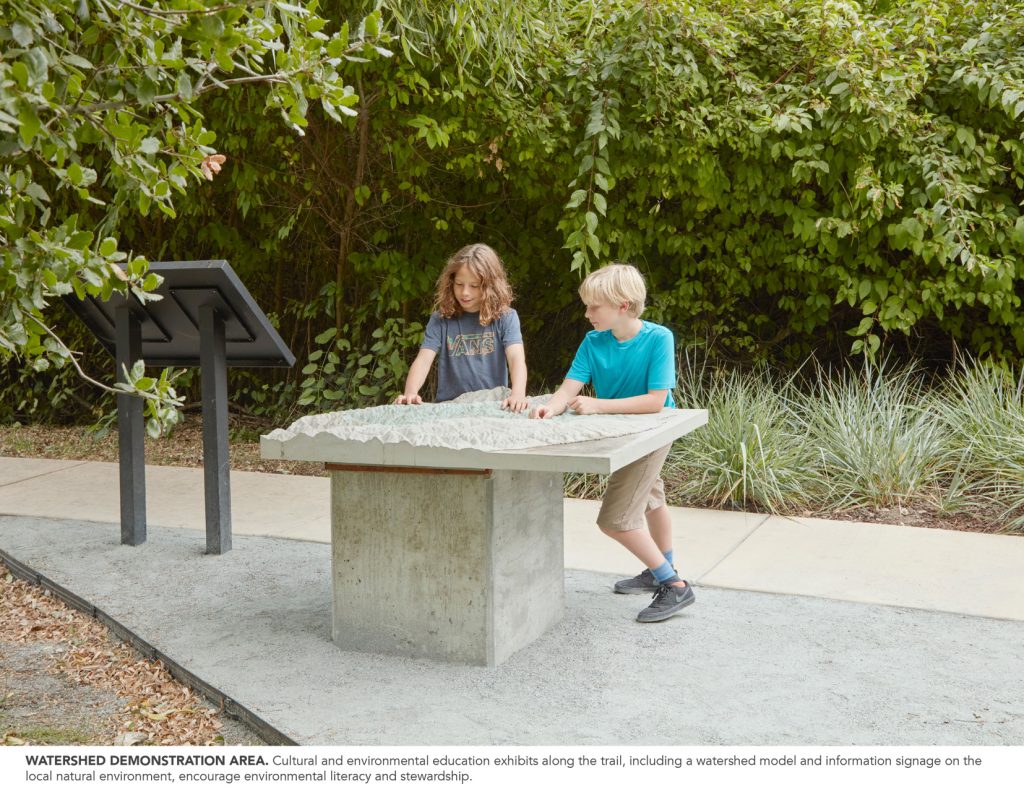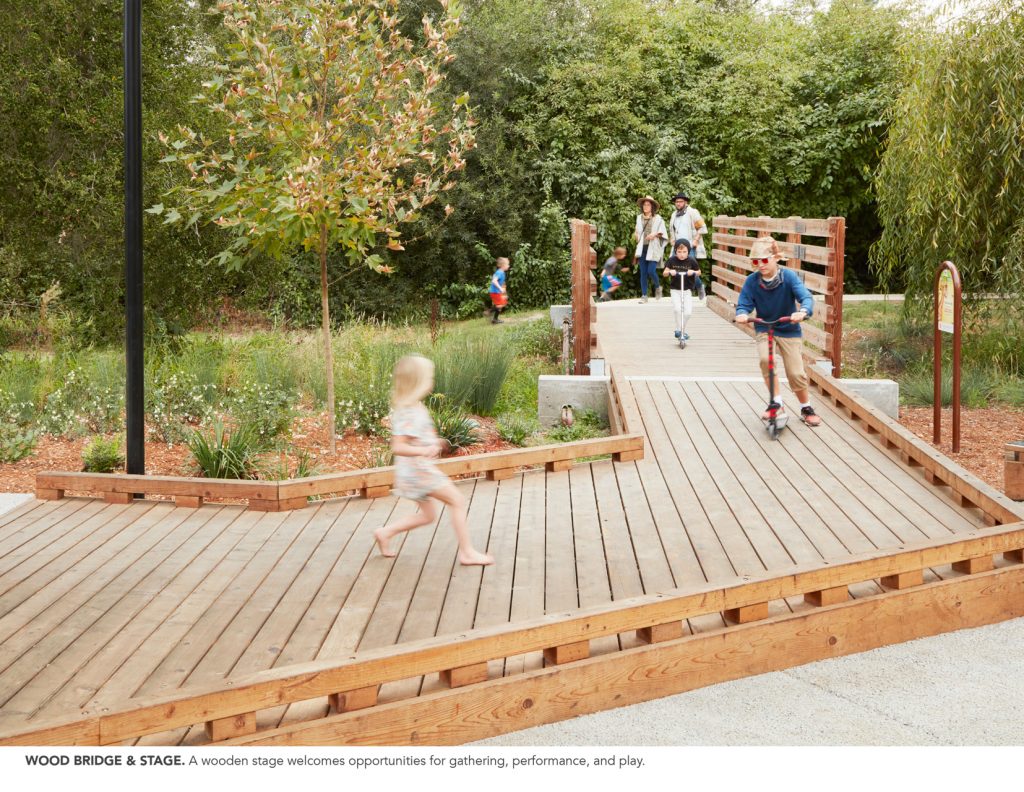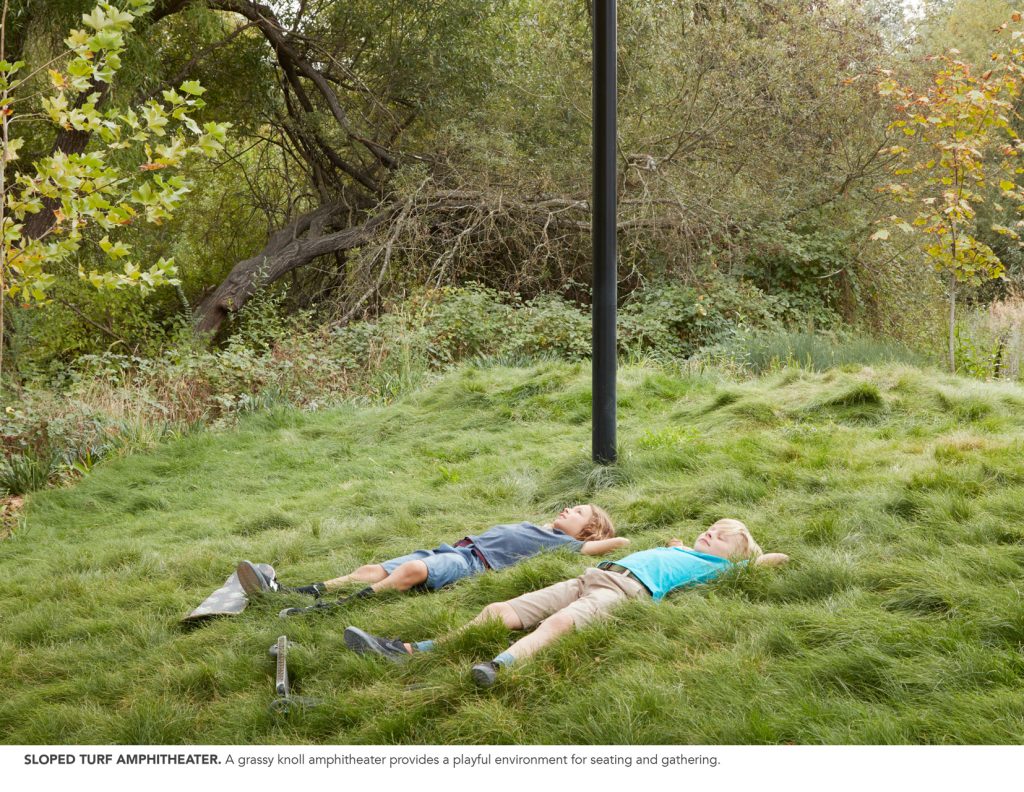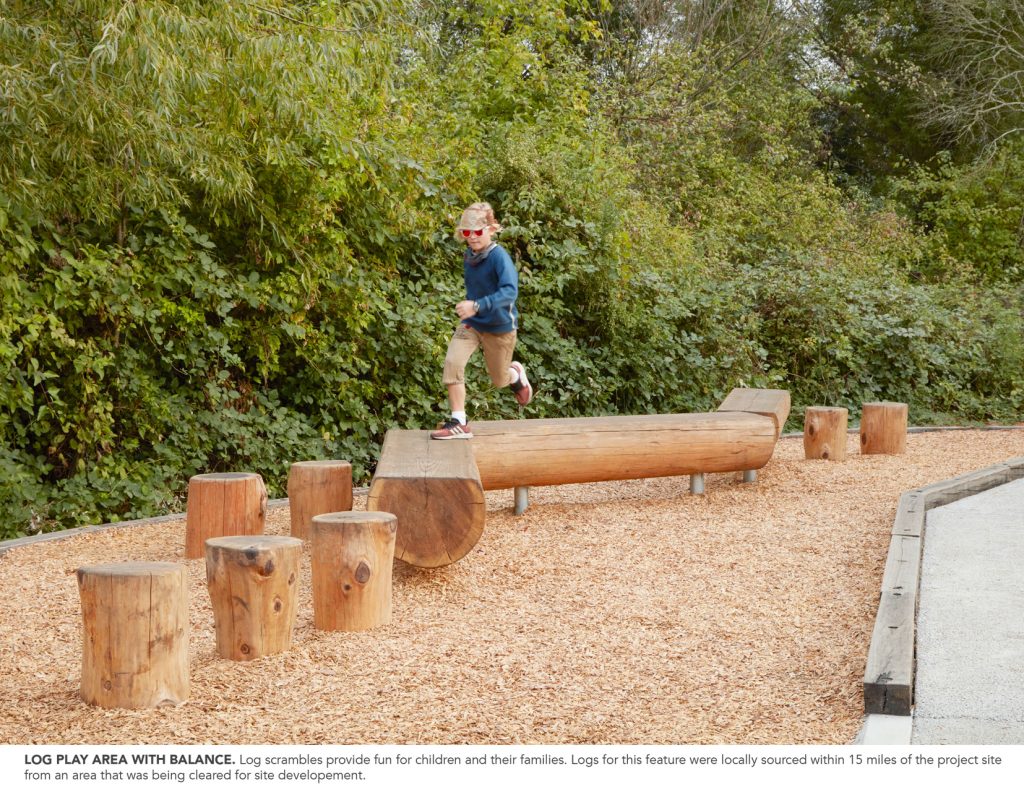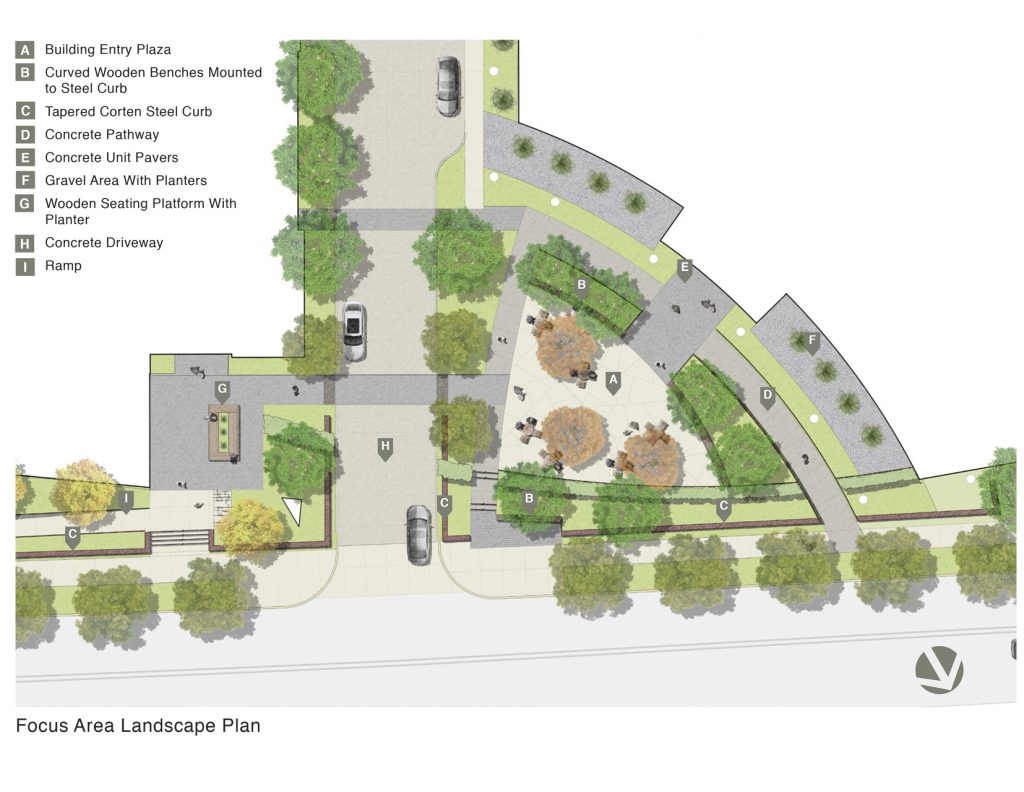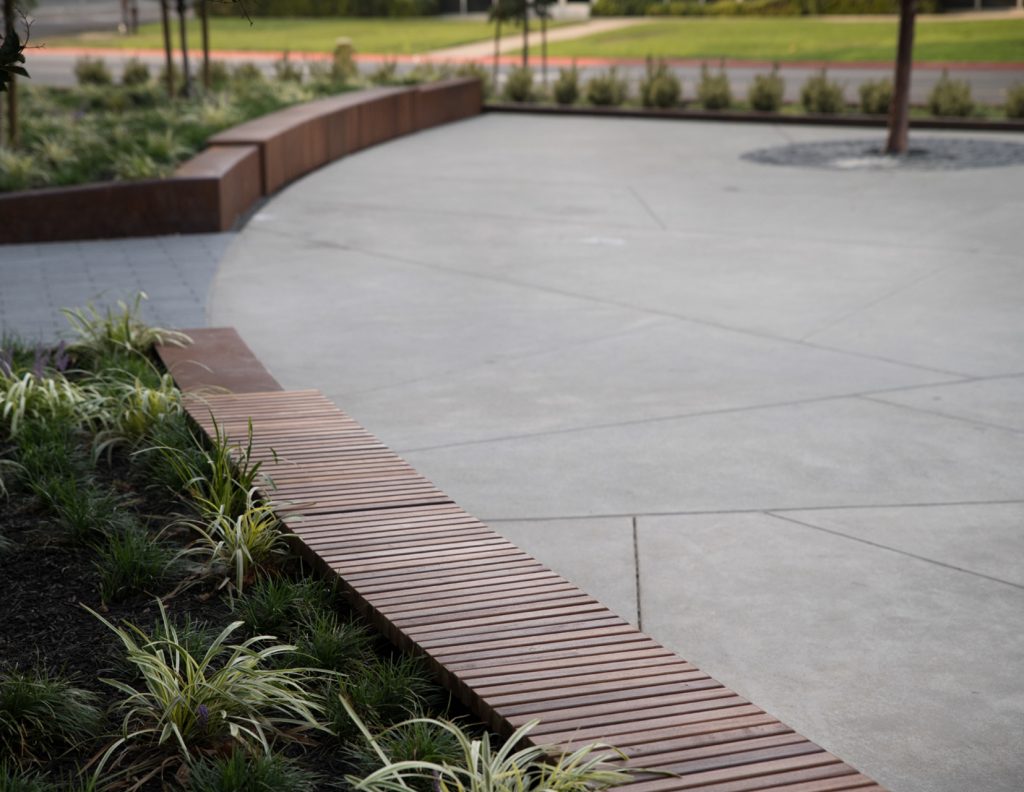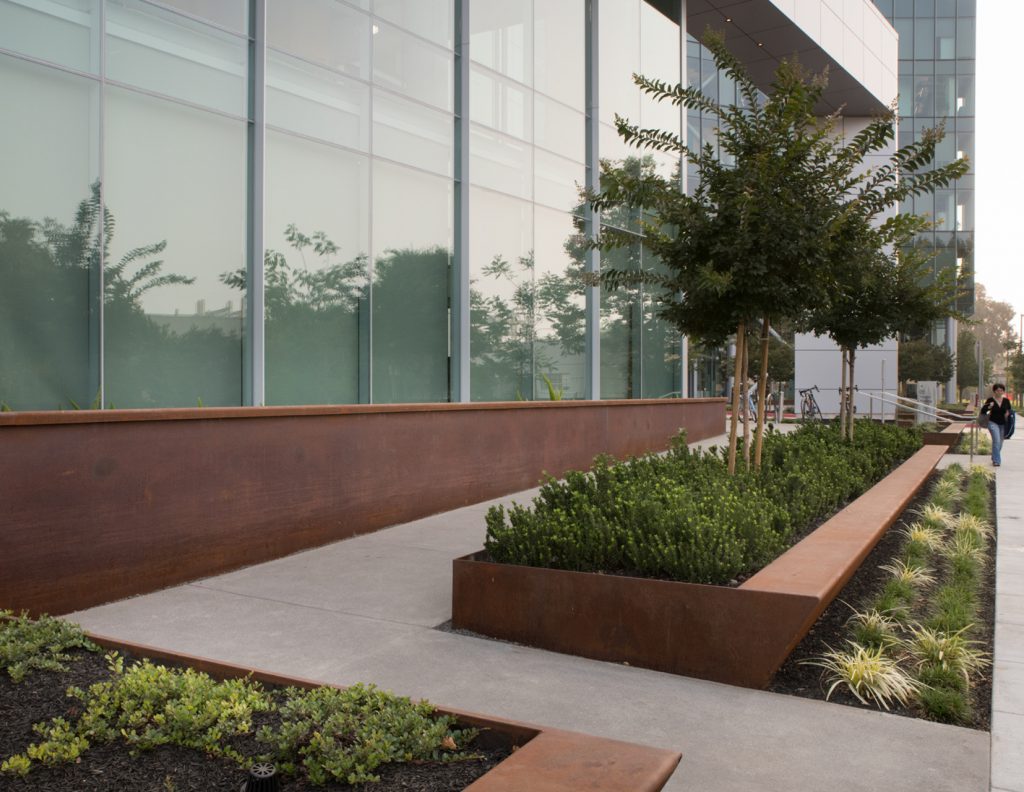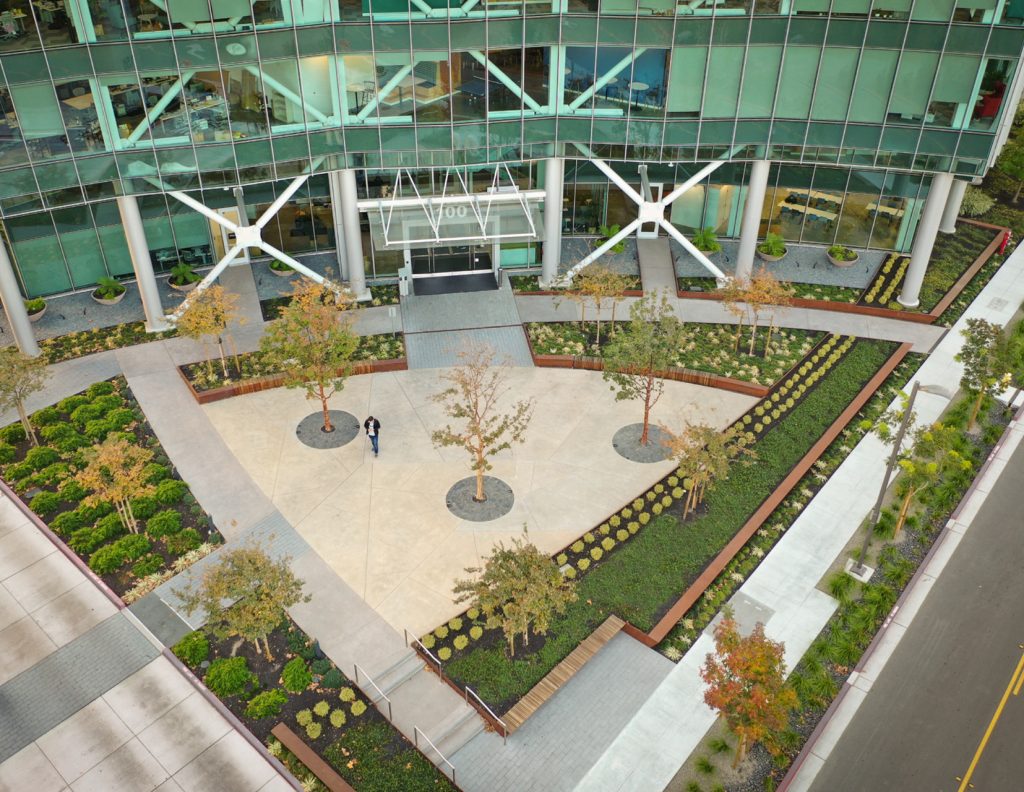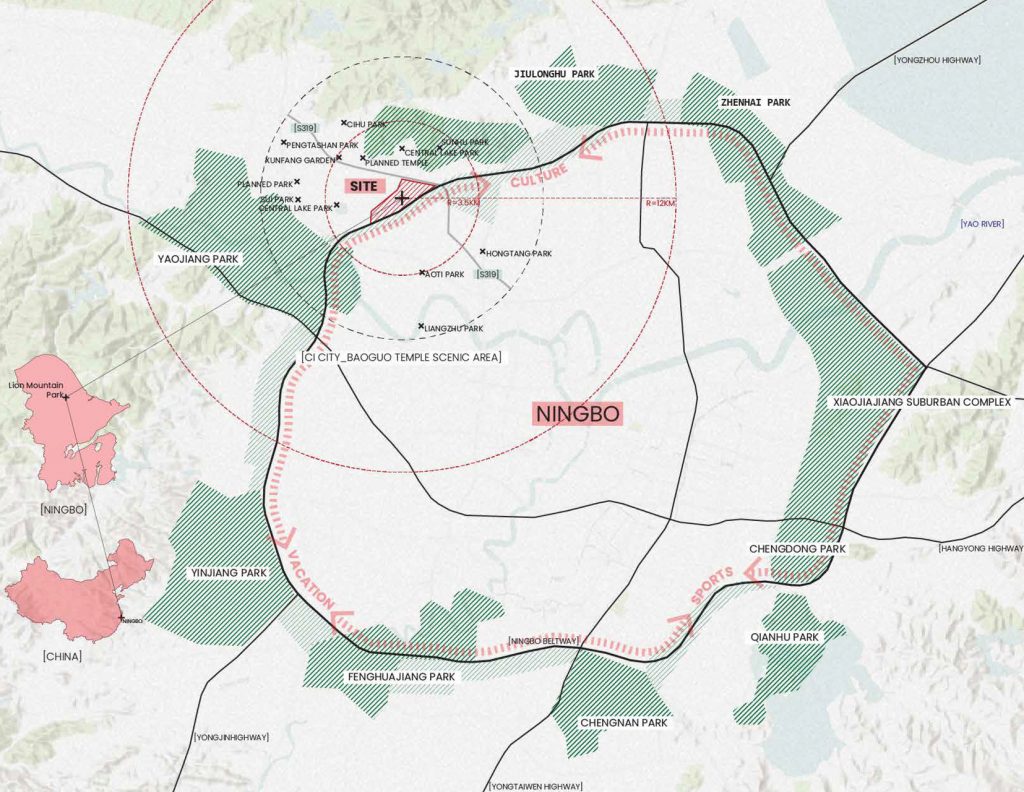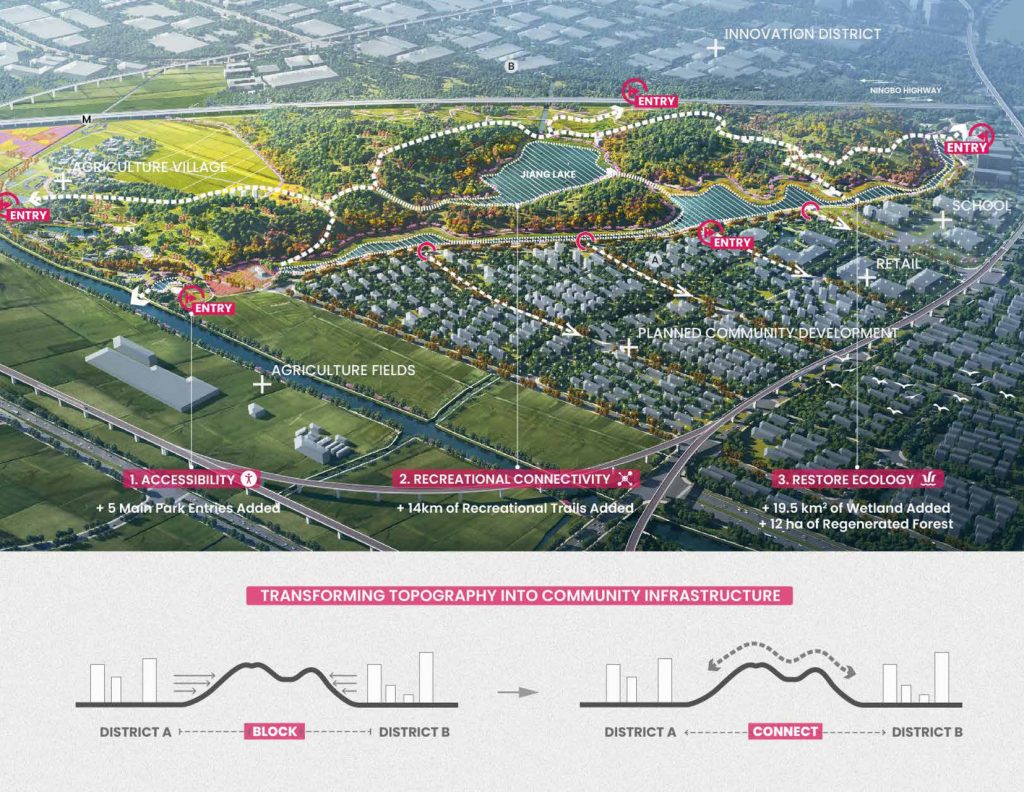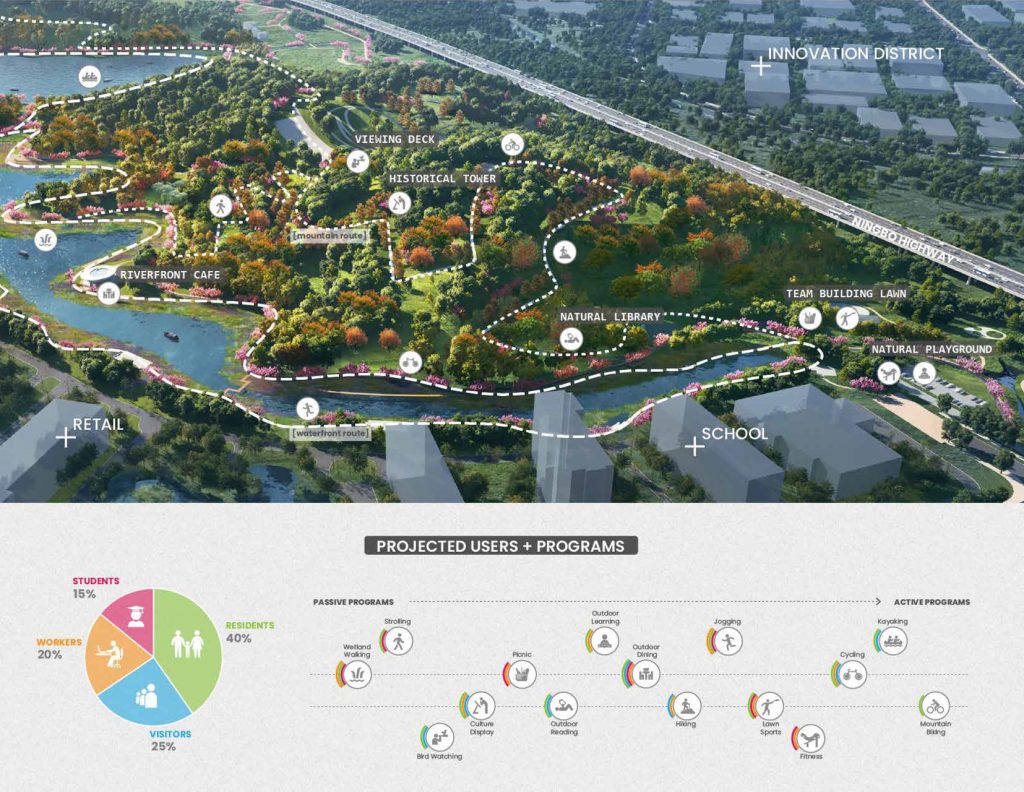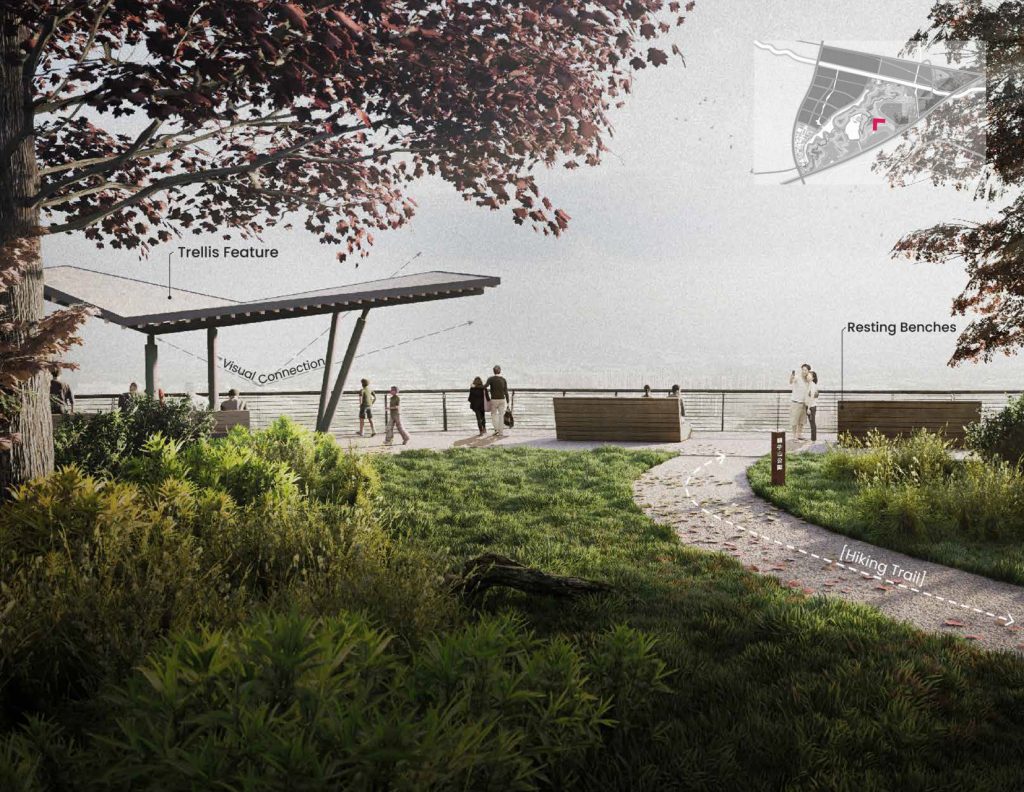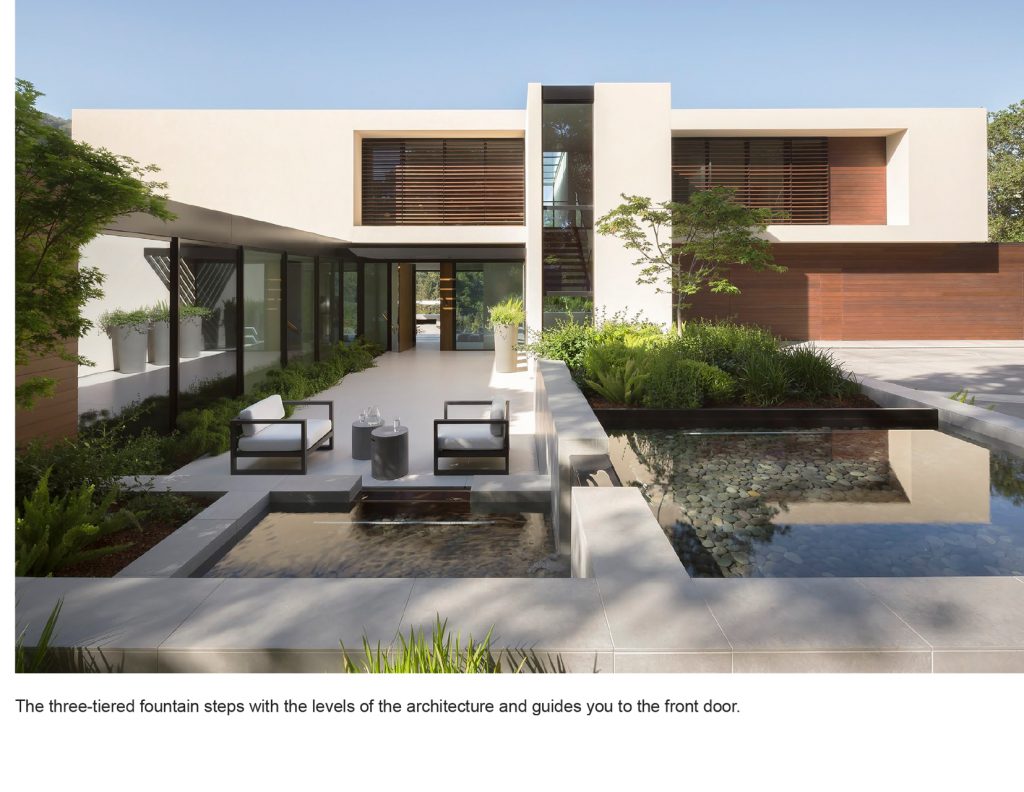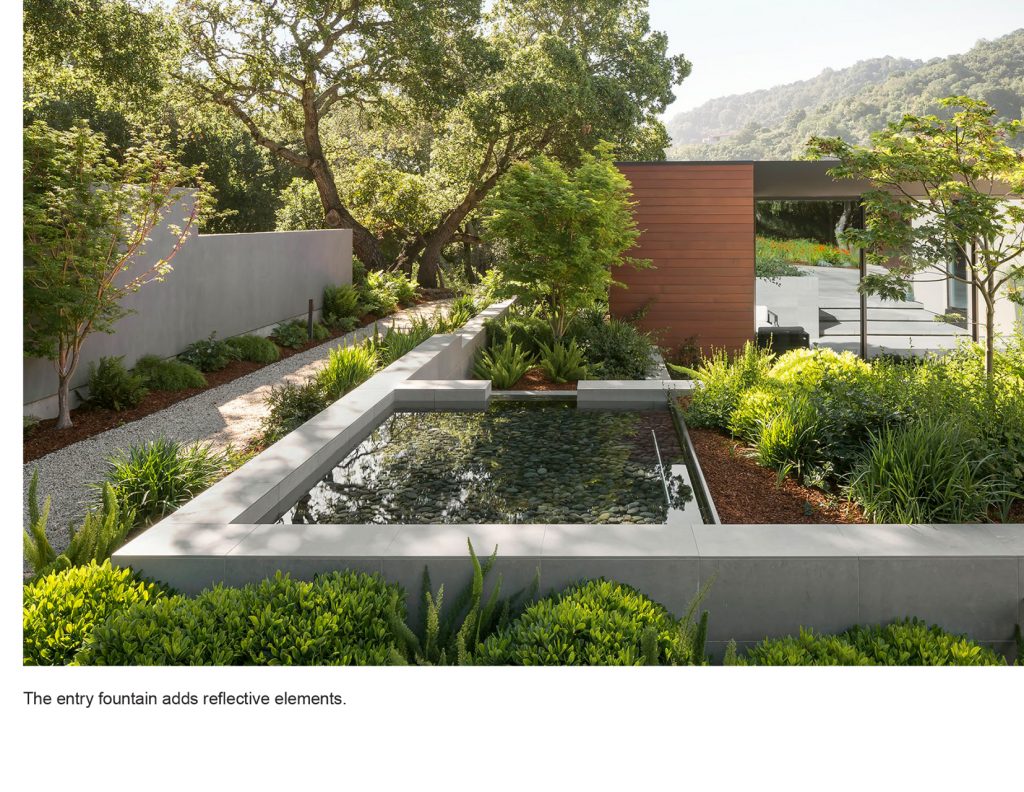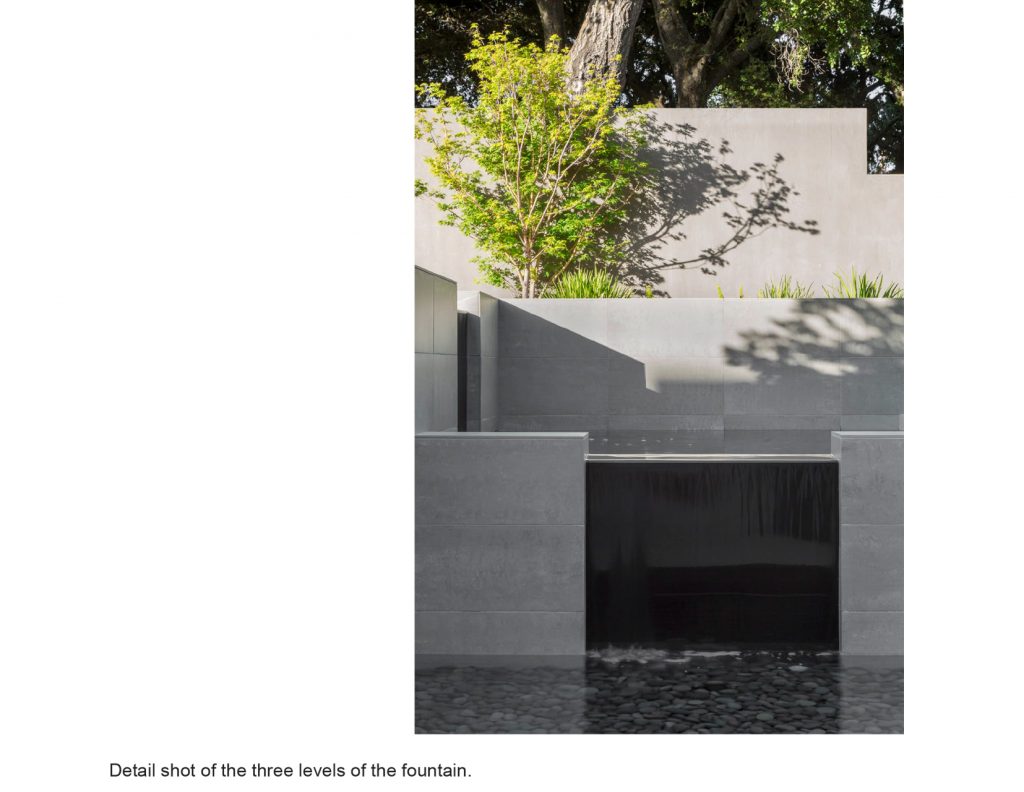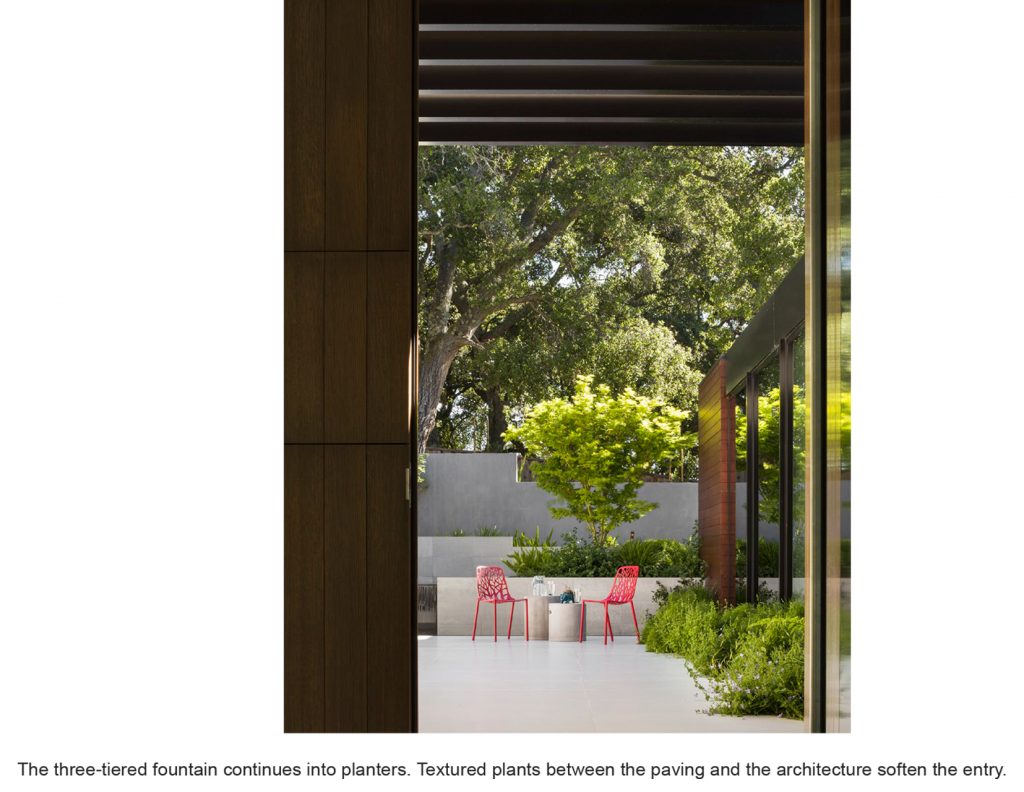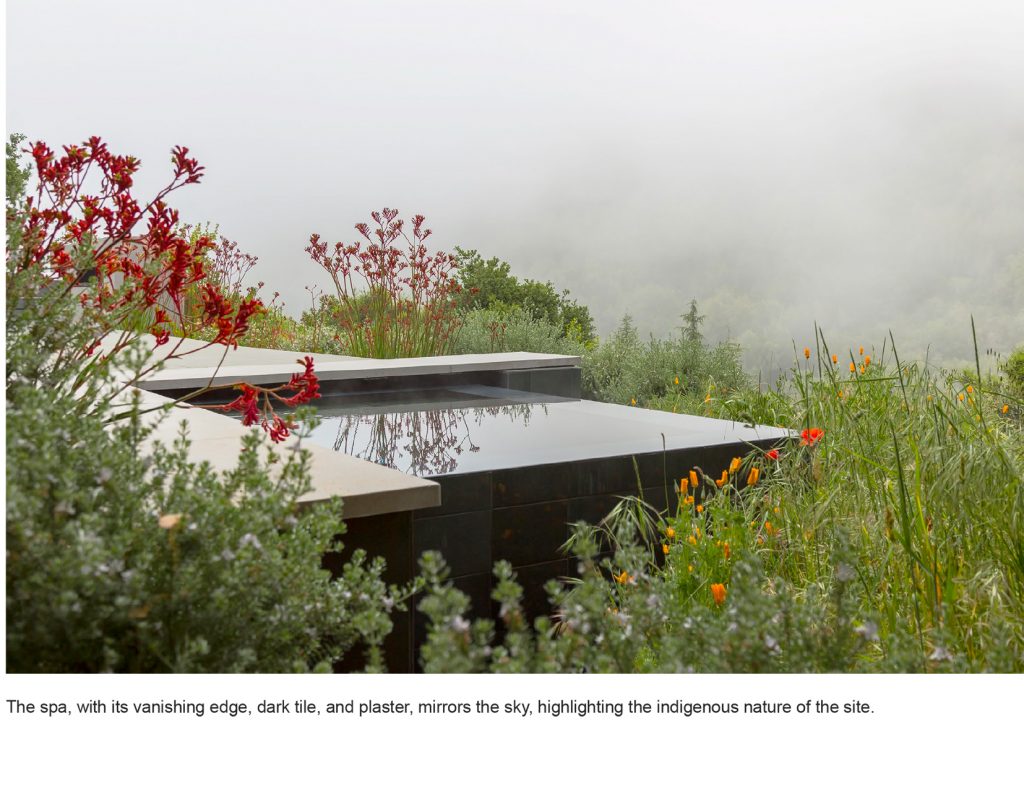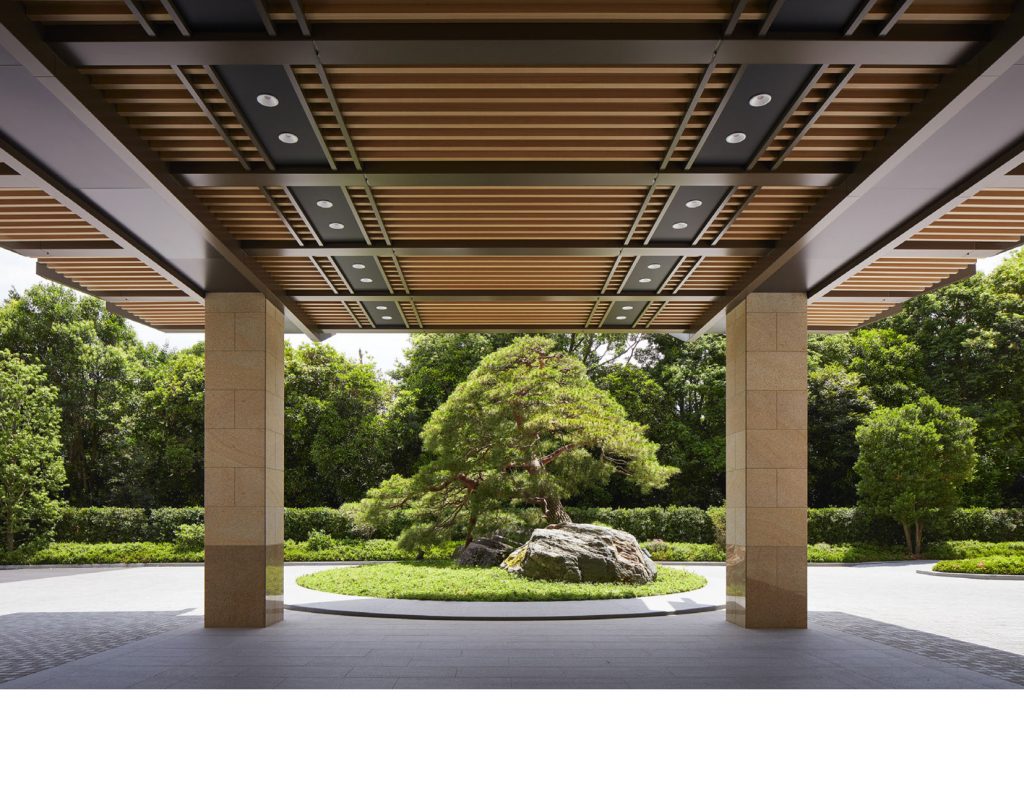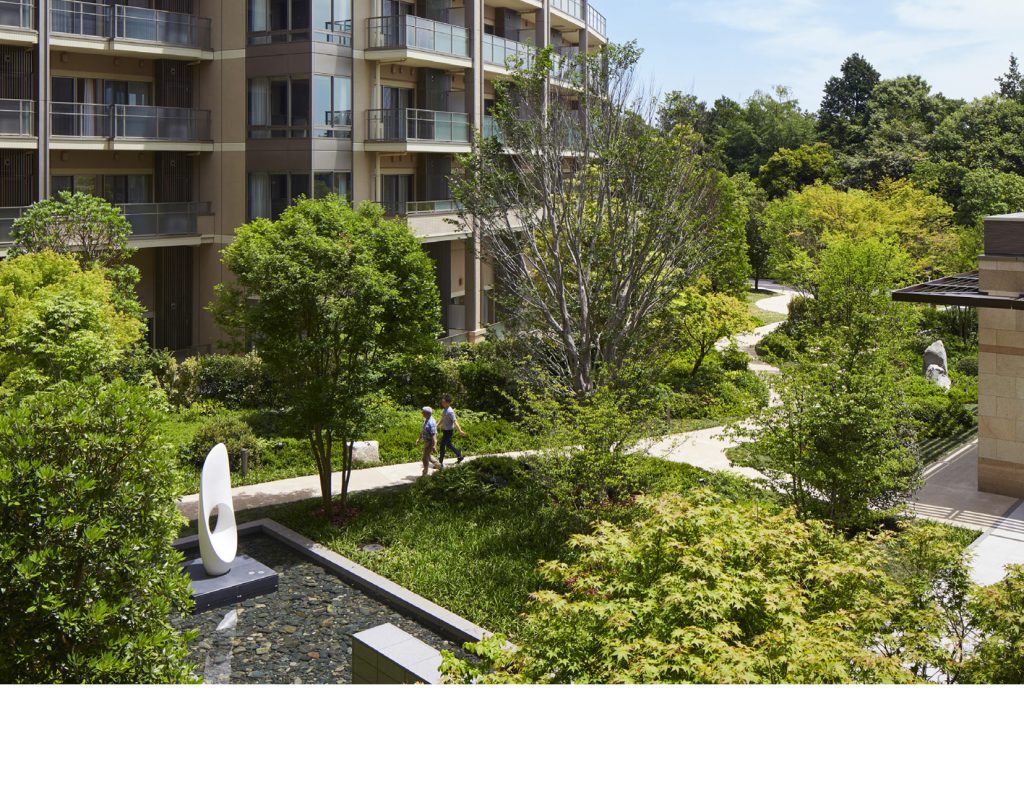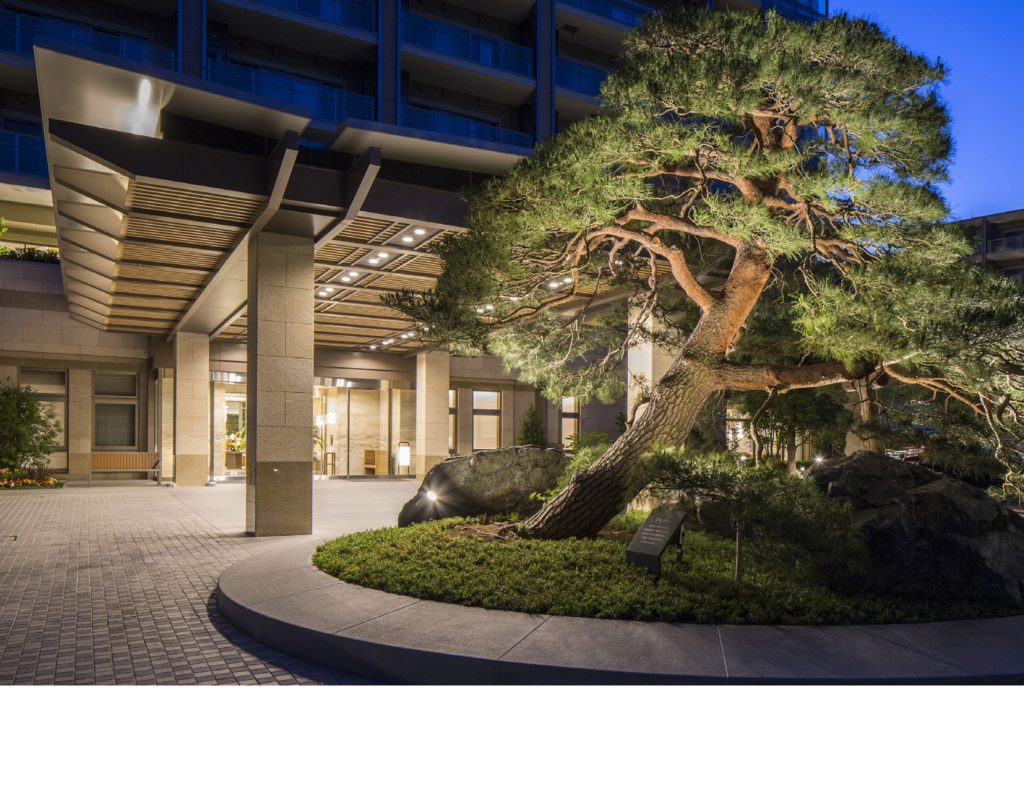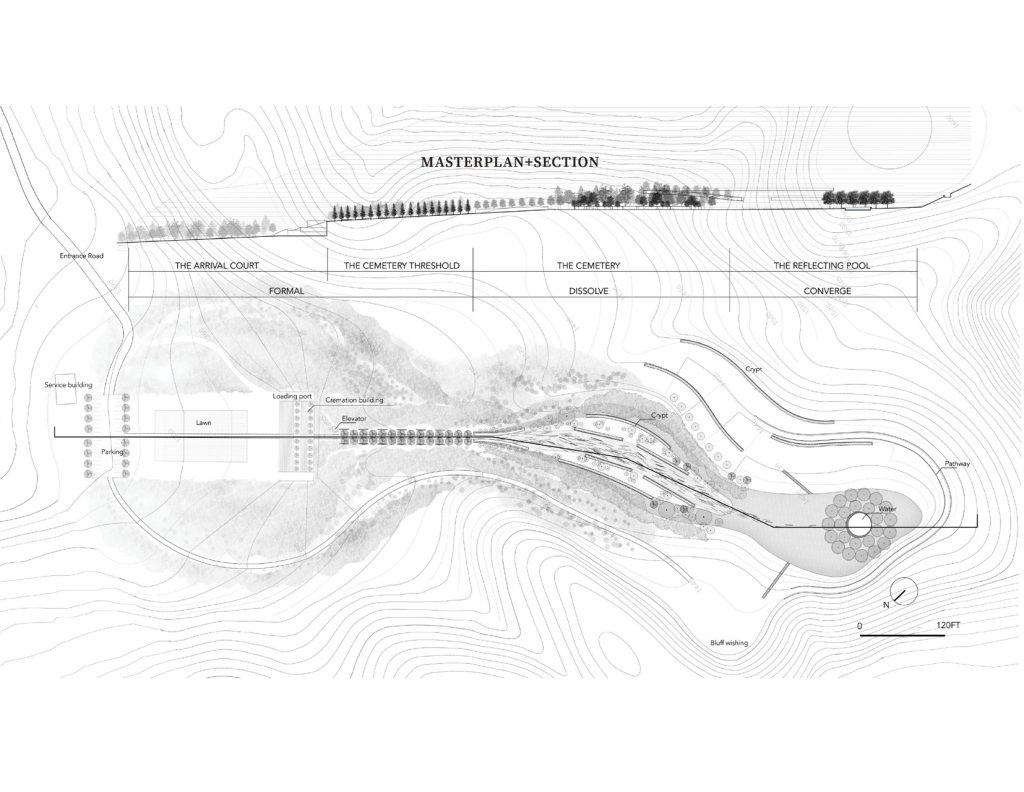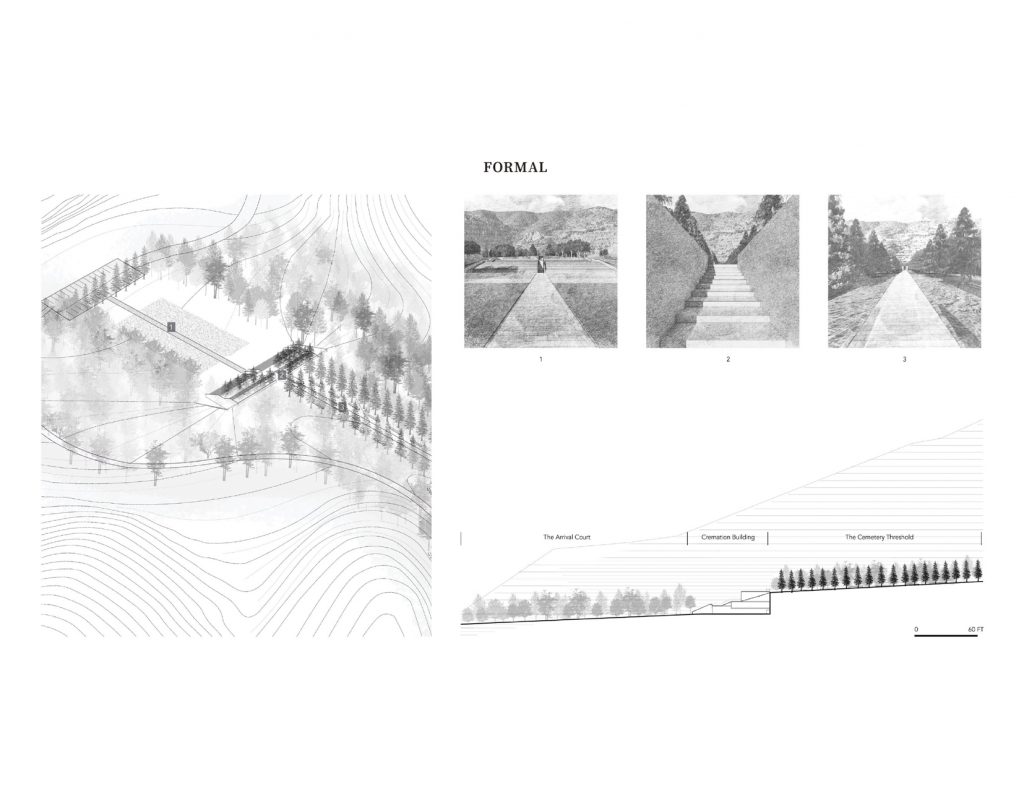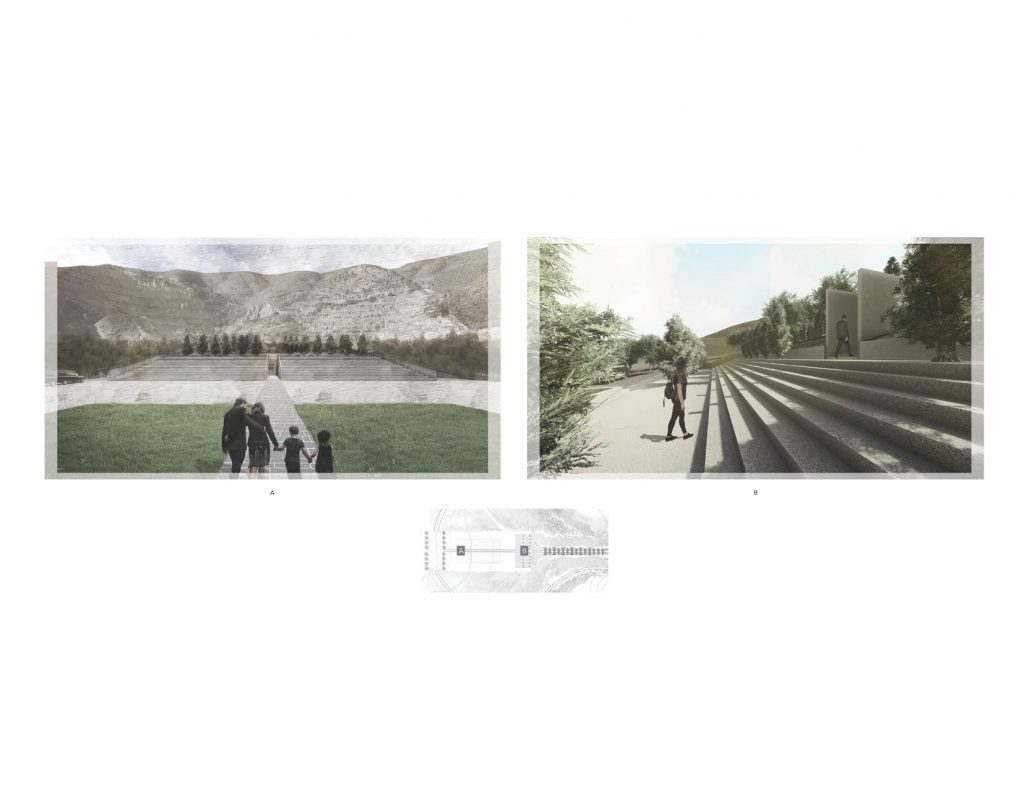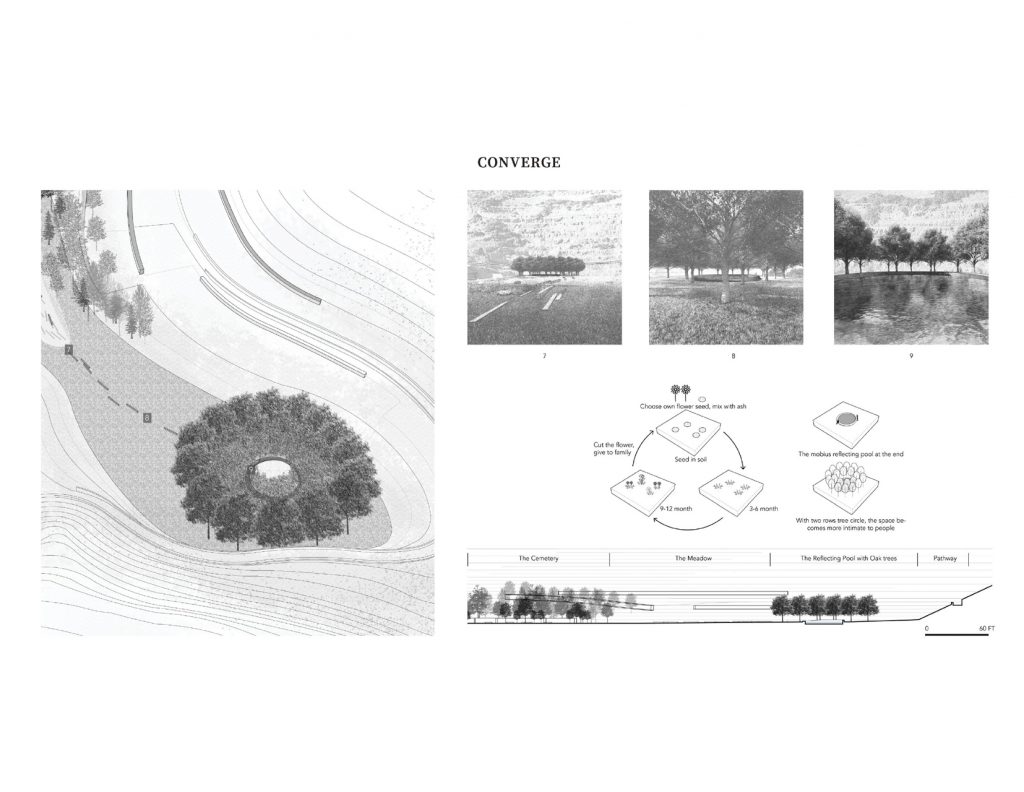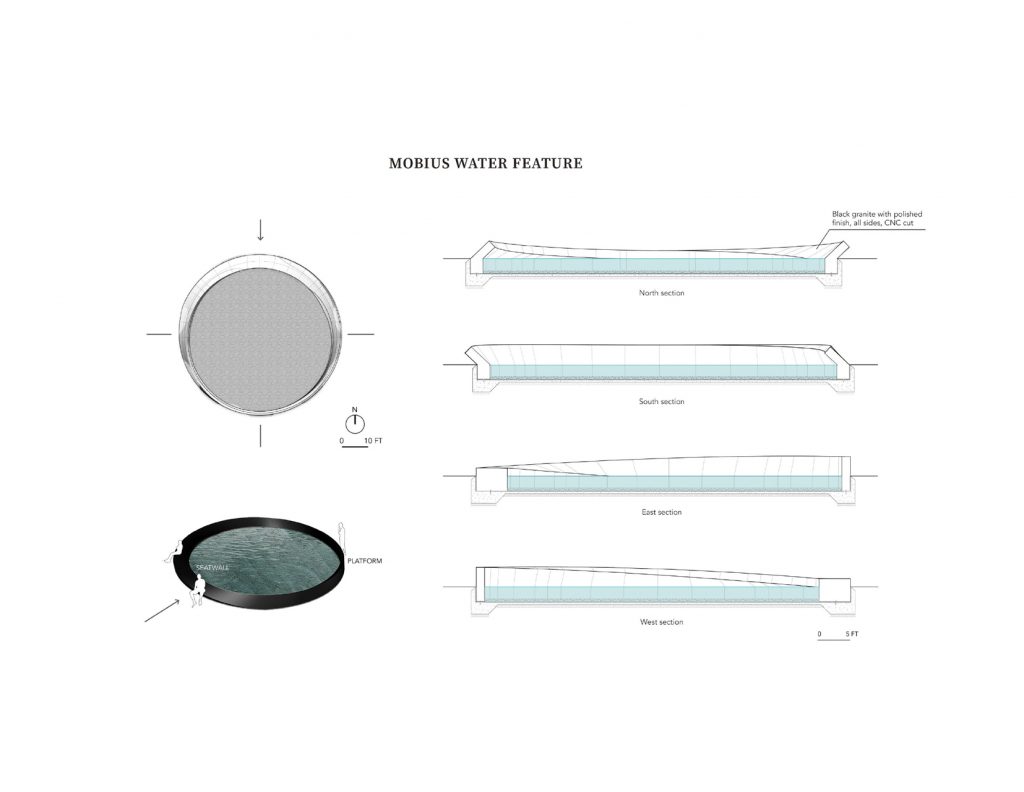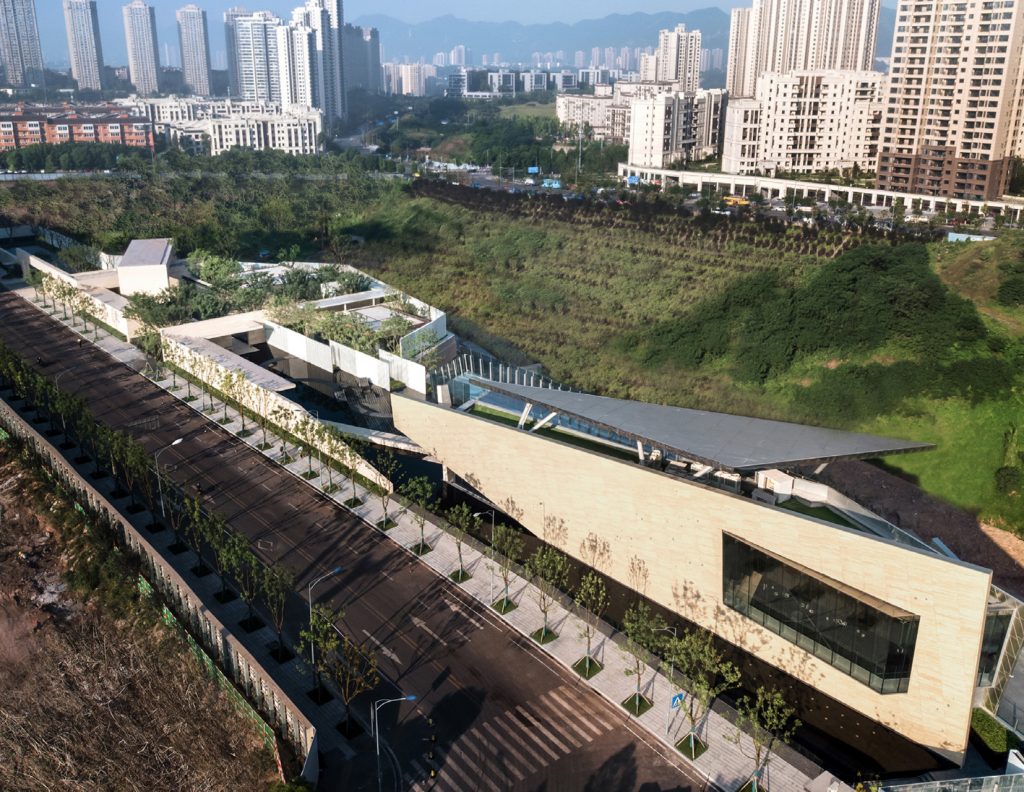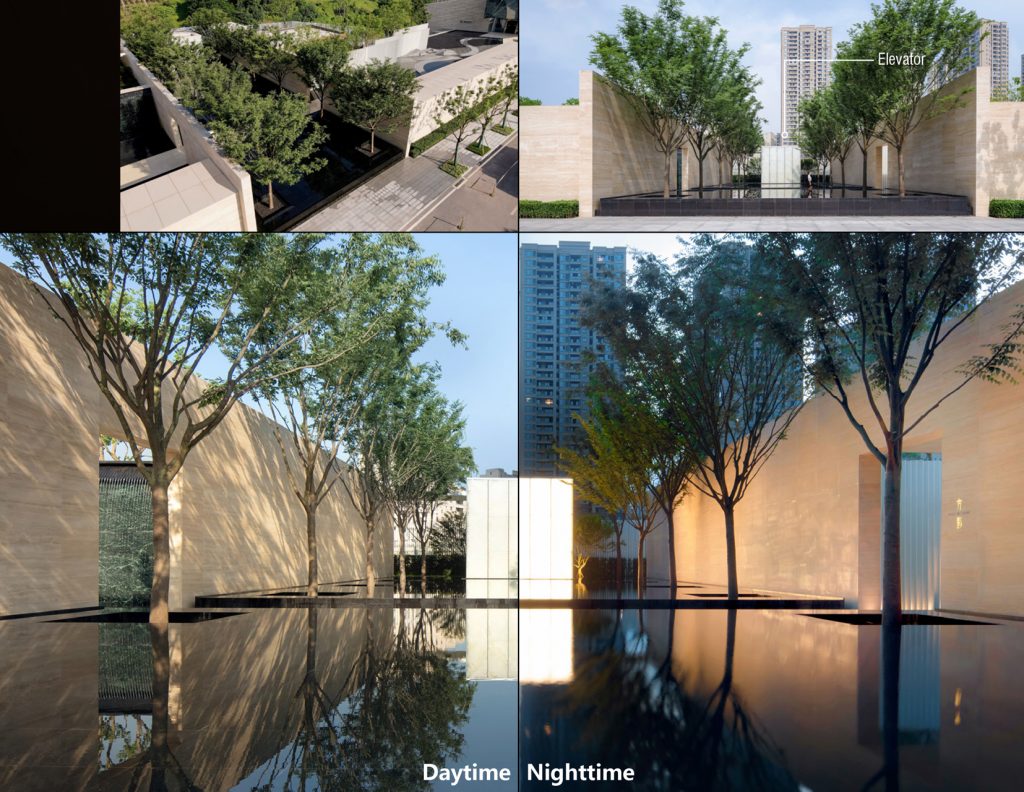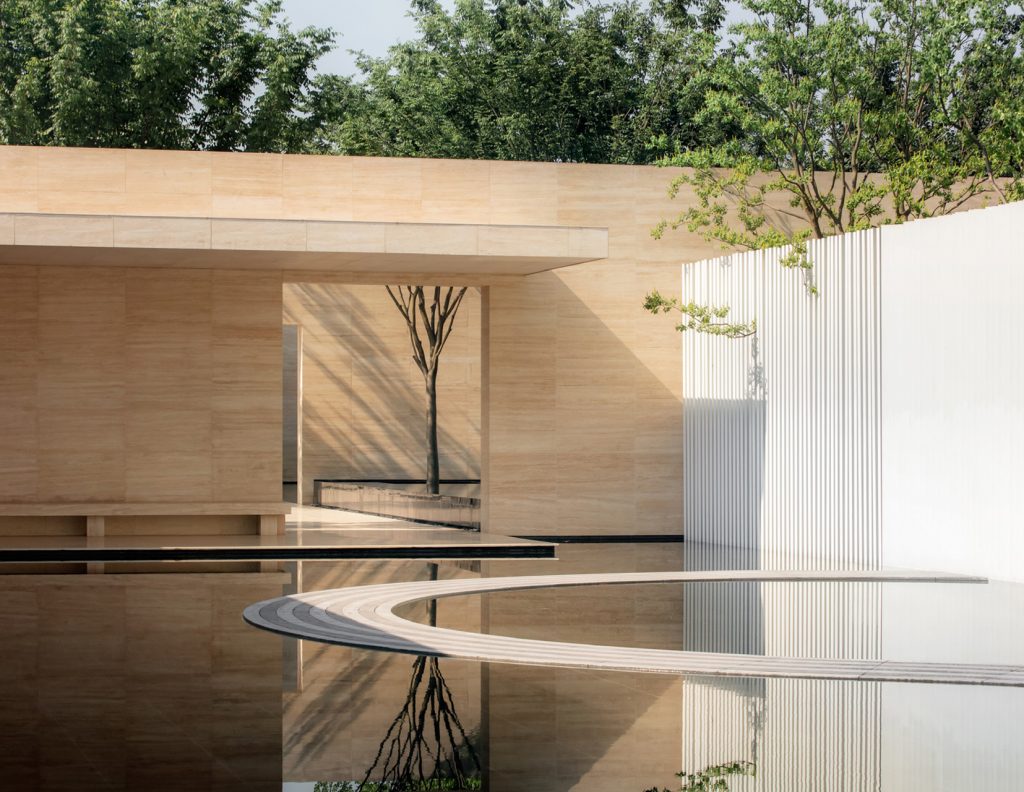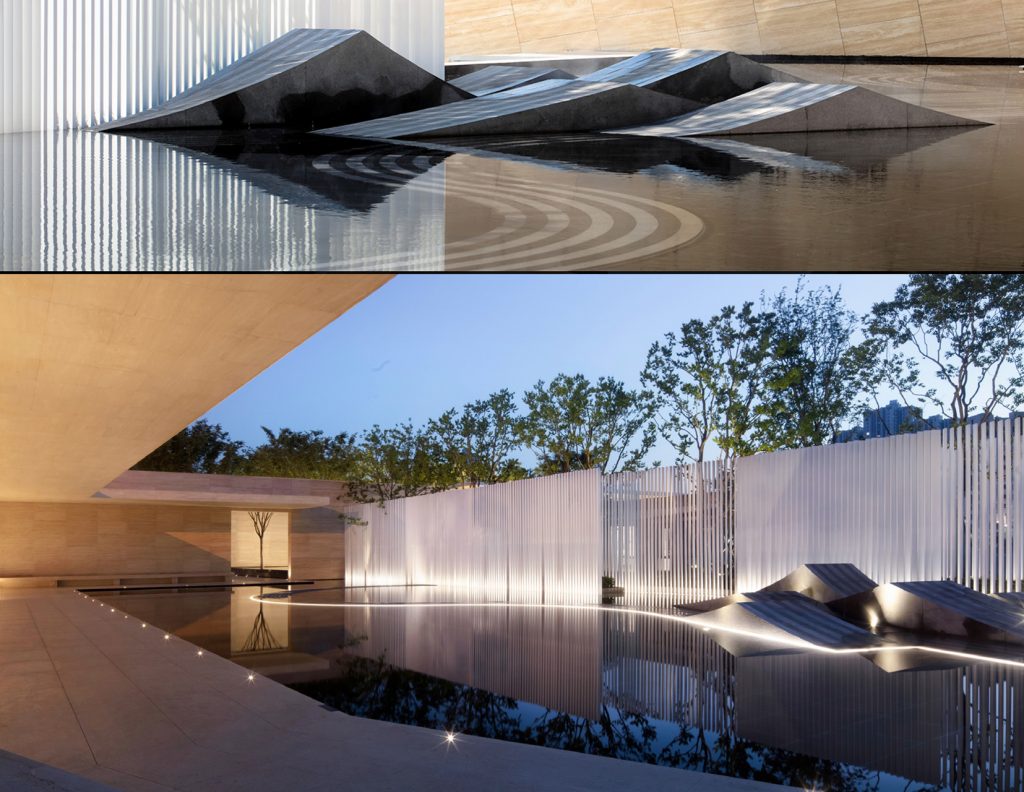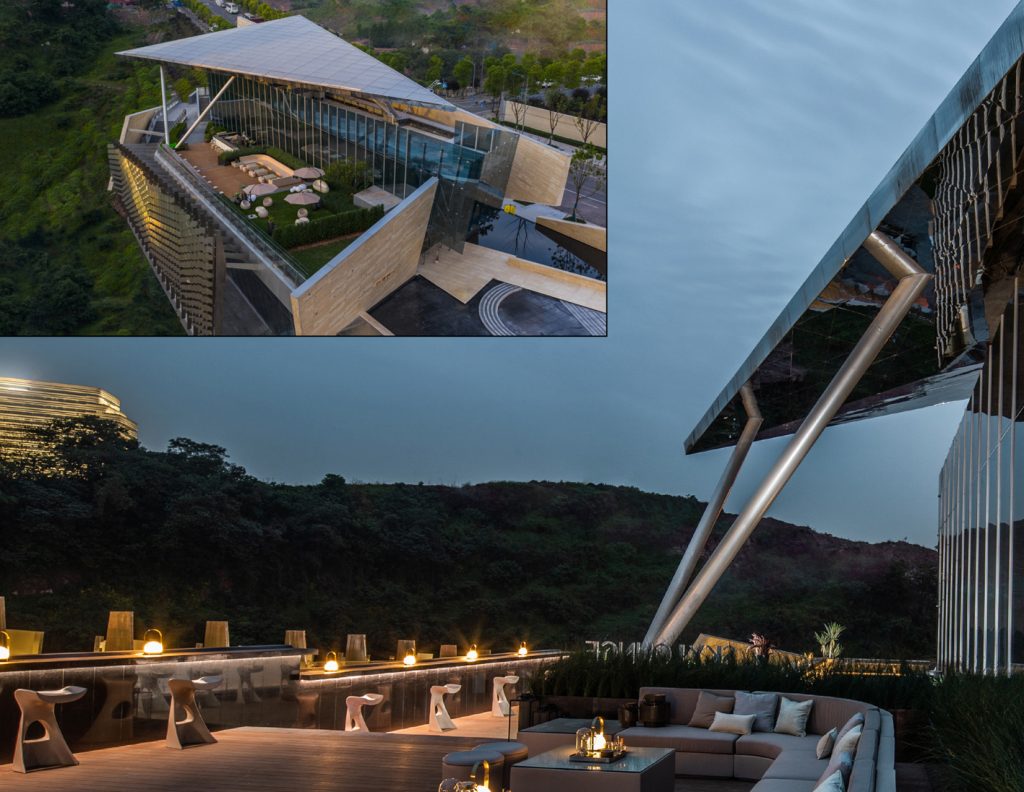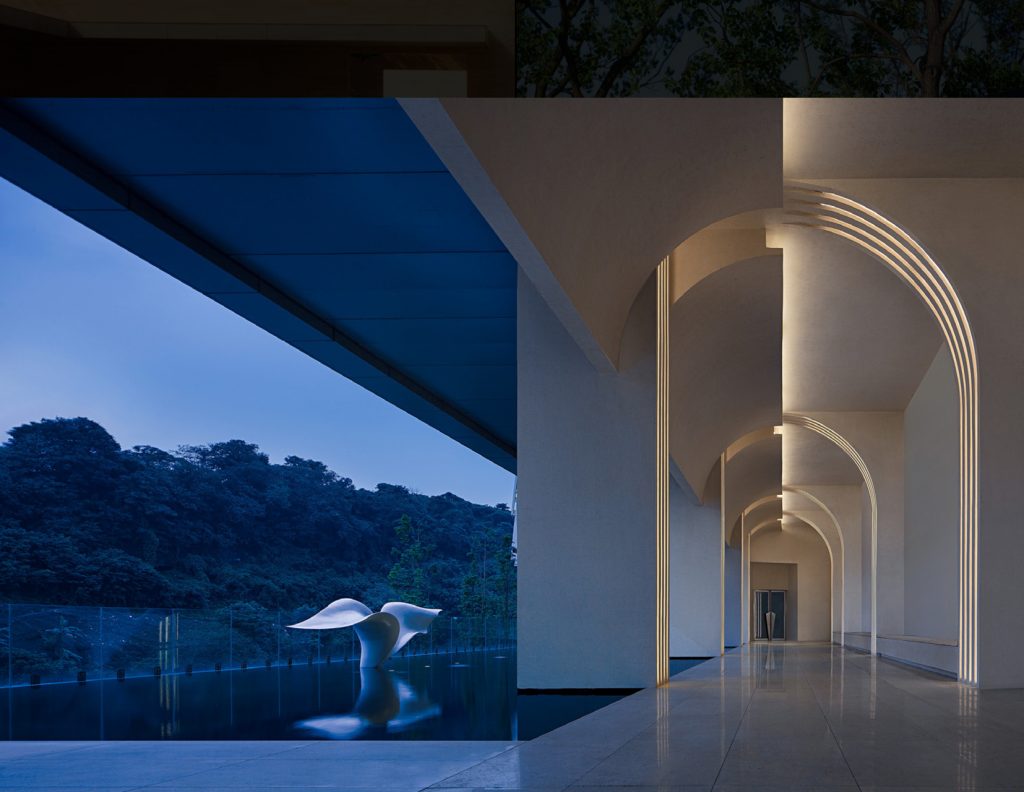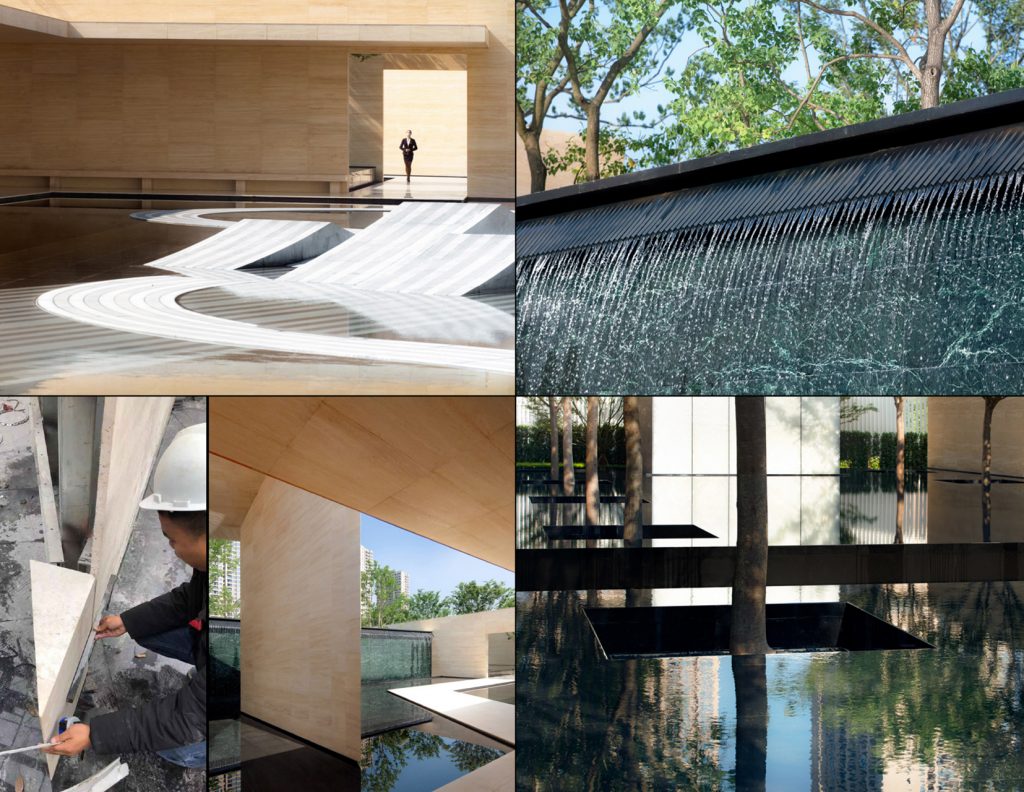2021 Design Awards
Honor Award
Brooklyn Basin Township Commons – Einwiller Kuehl Inc.
URBAN DESIGN
Project Statement
Urban design critic John King of the San Francisco Chronicle described Township Commons as “a startling act of urban reinvention that, with time, should pull people from across the city to an area that until now has been off the map”. The new park welcomes Oakland residents back to their waterfront with a bold and brave definition of a park. An adaptive re-use conceived with a radical imagination, the park is located within the footprint of the former 9th Avenue terminal and is inspired by the shipping and natural history of the site. Select building elements including remnant walls, retrofitted building trusses, and the imprint of loading dock geometry are preserved in the new design, but also are transformed to inspire and allow for new uses—including the creation of containers of coastal low water use plants. The project was immediately embraced by locals for recreational movement and water’s edge gathering. Its success as a first phase of the Brooklyn Basin development has created a strong public identity for the new neighborhood.
Honor Award
Mosswood Park Master Plan Community Engagement – Einwiller Kuehl Inc.
COMMUNITY IMPACT
Project Statement
Championed by place-keeping and a definition of history and historic preservation that includes the last 50 years of social movements and community resistance to structural racism, the Mosswood Park Master Plan is an example of how planning documents can support equity, environmental justice, community stewardship, and community-based design. Beginning with a deep dive into the layers of history at the site, the Master Plan document ultimately defines a framework for planning and future decisions that was identified by the community and identified targeted goals that would promote equity, work against structural racism and disinvestment, and improve environmental justice and sustainability. The Mosswood Park Master Plan is an example of sustainable design that is rooted in equity, community and most importantly has defined measures for accountability.
Honor Award
Oak House – Roche + Roche Landscape Architecture
DESIGN: RESIDENTIAL
Project Statement
For this contemporary rural home, the clients wanted a simple architectural expression to provide a background for their collection of contemporary indoor and outdoor art. Iconic, without ornamentation or color, the home provides a foil for both art and landscape.The landscape architect worked with the client to preserve and protect the existing creek habitat on two sides of the property, the many mature native Oaks throughout, and a small existing grove of Coast Redwoods. Grading and retaining interventions were minimized. Permeable gravel autocourt and paths, and mulch trails allow for percolation of rainfall, and bioretention features planted with natives help to slow and filter the concentrated roof runoff. Planting and irrigation were limited to the areas immediately surrounding the buildings, leaving 60% of the site in its existing state of naturalized annual grasses, un-irrigated and mowed only as needed for fire safety. A simple palette of uncolored board-formed concrete walls, concrete coping and large concrete paving pads with gravel joints set off the dark interior pool, and let the architecture and the plantings shine.
Honor Award
UC Berkeley Haas School of Business Expansion – GLS Landscape | Architecture
DESIGN: GENERAL
Project Statement
Chou Hall, dedicated by Janet Napolitano and declared the “greenest academic building in the United States,” caps the two-phase reconceptualization of the Haas School of Business and updates architect Charles Moore’s final work. The building complex, nestled in the hills at UC Berkeley, embodies many of Moore’s postmodern themes, and includes a rambling series of courtyards and rooms stepping down a steep slope. His courtyard design offered frequent spatial divisions defined by raised planters, which incorporate a variety of curves and angles. While the informality of these planters fostered spatial intimacy, it no longer accommodated the diversity of programming required by the growing school. To modernize Moore’s intimate courtyard spaces, strengthen the civic core of the campus, and accommodate a growing student population, the landscape architect focused on openness and programmatic flexibility, so that the business school could accommodate large gatherings such as commencements and fundraisers, while improving the heart of the school as an intimate civic and collegial space.
Merit Award
Art House – Andrea Cochran Landscape Architecture
DESIGN: RESIDENTIAL
Project Statement
On a steep hillside in San Francisco, a terraced garden is seamlessly integrated with the architecture to create a series of intimate, flexible outdoor spaces. The design team worked with the client to accommodate a desire for flexible entertainment spaces by creating a series of stacked gardens as well as a green roof. Taking advantage of the steep down-sloping yard, the landscape architects carved into the hillside to create a lower, more secluded, and partially enclosed entertainment space with spa and fire feature. The cabana’s roof allows year-round use while also serving as the terrace and viewing platform to the outdoor living space above. Working closely with the architects to maintain a unified concept and the design goals, the team was able to cohesively blend interior and exterior, maximizing functionality for the client and capturing breathtaking views of the surrounding landscape at each level.
Merit Award
Better Place Forests, Point Arena – Fletcher Studio
DESIGN: GENERAL
Project Statement
Within these protected forests, families choose trees to mark the place where they’ll spread their loved ones’ ashes over generations. The concept has a simple poetry — merging ritual, memorial, and forest conservation — yet its realization involved a large team of design and technical specialists, led by the submitting landscape architecture firm. The project establishes a framework for future sites, each with their own unique qualities.
The submitting landscape architecture studio was selected to design America’s first forest spreading cemetery. The Client offers an alternative to the traditional cemetery, a conservation system of tree sponsorship that preserves, restores, and manages large forests in the US. The studio acted as the prime consultant and assembled a team of forest ecologists, artists, designers, and other consultants to realize the first project in Northern California. Their work included master-planning the property, designing structures, spaces, trail systems, wayfinding and signage, the life marker, and habitat restoration.
Merit Award
Buchanan Mall – Office of Cheryl Barton
COMMUNITY IMPACT
Project Statement
In 1975, following years of destructive “urban renewal” programs in San Francisco’s predominantly African American Western Addition neighborhood, five blocks of Buchanan Street were converted into a pedestrian boulevard, known today as the Buchanan Mall. The surrounding neighborhood suffered from the effects of the drug epidemic in the 1980s and 1990s, with increased crime and violence creating an atmosphere of fear in the Mall. This fear persisted until recently when a multi-disciplinary project team undertook a unique and ambitious public outreach effort involving the programming and design of the park by community members themselves.Together, the community and design team developed a capacity for reflective listening – synthesizing objectives and ideas into a coherent, compelling design. The outcome is a concept design that addresses the community’s primary concerns and connects the five park blocks through key design strategies: developing functional exterior spaces that promote community, connectivity, and socialization; providing accessible circulation and wayfinding; clarifying boundaries between public and private spaces; renewing the existing streetscape; and celebrating the neighborhood’s story and culture through visual, artistic displays.
Merit Award
Crane Cove Park – AECOM
DESIGN: GENERAL
Project Statement
In a time of a global pandemic when cities have realized more than ever that open space is critical for the health of their residents, Crane Cove Park opened in September in 2020 with great excitement and anticipation. Located in Dogpatch, San Francisco’s fastest growing neighborhood, this 7-acre park provides a new major open space in an area that historically has lacked it. Crane Cove Park is one of the first major open space projects along the Blue Greenway, a network of bayfront parks that aims to improve Southeast San Francisco. It’s also the first park built in Pier 70, a historic district with a master plan being carried out by the Port of San Francisco within a 69-acre, former shipbuilding site. The site has experienced a transformation from a closed industrial site to what is now a thriving, active waterfront park. The design embraces and celebrates the site’s rich maritime history while also integrating new access to the water and diverse recreational program.
Merit Award
Dolores Street Pollinator Boulevard – BASE Landscape Architecture
COMMUNITY IMPACT
Project Statement
The Dolores Street Pollinator Boulevard is an urban resiliency project that creates healthy and diverse ecosystems, cultivates community, and revives the civic values of one of San Francisco’s landmark streets. Located in The Mission, an iconic neighborhood that struggles to maintain its identity of refuge and diversity, the Pollinator Boulevard is a ribbon of habitat that redefines street median space in a beautiful and ecologically meaningful way. This highly visible project fosters community building and stewardship for critical habitat and vulnerable species in an underutilized space. By reviving the historic intentions of a splendid landscaped boulevard, islands plagued with brown turf and invasive weeds are replaced with smart pollinator plantings that better reflect the colorful and diverse character of the neighborhood and respond to the ongoing water shortage in California. Via a non-profit, the project mobilizes the voices and actions of local residents, city officials, businesses, educators, scientists and volunteers seeking to find enduring solutions for contemporary urban design challenges.
Merit Award
Dongguan Cental Park Area – SWA Group
ANALYSIS & PLANNING
Project Statement
Dongguan, known as the “world’s factory,” is a typical decentralized manufacturing city located in China’a Guangdong-Hong Kong-Macao Greater Bay Area. The city intends to establish a new, strong CBD, with a livable environment and distinct cultural identity, to attract talented generation and complete industrial upgrading. Bolstering the area’s case for livability is the 32-hectare Dongguan Central Park, which was envisioned as the catalyst for the city’s new growth and evolution. Thorough soil, water, and planting strategies set up a healthy base for habitat establishment; creative use of local materials strengthens the sense of cultural identity; and multi-layer development take full advantage of the city’s last piece of undeveloped land, resulting in a one-stop, all-day social and recreational destination. Dongguan Central Park breaks the mold for many parks in China, which tend never to change once developed. Inspired by the hardy roots of the native banyan tree, the park is designed as the seed of a living system: sprouting out of the compacted urban ground, permeating into dense development, and evolving along with its surroundings.
Merit Award
Everyone Deserves a Garden: Ping Yuen Public Housing Rehabilitation – SWA Group
URBAN DESIGN
Project Statement
As the first public housing in San Francisco’s Chinatown, Ping Yuen is part of a dark legacy of urban segregation and represents a century-long history of Chinese Americans’ struggle for justice and equity. The development, which was completed in 1961, can house 434 lower-income families. It is an environment with strong mutual support and sense of place; however, it has suffered from underfunded management, sporadic maintenance, crime, and deteriorating infrastructure over the years. In 2014, after the project was transferred from San Francisco city government to Chinatown Community Development, improvement was initiated to upgrade the overall atmosphere. “Everyone deserves a garden” was the driving precept for the design, which mixes California native plants with traditional Chinese garden species in a sophisticated combination of cultural and local texture. The rehabilitation de-institutionalizes the development, replacing spear-pointed gates with entry portal facades and employing eccentric, gardenesque plantings, residential furnishings, and natural materials, signaling a dramatic shift in the perception of the space.
Merit Award
Felton Library Discovery Park – BASE Landscape Architecture
DESIGN: PARKS, RECREATION, TRAILS, OPEN SPACE
Project Statement
The Felton Library Discovery Park is an innovative outdoor space, designed as a sanctuary for pollinators, learning and play. Adjacent to a new creek-side library, the park cultivates a relationship between visitors and the natural world around them; weaving together creek restoration, educational nature play, and an interpretive loop trail to create a captivating community park in the old-growth redwood coasts of Santa Cruz County. The park drew upon community outreach events to create a conservation-forward design which extends the library’s spirit of wonder and discovery out into the landscape. The park includes the removal of a culvert, two new bridges which span the creek, riparian restoration, a pollinator habitat garden, a learning demonstration area with watershed exhibits, a tot gravel dig area, a stage and amphitheater with musical instruments, a nature play area with climbing and balance logs, a giant nest, a human sundial, a quiet gathering area, and cultural and environmental educational exhibits on the trail.
Merit Award
Independence Drive – Thuilot Associates, LTD
DESIGN: GENERAL
Project Statement
As the first phase of a new high-tech campus, the primary goal of this landscape project was to seamlessly link an eight-story office building, adjacent parking garage, café, and fitness center. Utilizing a unifying materials palette, bold forms, and an elegantly simple planting scheme, the landscape design organizes the site’s complex constraints into a dynamic arrangement of comfortable plazas, walkways, and street frontage. Stylistically different from the architecture, the landscape creates usable spaces that complement yet function independently from the site structures. The project is certified LEED Gold.
Merit Award
Ningbo Lion Mountain: Transforming Topography into Community Infrastructure – PLAT Studio
ANALYSIS & PLANNING
Project Statement
Located between central Ningbo, China and nearby scenic landscapes, Ningbo Lion Mountain is poised to provide vast ecological and recreation benefits by linking local open spaces. Rising 82 meters above agricultural villages within a developing mixed-use district, the site has remained largely inaccessible. The steep topography and lack of paths has left it undeveloped but also under-utilized.
Ningbo Lion Mountain is at the heart of the 2019 Jiangbei District masterplan that envisions new recreational linkages which take advantage of the site topography. The design proposes strategic access points and a comprehensive network of various paths and programs to connect the park to its urban interface. This framework prioritizes ecological regeneration and innovative programming to support climate resilience and community health.
Merit Award
Slot House – Arterra Landscape Architects
DESIGN: RESIDENTIAL
Project Statement
Sited in the midst of an oak woodland in the Los Altos Hills, the striking modernism of Slot House called for a decisive but restrained approach to its landscape plan, with colors and textures that stand up to the home’s bold forms yet soften its angularity. A minimal palette of warm tones on the house and paving, pops of red in plants and an architectural fountain, and a living roof with a succulent garden add interest and invite exploration while deftly integrating the home into its hillside site.Hardscape, plantings and a three-tiered fountain direct arrivals from the auto court through the home as it descends on its sloping grade, then outside again to an expansive view into the Foothills Open Space Preserve. Porcelain tile terraces and patios, a fire feature and infinity-edge hot tub extend the living spaces and offer varied experiences for large gatherings as well as intimate moments. Gravel paths leading to a secluded seating area and bench overlook offer a sense of discovery and maximize exploration of this special site.
Merit Award
SunCity Tachikawa Showa Kinen Koen – SWA Group
DESIGN: RESIDENTIAL
Project Statement
Showa Memorial Park, in the western Tokyo suburb of Tachikawa, opened in 1983 to commemorate the 50th anniversary of Emperor Showa’s reign. The 400-acre national park repurposed a former Japanese military airfield and postwar-era US airbase, which was returned to the Japanese government in 1977. Tokyo’s largest park, Showa Memorial Park, has become a national treasure and the ideal setting for Japan’s premium senior living brand, SunCity by Half Century More. In 2018, HCM opened its newest senior community: SunCity Tachikawa Showa Kinen Koen. Bordered on the east and south by a great park, this flagship LPC (life plan community) provides 501 independent living units and 91 nursing units on a 9-acre site. The Japanese garden design technique shakkei, the principle of borrowing nearby or distant scenery, became the guiding precept behind the site planning and landscape design. The borrowed woodland edges of Showa Memorial Park and sensitive building layout, in conjunction with the introduced landscape, reinforces the experience of being “in the park” at this landmark senior community in Japan.
Merit Award
The Journey – University of California at Berkeley
STUDENT AWARDS
Project Statement
The project transforms San Bruno Mountain’s quarry into a cemetery, takes the current topography and has some regrading to transfer the quarry to a resting place- a space that keep away from outer worlds and close to nature. The aim of this memorial design is to create a place not only full of grief but also a place of hope and comfort, the pain is real, but life goes on, and we will eventually meet somewhere. The changing emotions inform the design of the space, and people will eventually feel the encouragement and comfort that landscape brings.
Merit Award
YIFANG Art Center – YIHE Landscape Architecture
DESIGN: GENERAL
Project Statement
Once an unfinished, abandoned concrete structure, the YIFANG Art Center has become the heart and soul of a new community in the Dazhulin district of Chongqing. This structure’s masterful adaptive reuse provides essential social gathering opportunities for the new community, from an indoor swimming pool and gym to the sky bar, multi-purpose rooms, and art gallery. The space not only houses art and sculptures but is an exhibit in and of itself. The design takes cues from the region’s geography as a transitional area between the Tibetan Plateau on the Yangtze River banks by placing water as a central organizing element of the site’s many rooms. Principles of traditional Chinese garden design are artfully woven into each room in a contemporary way: the denial and reward, the hide and reveal, while reflection, shadow, and light blur the lines between structure and landscape. A striking transformation from the empty concrete box it once was, the YIFANG Art Center provides community cohesion and social support for the growing Dazlhulin community through a celebration of art and culture.


